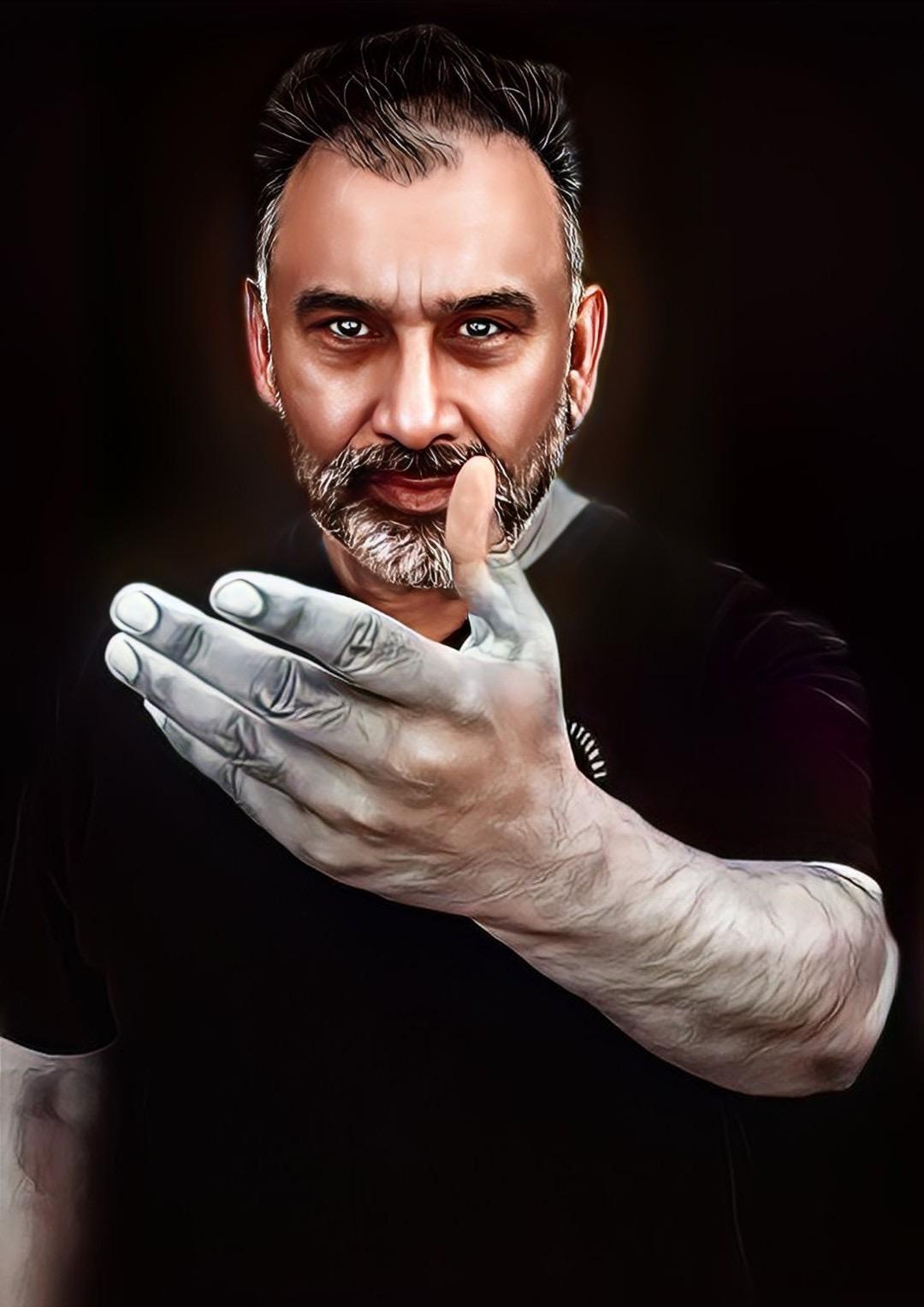
48 minute read
Note
Welcome to Volume 26 of Lift Hands Magazine!
I hope that you are basking in the summer sunshine wherever you happen to be and have had a good year thus far.
May and especially June have been extremely busy months. I had suspected already that June would be the one that may cause a slight delay to the publishing of the current issue — it did! However, luckily, the delay was not too long.
There were many events happening over the past few weeks. June saw Kaizen Adrenaline return to Nottingham at a new larger venue. We will have a report with Lucci Del-Gaudio [LDG] hopefully in the September issue. Further, the beginning of July gave birth to a brand new 3 day event — The Festival of Martial Arts. Again, I’m hoping to interview the 2 brains behind that event — LDG and Matt Stait for the next issue as well.
Further, we will be introducing a ‘Book Review’ segment from the September issue onwards. So, if you have any good books to review — please forward your reviews to myself via the usual channels.
The current issue is once again jam packed with absolutely amazing articles!
Katherine Loukopoulos Sensei has produced another brilliant article from her archives with some amazing photos and once again, a couple of her students have stepped up with two excellent articles of their own.
We have another excellent article by Colin Power — a must read if you like to kick things!
Dr Greg Lawton continues with his amazing Asian Medicine Series. I cannot emphasise enough that those who are interested in the healing aspects, read this. As I mentioned in the previous Note… Dr Lawton has kindly provided the readers of Lift Hands with a certification program for those who complete the study modules provided at the end of each article via an online link.
I would like to thank Yasser Bilgrami Sifu for taking the time out of his extremely busy schedule to answer our 20 Questions. 20 Questions is one of my favourite segments of the magazine. It still amazes me how the same questions produce such a diversity of answers.
I managed to grab some serious talent to answer our 20 Questions at Kaizen. These will appear in the September and December issues. I promise you, you will not want to miss any of those!
I’m going to be busy prepping for my August Camp here in Leicester and once that is done, I’ll be back in editing mode for Volume 27 appearing in September.
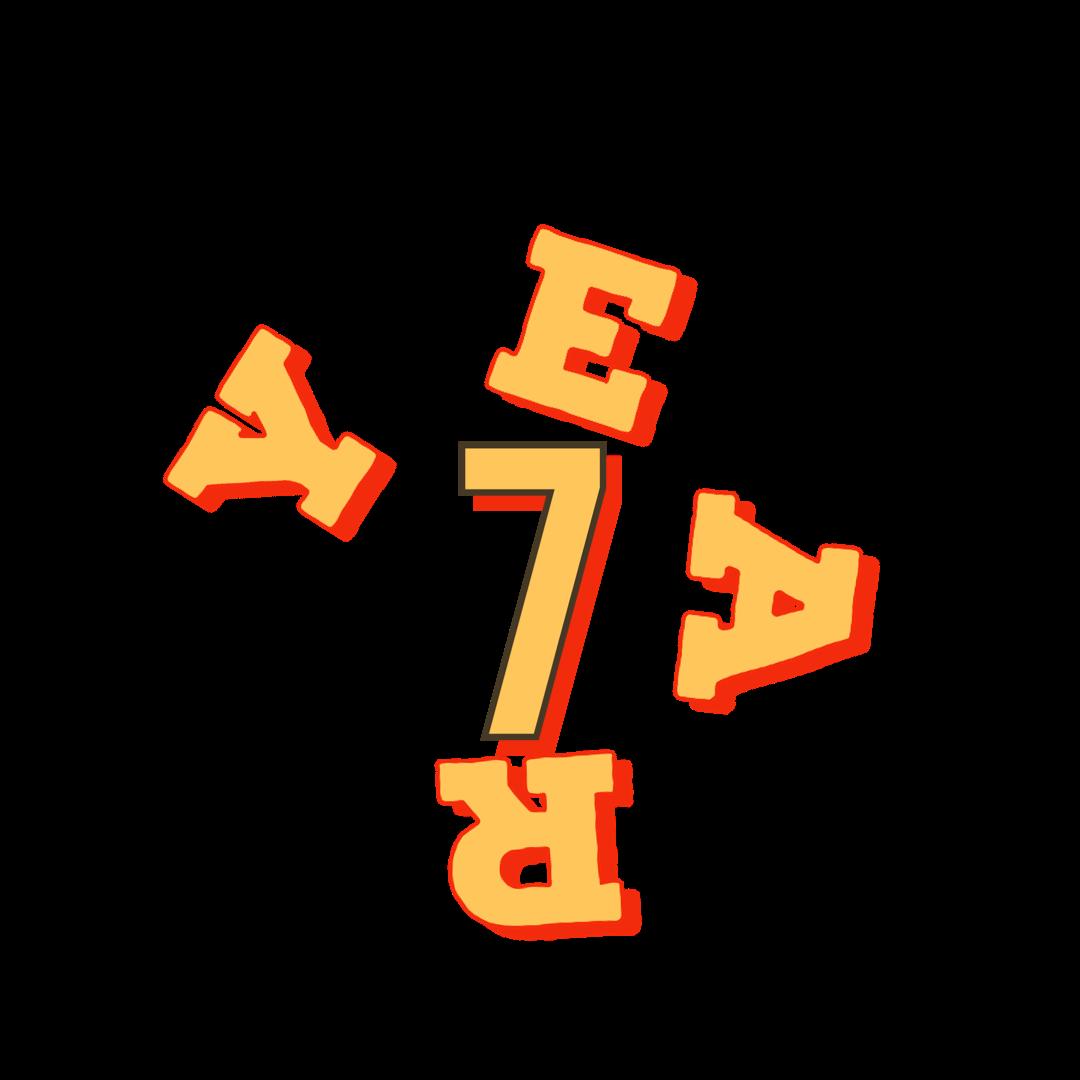
Please keep your articles coming in. Lift Hands has developed its own niche readership around the world, and folk are really enjoying reading ‘old school’ articles with solid information and heart — this is what separates us from the rest.
My thanks to everyone who has contributed and helped with the current issue, both with articles and behind the scenes.
See you all in September and have a safe and fun-filled summer!
Happy training
105 Countries

31K Readers
Albania
Algeria
Argentina
Australia
Austria
Azerbaijan
Bangladesh
Belarus
Belgium
Bolivia
Bosnia & Herzegovina
Brazil
Bulgaria
Cambodia
Canada
Chile
China
Colombia
Costa Rica
Cote D’lvoire
Croatia
Cuba
Cyprus
Czechia
Denmark
Dominican
Republic
Ecuador
Egypt
Estonia
Fiji
Finland
France
French Guyana
Gambia
Germany
Ghana
Greece
Guatemala
Hungary
Iceland
India
Indonesia
Iran
Iraq
Ireland
Israel
Italy
Japan
Jordan
Kazakhstan
Kenya
Korea
Kuwait
Kyrgyzstan
Laos
Latvia
Lithuania
Macedonia
Madagascar
Malaysia
Malta
Mauritania
Mexico
Moldova
Morocco
Mozambique
Myanmar
Nepal
Netherlands
New Zealand
Nigeria
Norway
Oman
Pakistan
Palestine
Paraguay
Peru
Philippines
Poland
Portugal
Qatar
Romania
Russian Federation
Saudi Arabia
Serbia
Slovakia
South Africa
Spain
Sri Lanka
Sweden
Switzerland
Taiwan
Tanzania
Thailand
Tunisia
Turkey
Ukraine
UAE
United Kingdom

USA
Uruguay
Venezuela
Vietnam
Zimbabwe



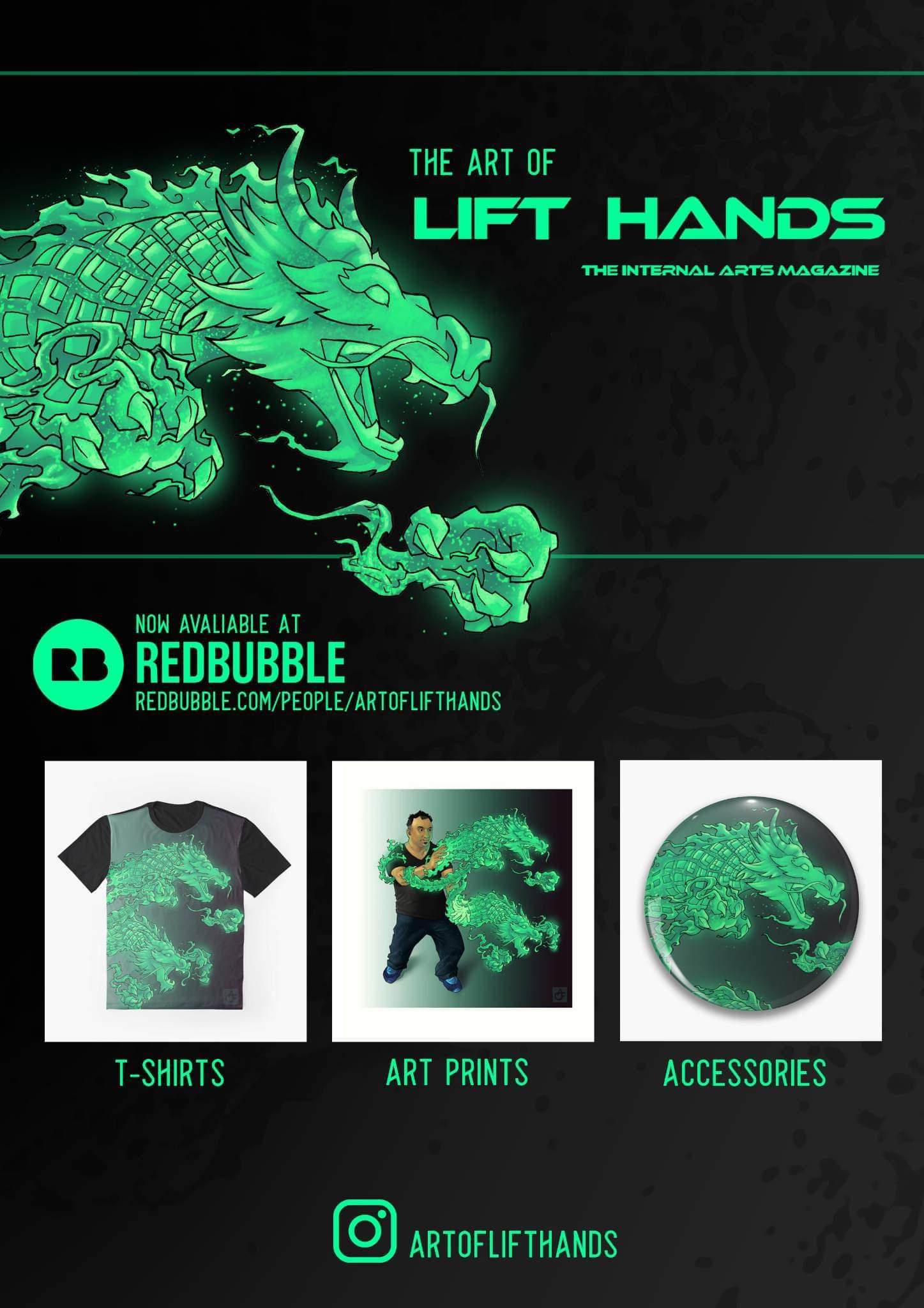
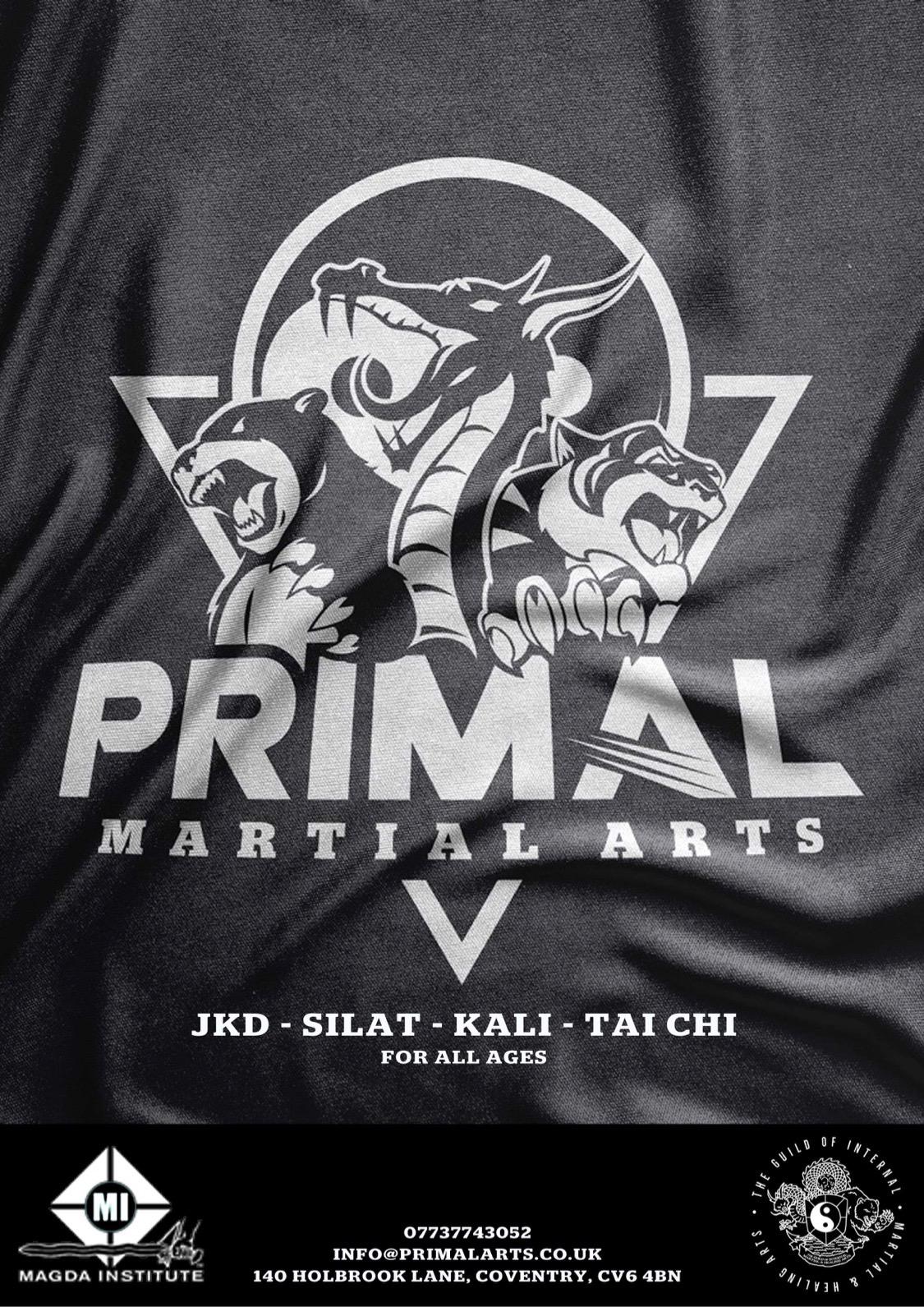
Acouple of years back, a great martial artist from Harlem New York passed away.

That person's name was Abdul Musawwir. While we weren't particularly close, he is the reason for the particular title of this article. I basically don't like titles such as master or grandmaster, but if anyone was a grandmaster of martial arts, Abdul would easily qualify for that title.
He trained with an illustrious group of people who were probably grandmasters themselves, we ended up meeting under the tutelage of Master Jou, Tsung Hwa. Once, a very long time ago, Abdul had a school way on the East side in Harlem. This had to be about almost 4 decades ago. He had previously asked me if I knew Taiji Sword to which I replied yes. I was invited to his studio where there were only the two of us. He sat on a high chair and asked me to demonstrate the form, which I did. I remember that the floor was extremely slippery, and I was wearing rope soled kung fu shoes at the time. He then asked me to do it again and I repeated it a 2nd time. I don't remember what happened after that, but it was interesting. No one was at least openly playing the authentic forms that we were learning from Master Jou at the time. We only started calling him Master Jou, after the Taiji Farm was initiated around 1984. Abdul and I would run into each other from time to time, but not in Harlem.
Being that instructors in the Black community as a whole don't or didn't socialize that much except possibly if they lived in the same neighborhood. My instructor Larry Banks and I weren't really involved in the Harlem scene, as Larry didn't need the money anyway working in the film business and being honored at the Schomburg having shot the movie "Juice" and also working with the likes of Forest Whitaker on "Strapped". Although I did have a few disagreements with Abdul, I did have a particularly nice talk with him when I was inspired to visit him unannounced in a part of Central Park in Harlem.
I had wanted to show him what I call "The Dao Of Movement". It is the culmination of my having practiced up to about 5 fist sets in 3 different styles of Taijiquan. The class was basically leaving, and after a while he and I were alone. He had this walk to make and so we walked together while I carried his bag. He asked me if I knew the 2 person barehanded form to which I replied yes. I could do both sides [A&B] by myself, and possibly stumble through it with someone who was very good at it at that time.
Anyway, I wanted to talk to him about a group or system of exercises that Master Jou had taught, but I couldn't remember the name of them. Mike Goldstein who remembered everything that Master Jou had said, didn't seem to know! Bob Arietta, who probably did the exercises the best clearly didn't know, but as I was struggling to get the subject across to Abdul, he said, "Oh yeah, the matching!” I have written about this a little previously. During our walk through Central Park, I remember Abdul Musawwir stating to me that he felt that he had been used in what I believe was a series of events, and that he wanted to do something in the Bronx [which he did]. He also said to me that he wanted to give workshops more than teaching classes, and I think that he said that he was getting tired of traveling so much. Larry Banks had previously once told me the same thing.
I have pretty much stopped practicing form, and one reason is that after working with stances intensely and mastering the art of totally formless movement, I have in a sense gone beyond it into unknown territory. In this instance though, I initially wanted to move in a way of being able to deal with all types of martial artists in terms of sparring, but "The Dao Of Movement" deals with the Dao of all movement. Be it dance, sports, martial arts, choreography etc...
Now, I find myself entering something even more mysterious. I want to and have been creating variations of master Jou's Torso Method Exercises. I don't even know what I'm aiming to accomplish this time!
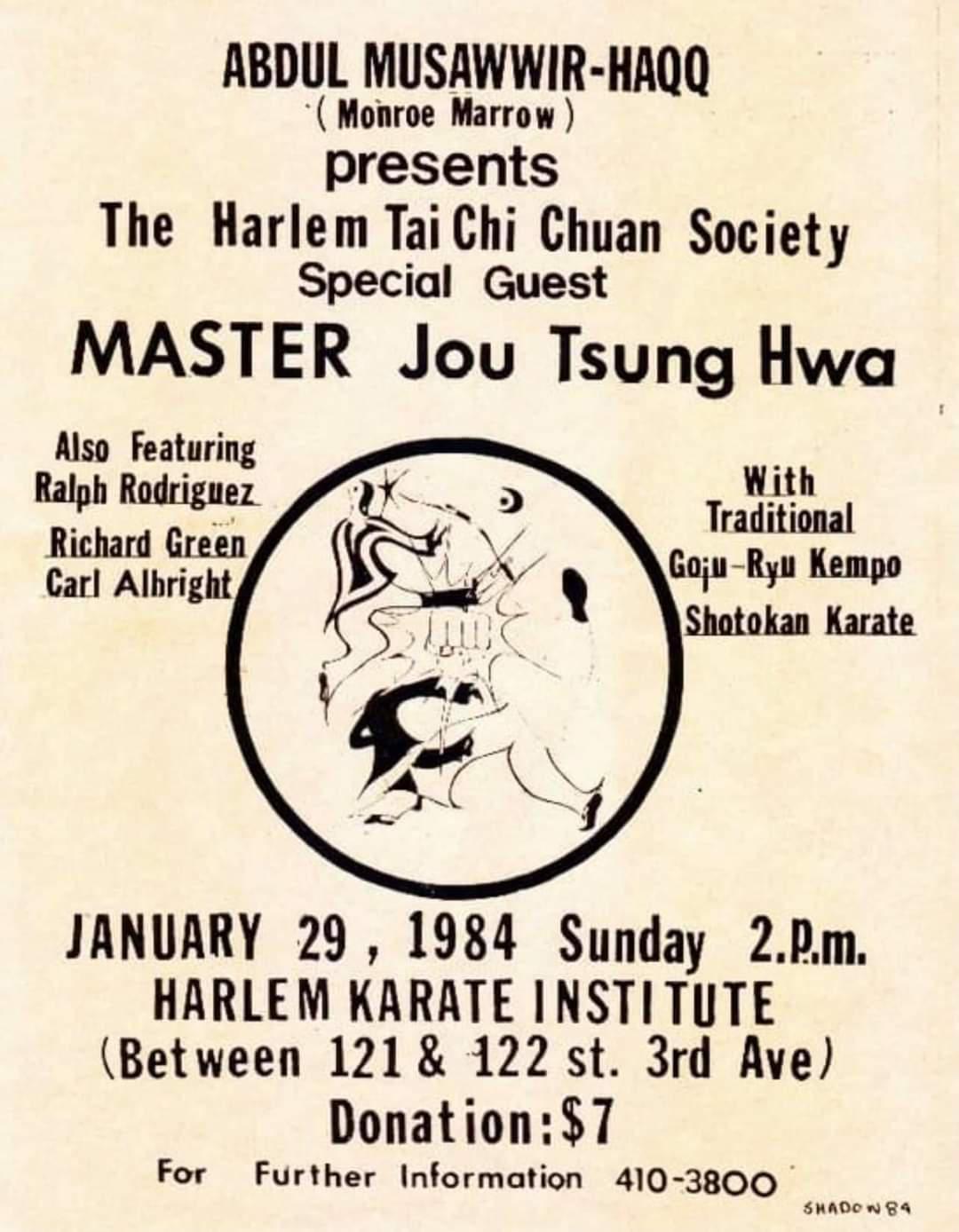
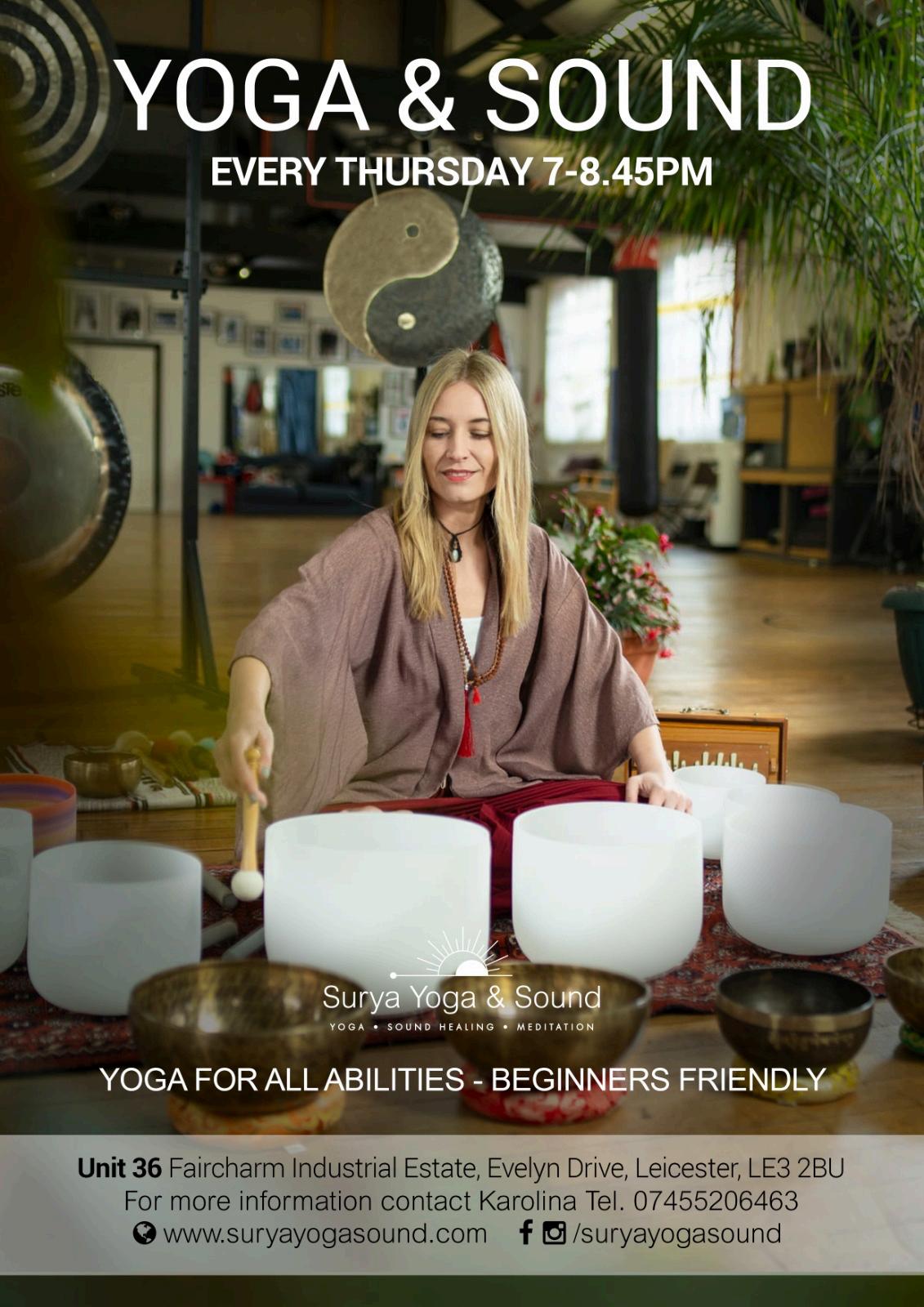

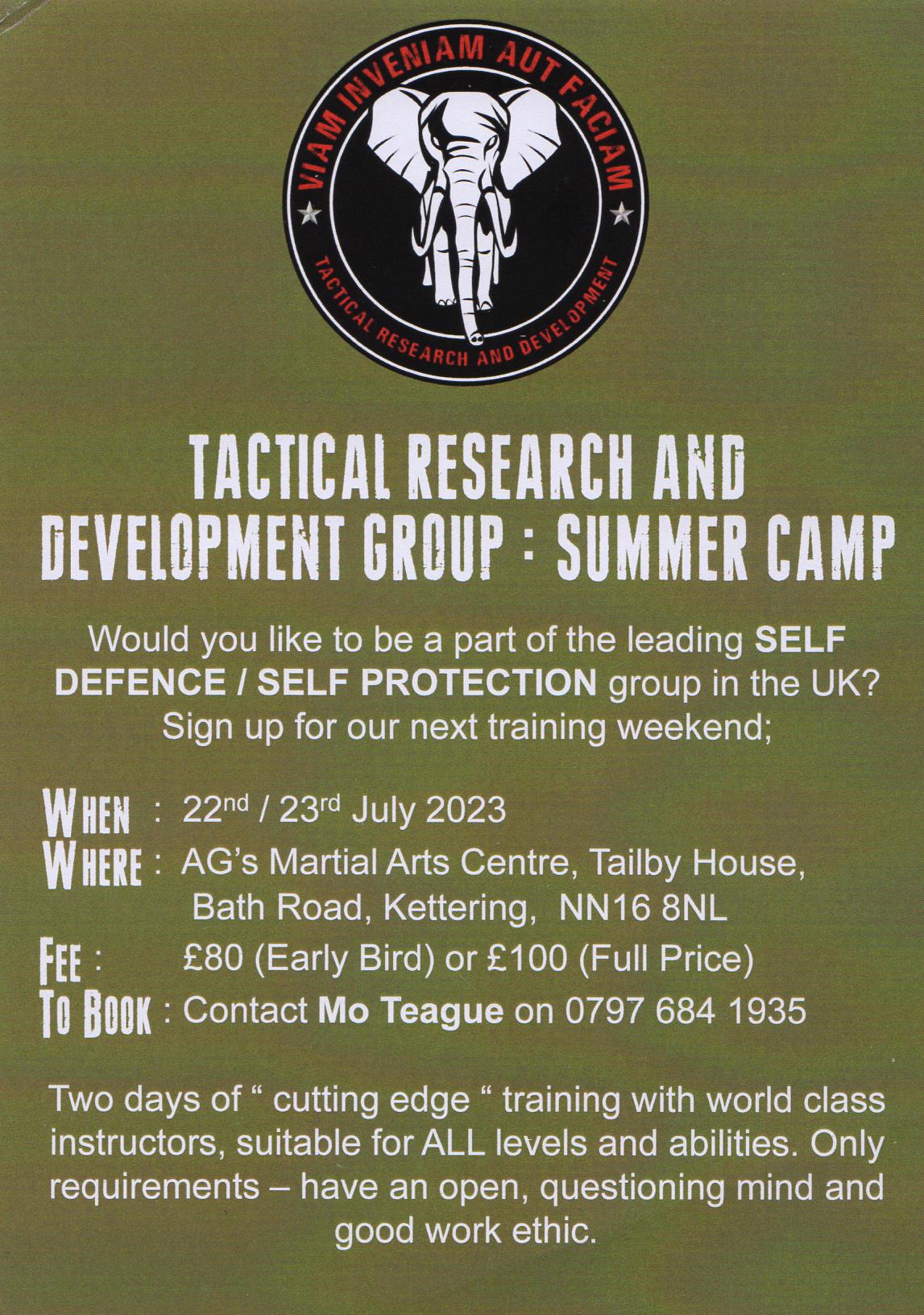
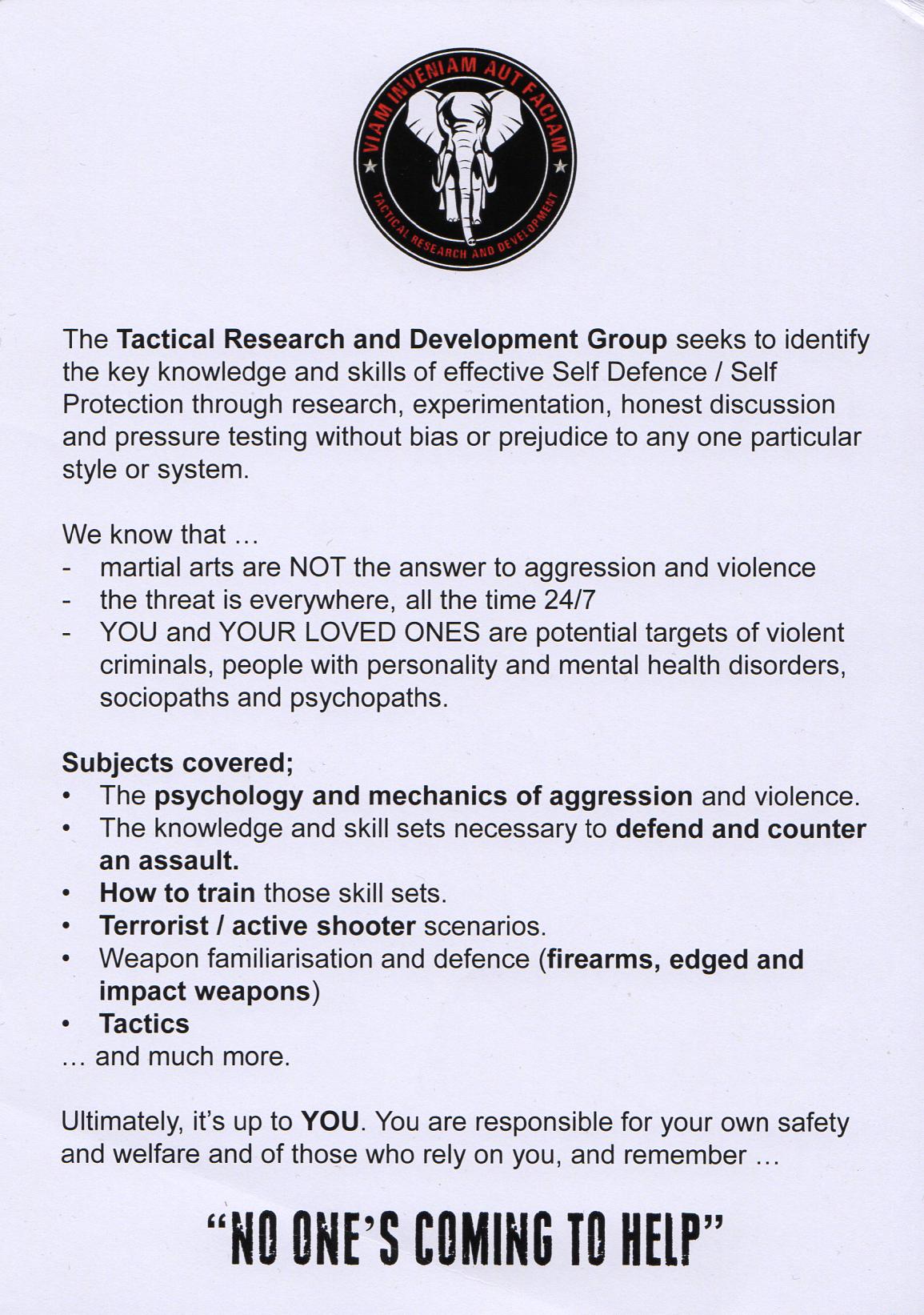
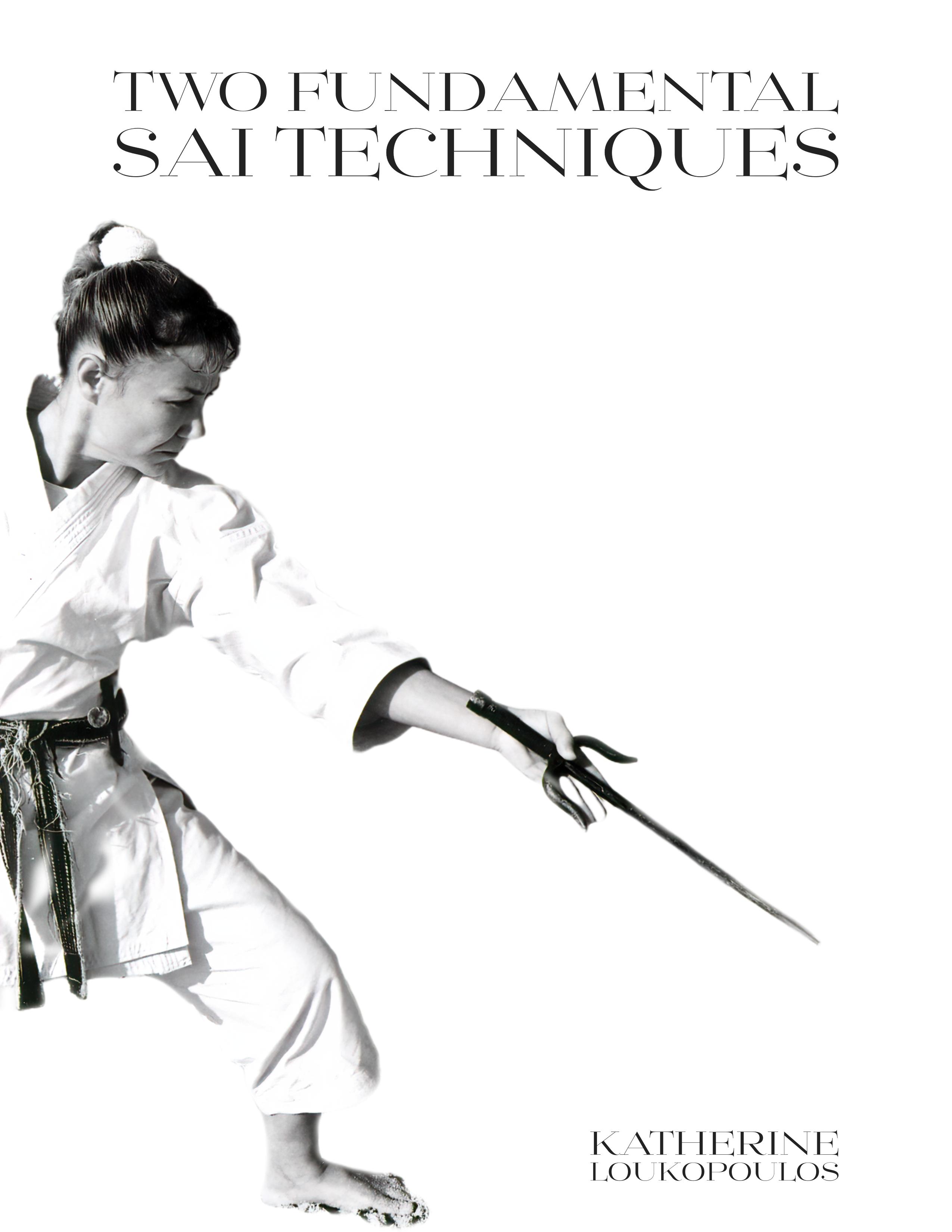
The Sai, [Japanese 釵, lit.☐'Hairpin'; Chinese 鐵尺, lit.□'Iron Ruler’] is a traditional Okinawan stabbing weapon used for stabbing and striking.
It is primarily used in ninjutsu and kobudo, as well as in southern Chinese martial arts. The basic form of the weapon is that of a sharp metal prong with two sharp and curved side prongs (yoku) projecting from the handle (tsuka). There are many different types of Sai with varying prongs for trapping and blocking.
Source: Wikipedia
Before its creation on Okinawa, similar weapons were already being used in other Asian countries including India, Thailand, China, Vietnam, Malaysia, and Indonesia.
Source: Donn F. Draeger & Robert W. Smith (1969). Comprehensive Asian Fighting Arts. ISBN 978-0-87011-436-6.
On Okinawa, the Sai was used by domestic police (ufuchiku) to arrest criminals and for crowd control. Use of the Sai in Japanese martial arts was improved in 1668 by Moto Chohei, an Okinawan prince.
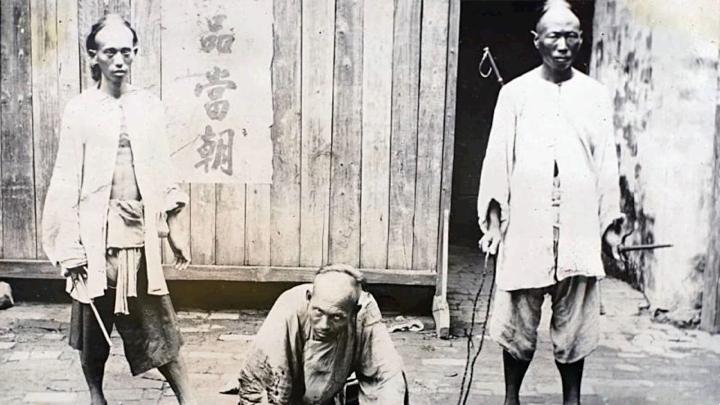
Source: Kanenori Sakon Matsuo. The Secret Royal Martial Arts of Ryukyu. BoD – Books on Demand, March 31, 2005.
Alot has been written about the origins and multitude uses of the Sai. In Japanese language there is no plural; a single Sai or many Sai is understood from the conversation context. Suffice to say that the Sai comes in a pair; therefore two Sai (one on each hand). Often a third Sai is concealed behind one’s back.
Nowadays we wear a Karate Gi with a belt. The third Sai is secured behind one’s belt which is made from a thick material, and passes around the waist two times. In the days bygone how was it concealed? This leads me to believe that depending on the clothing one could or could not secure a concealed third Sai. Also, it would make a difference of the Sai’s size and/or weight if it could easily be concealed or not. Nevertheless, it was done!
There are 13 Okinawan Sai Kata approved for tournament competitions on Okinawa; plus, many other Kata which are not on the list.
Source: http://okic.okinawa/en/archives/news/p1140
All the Sai Kata share the same basic fundamental; that is, in order for Sai to work as a weapon, extending it, and retrieving it needs to be executed blindly fast, and laser beam accurate.
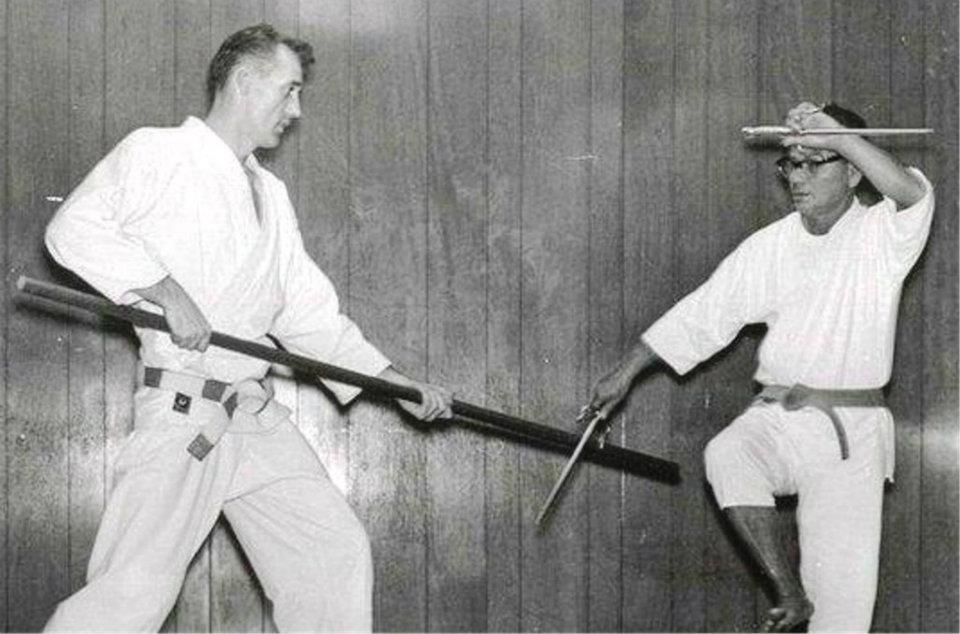
Nakahodo Tsudomu Sensei of Uechi Ryu Karate Do has a perfect extension of the attacking arm. If one draws a line from the tip of the Sai to Sensei’s eyes, one can observe the piercing laser beam of the attack is a straight line. At the same time, if we magnify the photo, we can see the Sensei’s little finger is not on the Sai because he is already getting ready to retrieve it. Sensei’s left hand is fully pulled back as well as his hip. In other words, already he is getting ready for his next motion. This technique is contained in all Sai Kata because this is the function of the weapon.
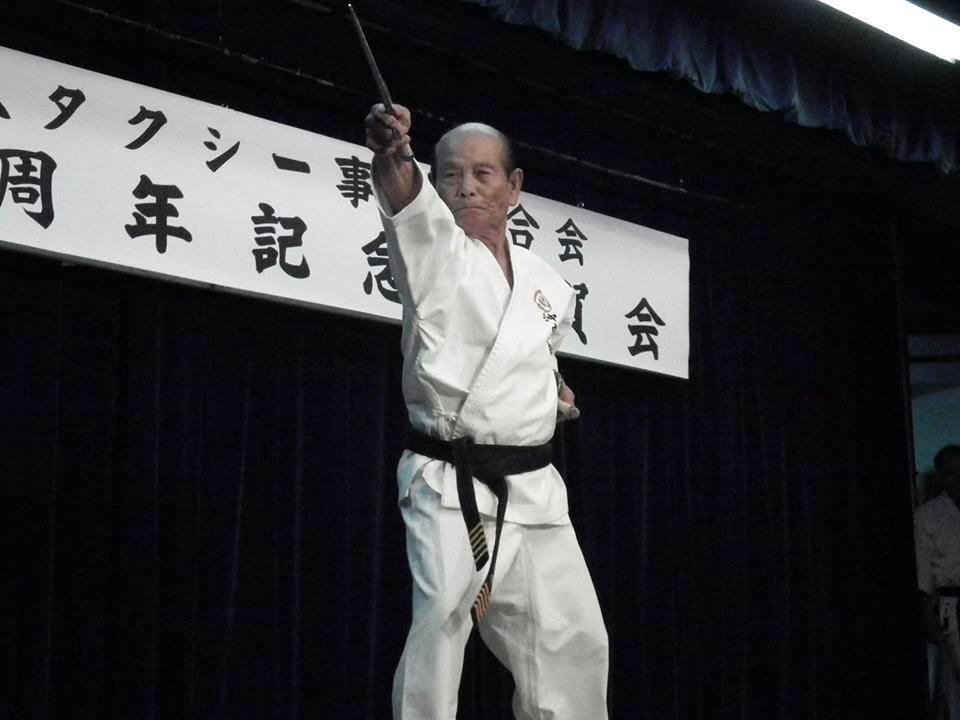
Use the long portion of the Sai for blocking and attacking against a long weapon; thus, one can maintain a safe distance from the opponent.
Use the hooks to hold off a potential sword or other short weapons BEFORE their hands are extended. That means we need to dive into the opponent. Try this when the sword or dagger is razor sharp… do we have the guts to do it? Therefore, we need to make our Sai practice realistic, and give meaning to each move of the kata.
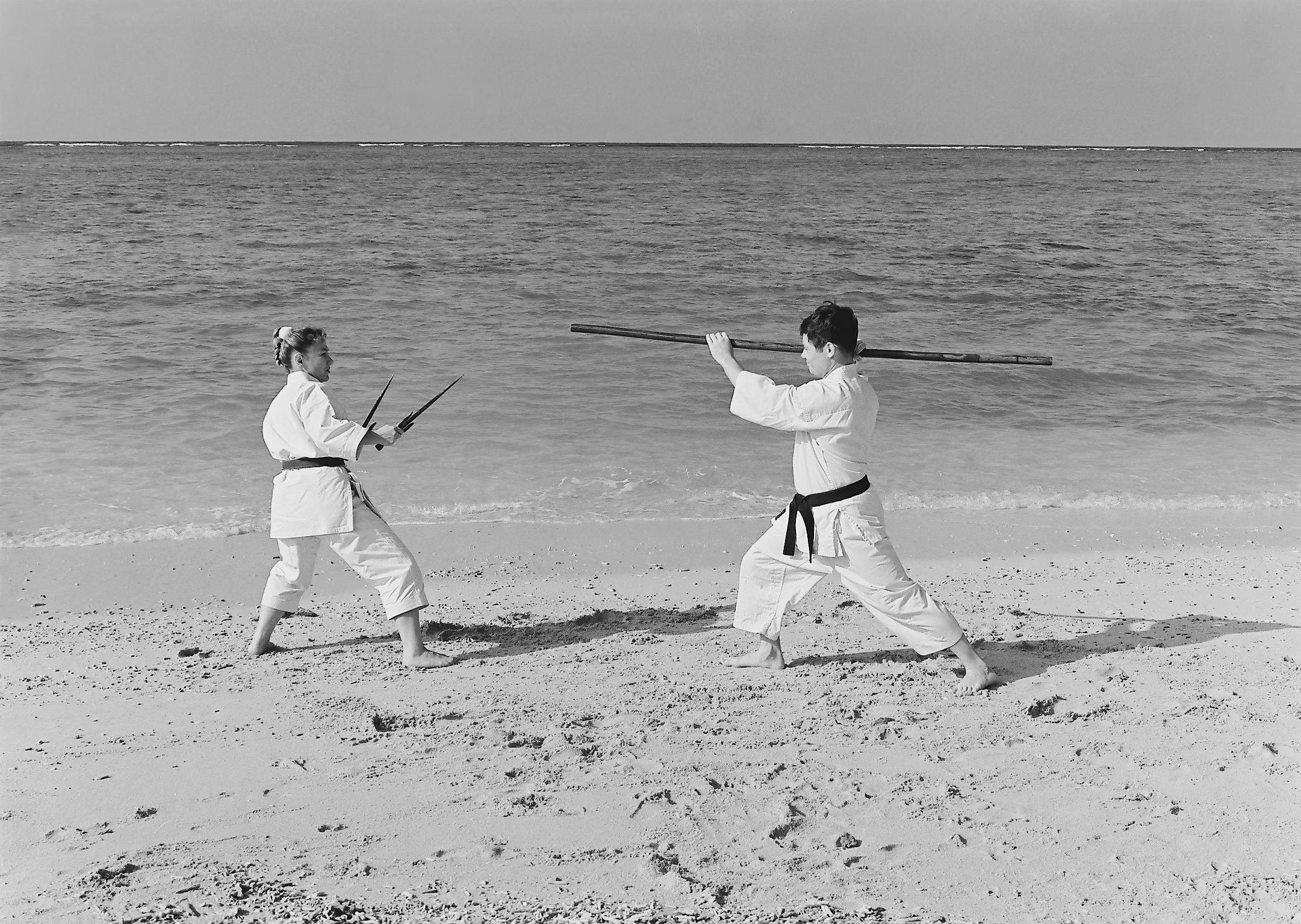
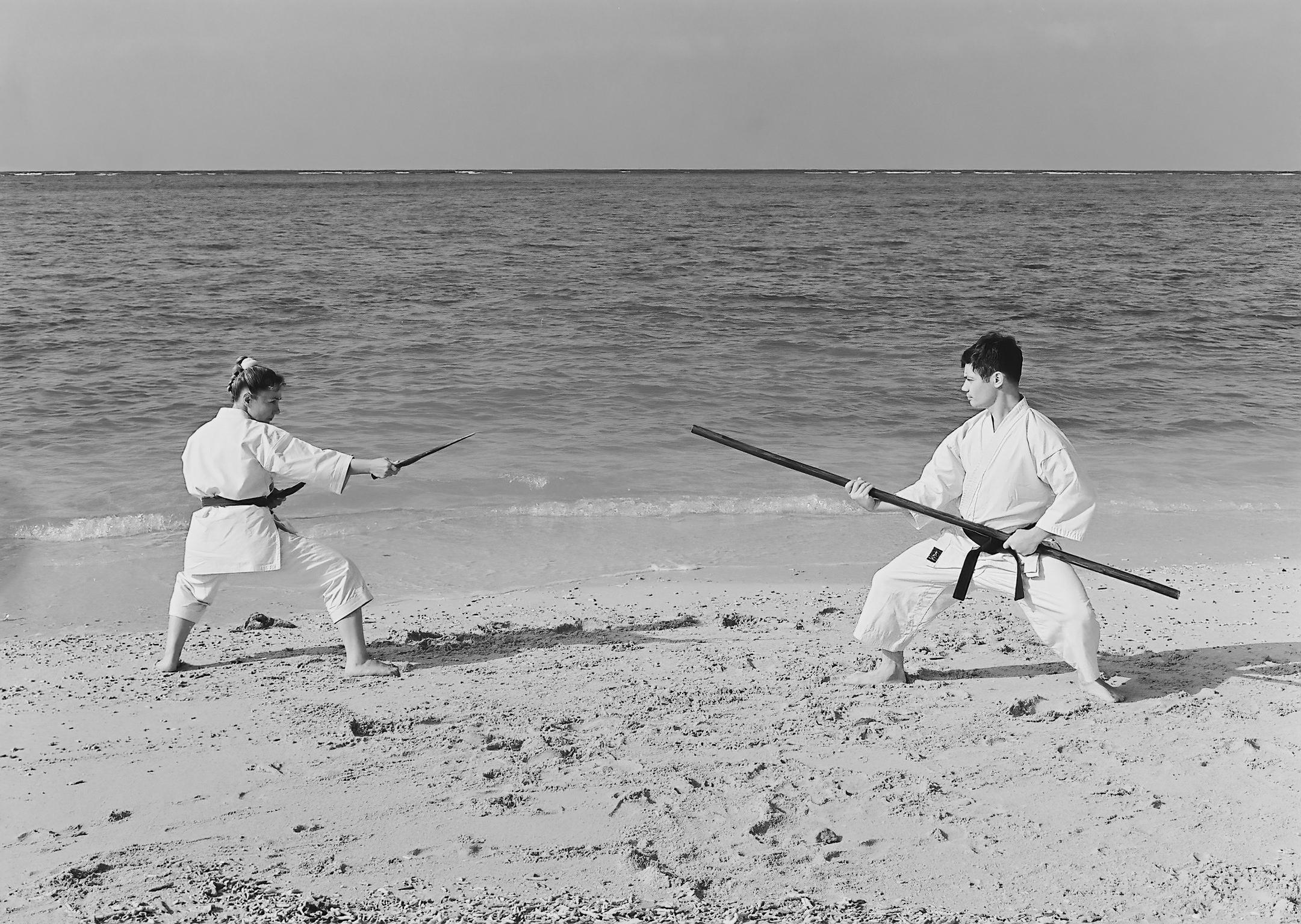

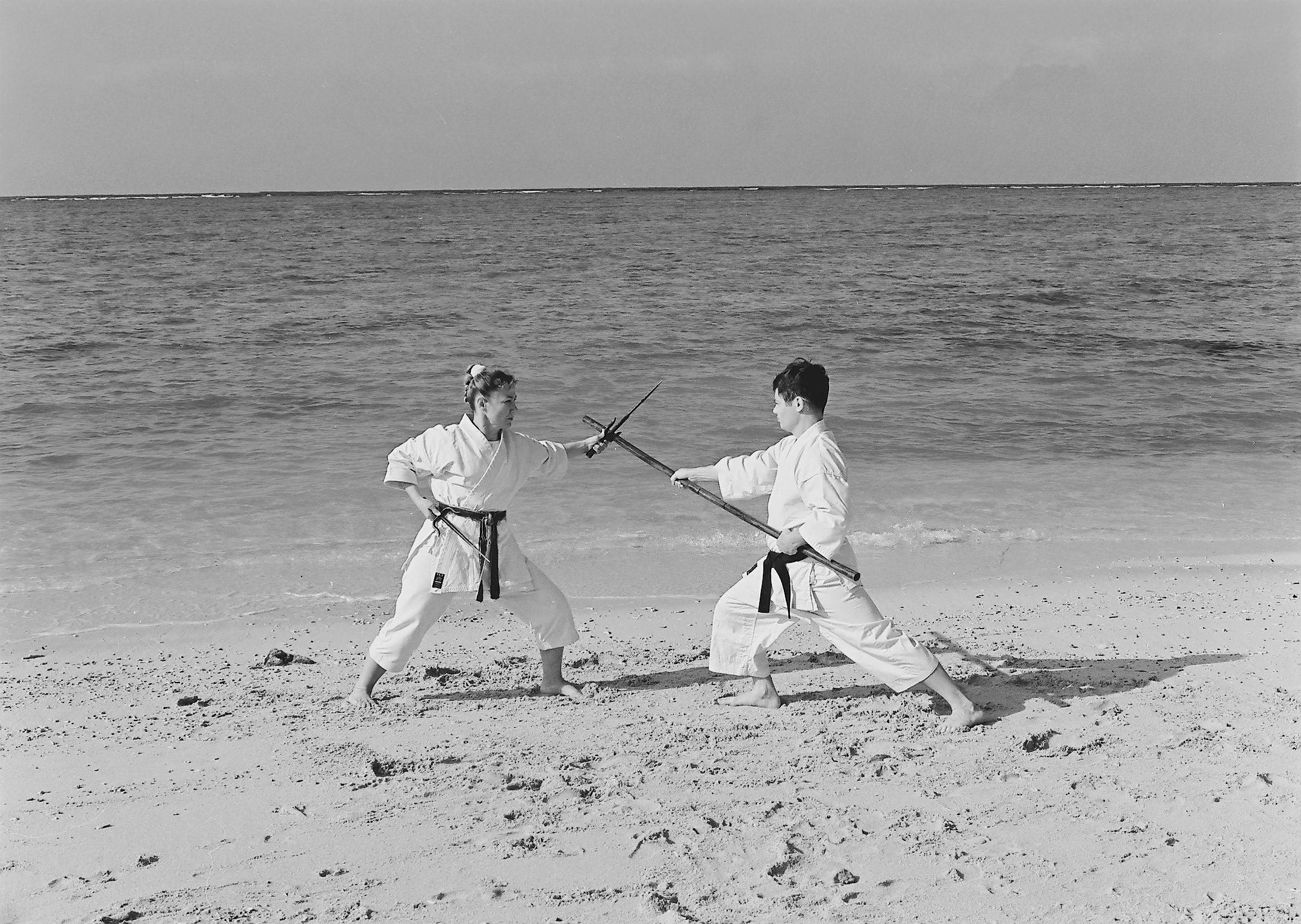
Photos
1
6 indicate a possible Bunkai. There are myriad of possibilities, and many to be discovered.

Partner’s name: Kenneth L. Caputo
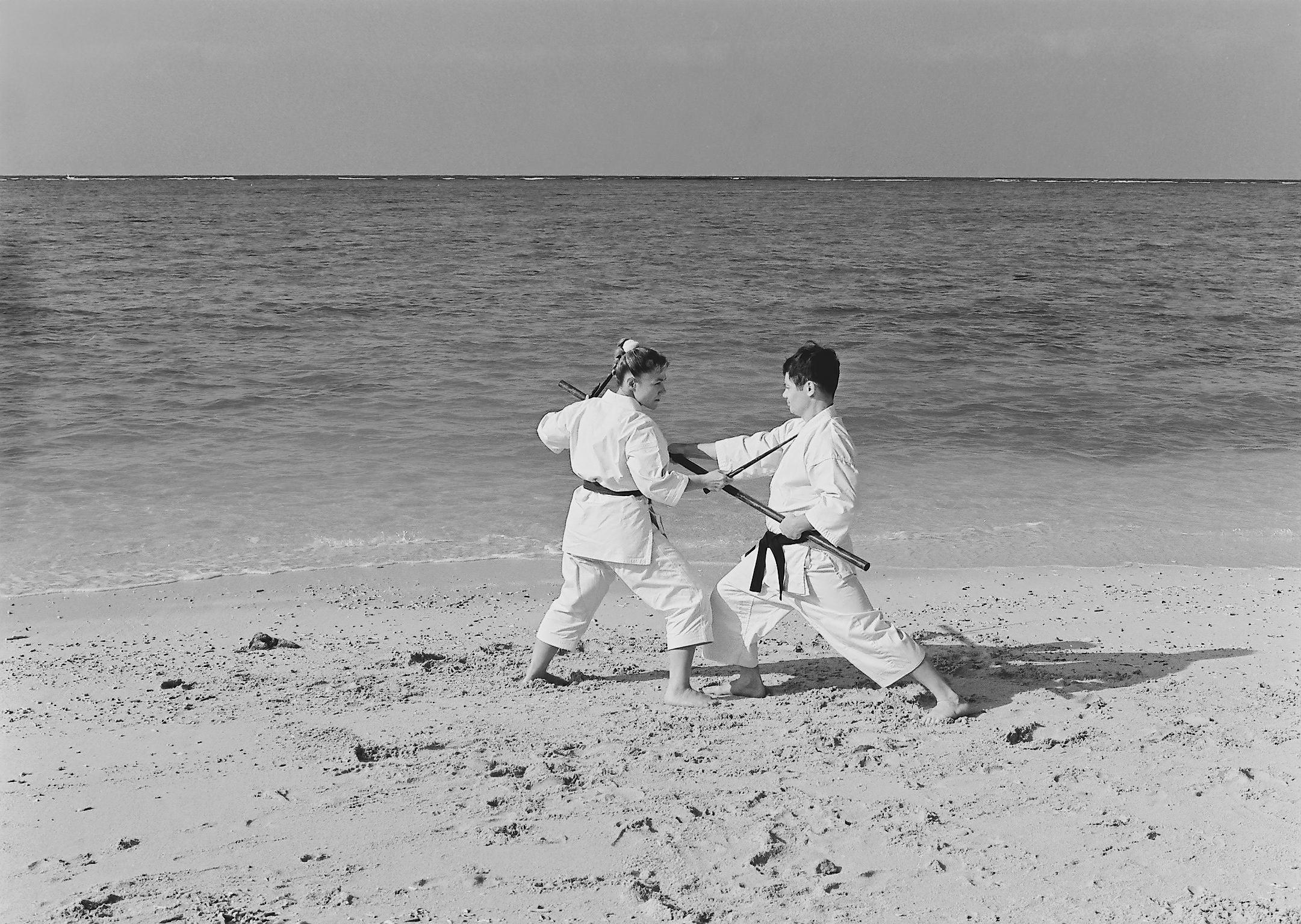
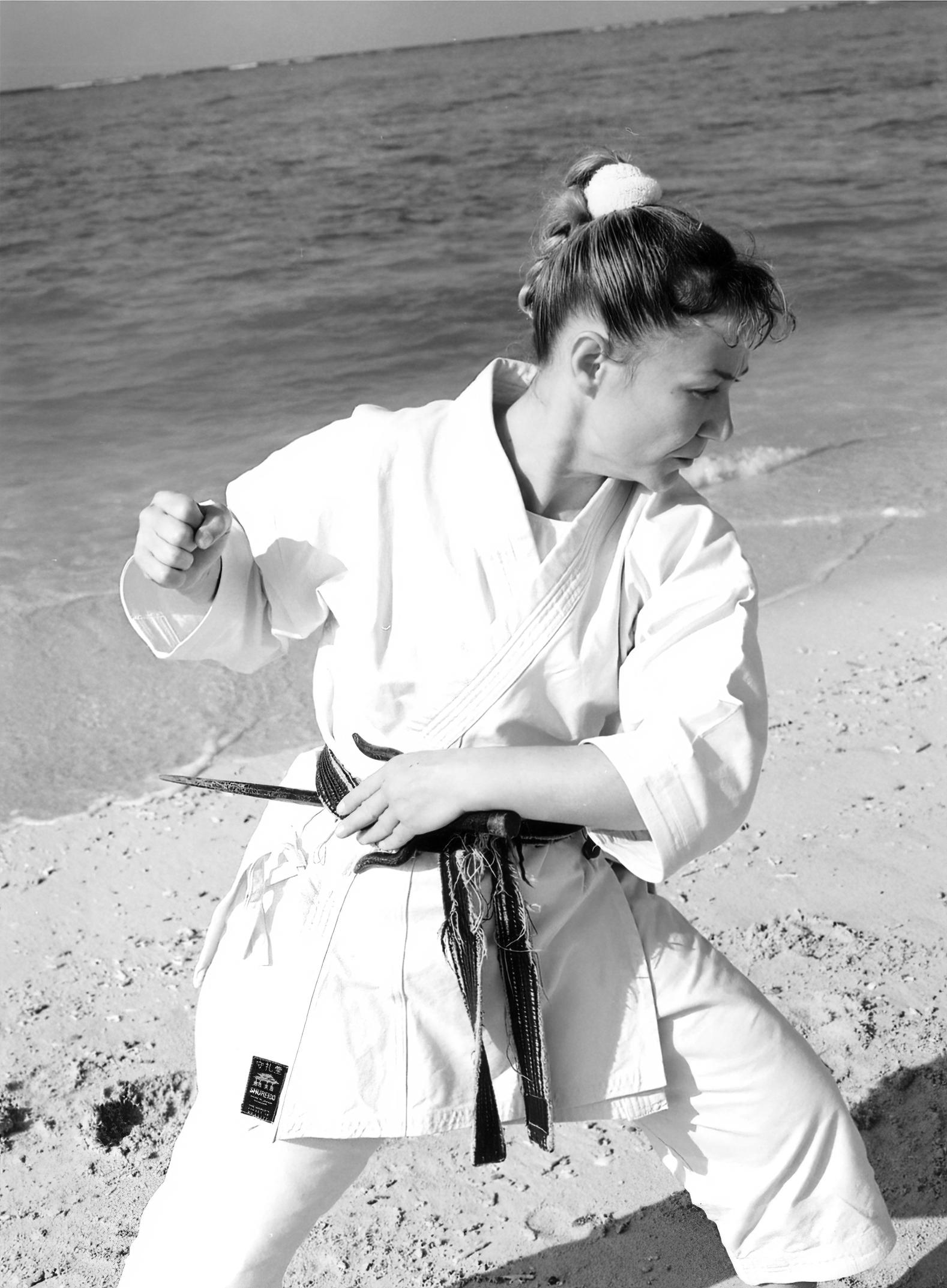
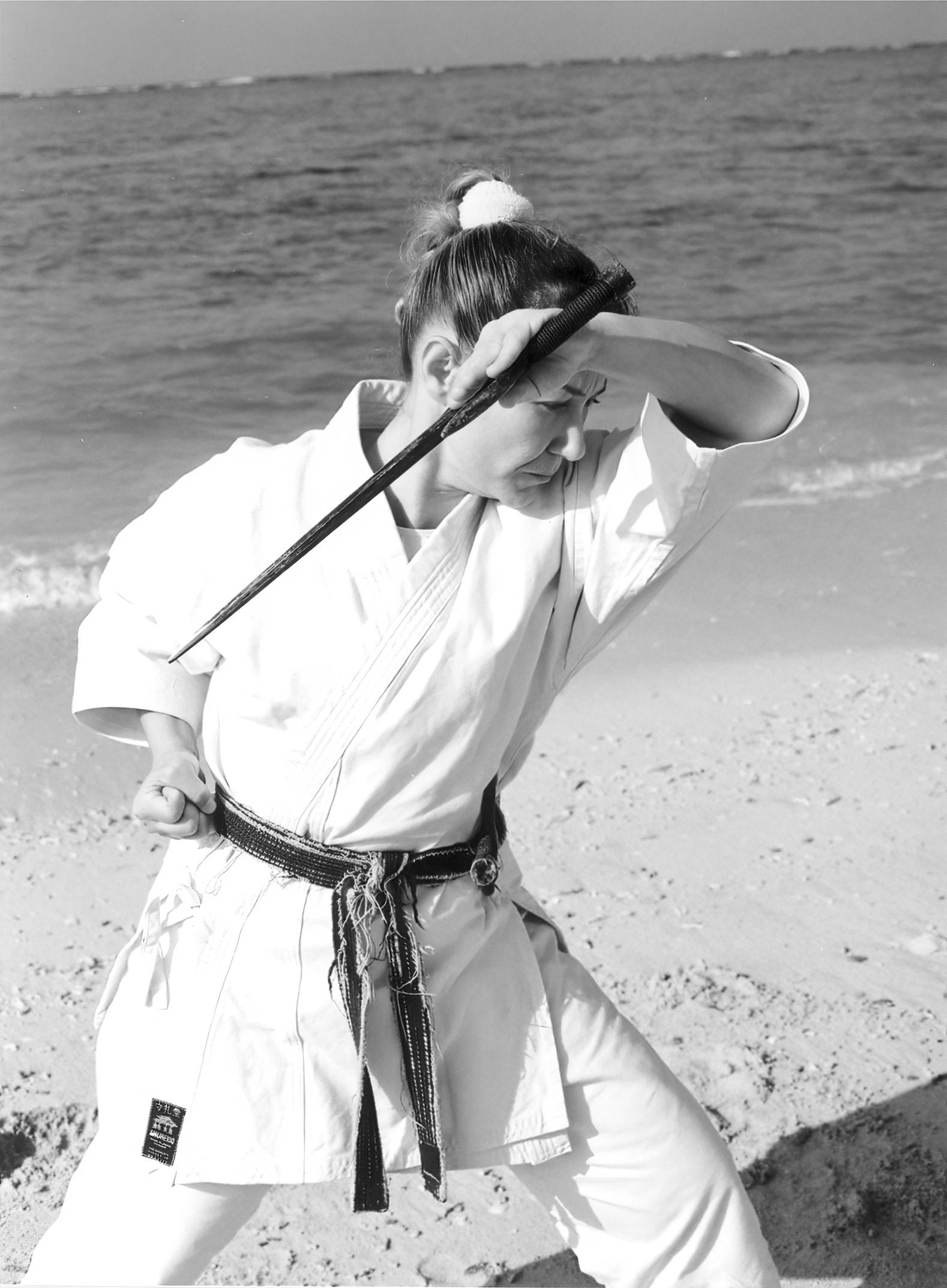
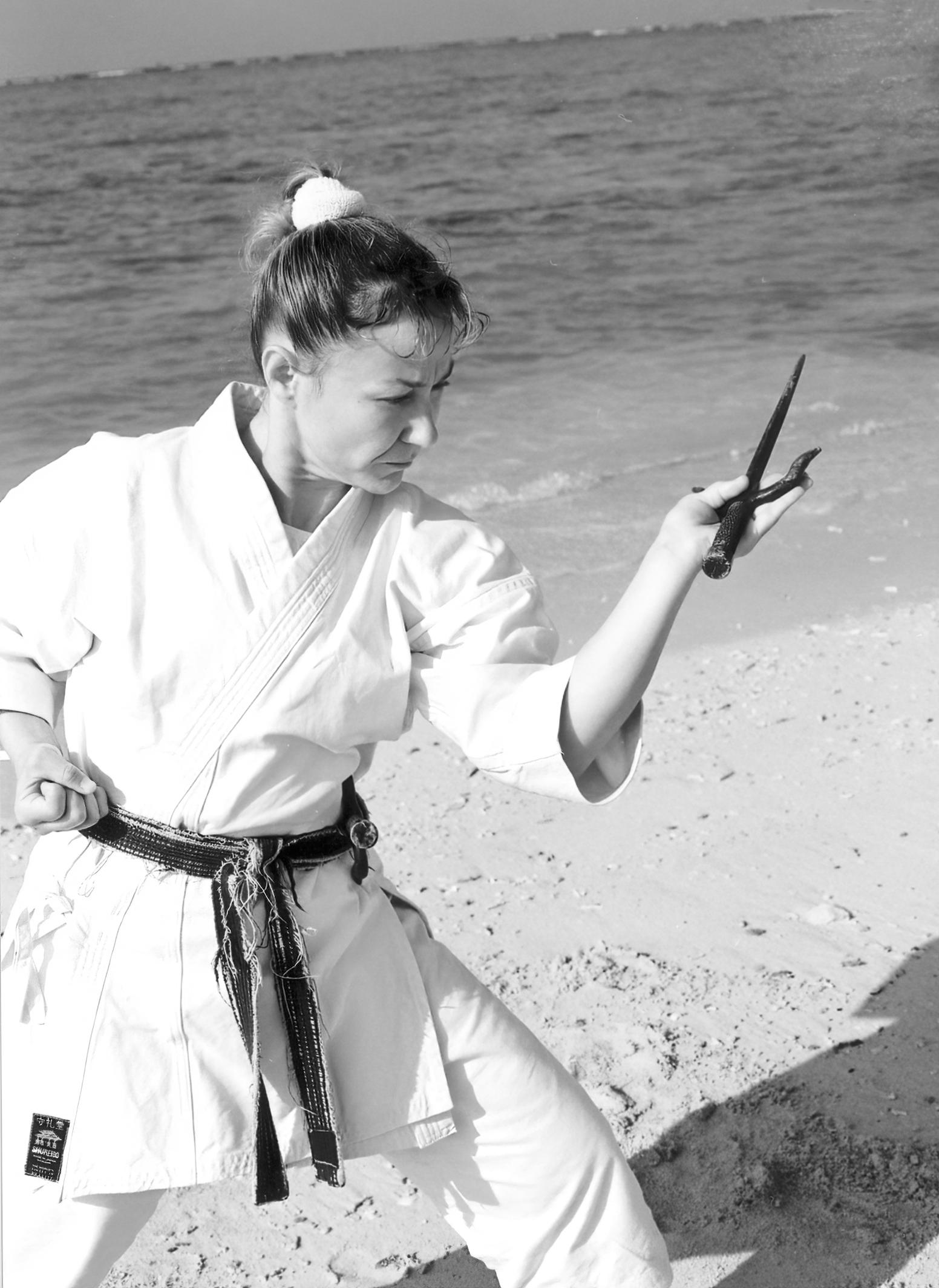
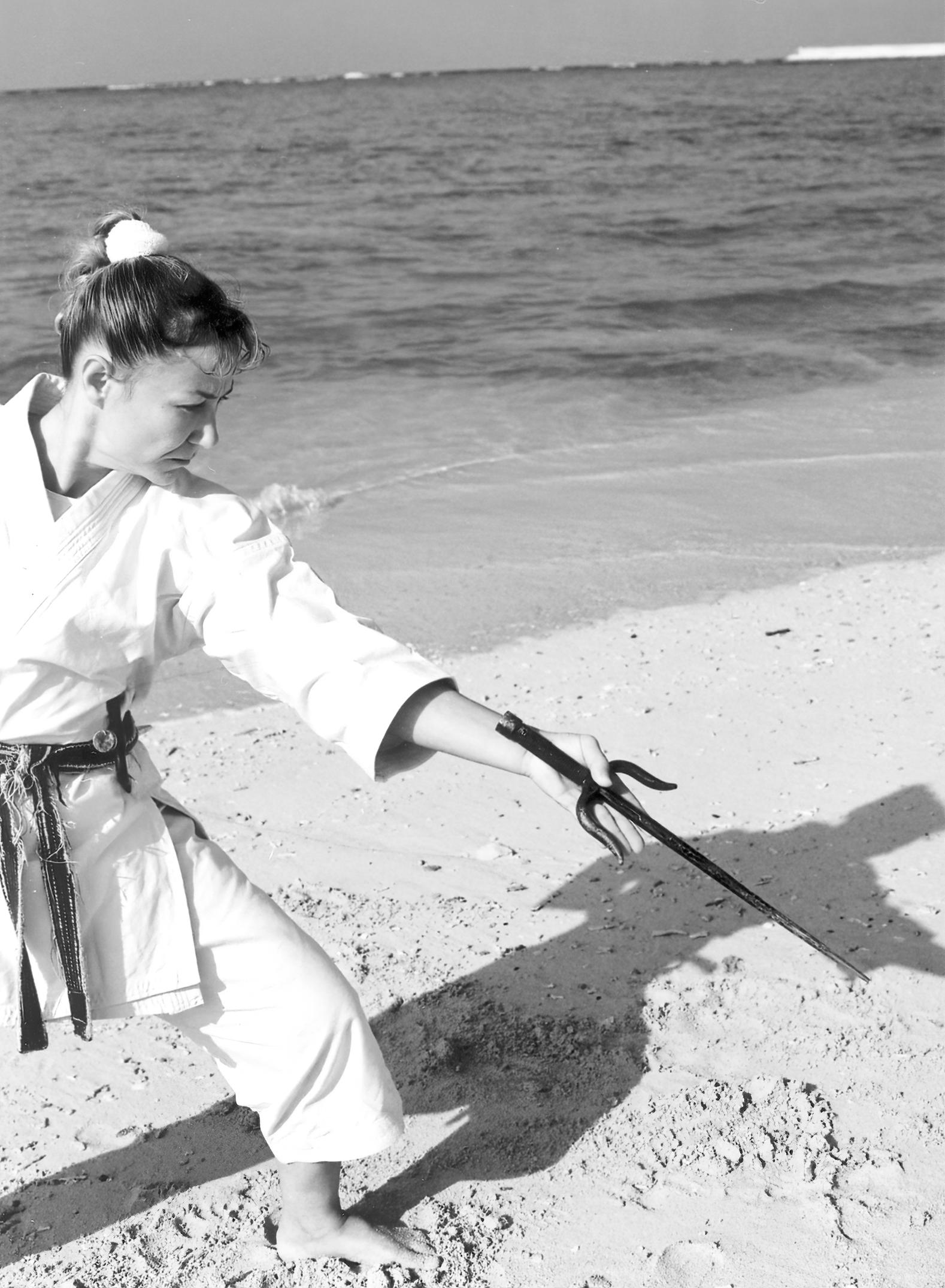
Previous pages:
1. Getting ready for the throw; eyes maintain contact with the target.
2. We make a large circular motion close to our body while fingers are already getting ready for the throw motion.
3. Please notice that the elbow points inward towards the body.
Photos # 1 to # 4 indicate the position of the hand during the throw motion.
We need to remember that when we release the weapon, it is the same as when we follow through in bowling, or when we throw the ball in baseball.
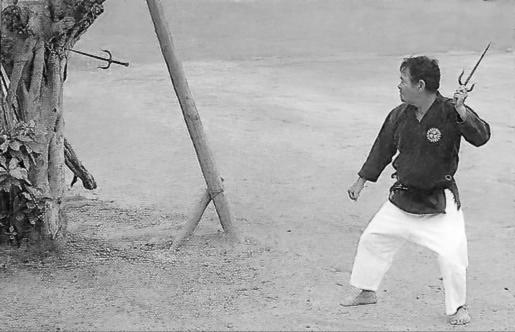
Today we are going to look at a very important muscle used in kicking activities such as football and most martial arts - rectus femoris. This muscle is one portion of the thigh muscles commonly called Quadriceps or Quads that has some interesting aspects that separates itself from the other Quad muscles ( Vastus Medialis, Vastus Lateralis and Vastus Intermedius ) The quadriceps are the major muscle group of the anterior thigh. This muscle group consists of four separate muscles that converge together to form a common tendon that attaches to the superior patella. While the main function of this muscle group is knee extension, it also plays an important role in knee stabilisation and hip motion. The quadriceps muscle group is susceptible to both overuse injury (tendinopathies, strains) and severe injury (tendon tears, compartment syndrome). Rectus femoris is both a hip flexor and knee extensor and has a higher incidence of injury in kicking activities possibly due to the need to perform these movements as well as stabilise the pelvis on the femur in weight-bearing.

Muscle strain injuries usually occur during eccentric muscle action, that is when the muscle is contracting and lengthening at the same time. The rectus femoris has been found to be one of the main force generating muscles in kicks such as the round house kick and is active over a long duration. In another analysis of various taiji movements the rectus femoris was shown to have a high level of activity mainly acting eccentrically. As the rectus femoris traverses two joints it may leave it more prone to injury when it is frequently required to work in an eccentric action for kicking and other martial movements.
Training muscles for injury prevention is a complex task and requires a multi-faceted approach to address core muscle strength, endurance, and recruitment requirements for functional demands associated with daily activities, exercise, and sport. Although quadriceps strains related to kicking were thought to occur on the kicking leg side, controversy exists as to whether rectus femoris muscle strains primarily occur during contact, swing phase of kicking or ground contact phase during the step before the backswing.
During contact phase the rectus femoris is in a relatively shortened state and muscles need to be in a relatively stretched state to be injured so it is not likely that the contact phase is where the injury occurs. During the backswing phase the muscle acts to decelerate the hip extension and knee flexion. This is when the muscle is likely to be injured. Another likely time is when the support leg receives the highest forces from the ground. The body leans backwards with the leg moving farther behind than normal. The support leg and the kicking leg are both at risk when the muscle is elongating under load.
To strengthen the quads and target rectus femoris to improve performance and potentially reduce injury is rather complex. Many aspects are involved in both performance and injury prevention and I am not going to imply that we have cracked the code for these areas however if injury is more prevalent when a muscle is eccentrically loaded (lengthening under load) then it may be best to start targeting your exercise to reproduce this movement. Movement is complex and injury as well as high performance may happen when we are not doing a technique or movement perfectly. It may be worthwhile adding some training of muscle groups in a non-optimum position such as slightly off centre or incorrectly balanced. We don’t want to over train incorrect technique however it may be important to understand how to get out of a bad position. Some martial arts may already have training methods that are designed to teach you how to get out of a bad position (or choice) such as Da Lu in Taijiquan.
Start slow and easy when introducing any new movement or group of movements then make them more complex. I like to start any new movement, especially if the person is injured or weak in that area, with a static (isometric) posture then progress into a dynamic (eccentric/concentric) expression. To put the icing on the cake you can play with adding an upper body component whilst targeting a lower body muscle group such as holding your hands in the air whilst doing a reverse lunge. Later a weighted object can be added (ball, stick, club, sword).
Let us look at two exercises to target the rectus femoris that makes it work in a stretch shortening cycle.
Reverse Nordic hamstring — is a knee dominant exercise starting in a kneeing position on a soft pad or floor. The ankle is in a fixed position and you slowly lower yourself backwards with the muscles of the quadriceps contracting as they lengthen followed by an explosive return to start position. If you have difficulty with this version it may be best to start with an isometric or static hold for 10-30 seconds at the level of backward lean that you can achieve.
Key points to remember: brace your entire body for this exercise and be mindful to brace your gluteal (bum) muscles so that you do not collapse or fold at the hip. Progress with repetitions slowly as most people will be weaker than expected.

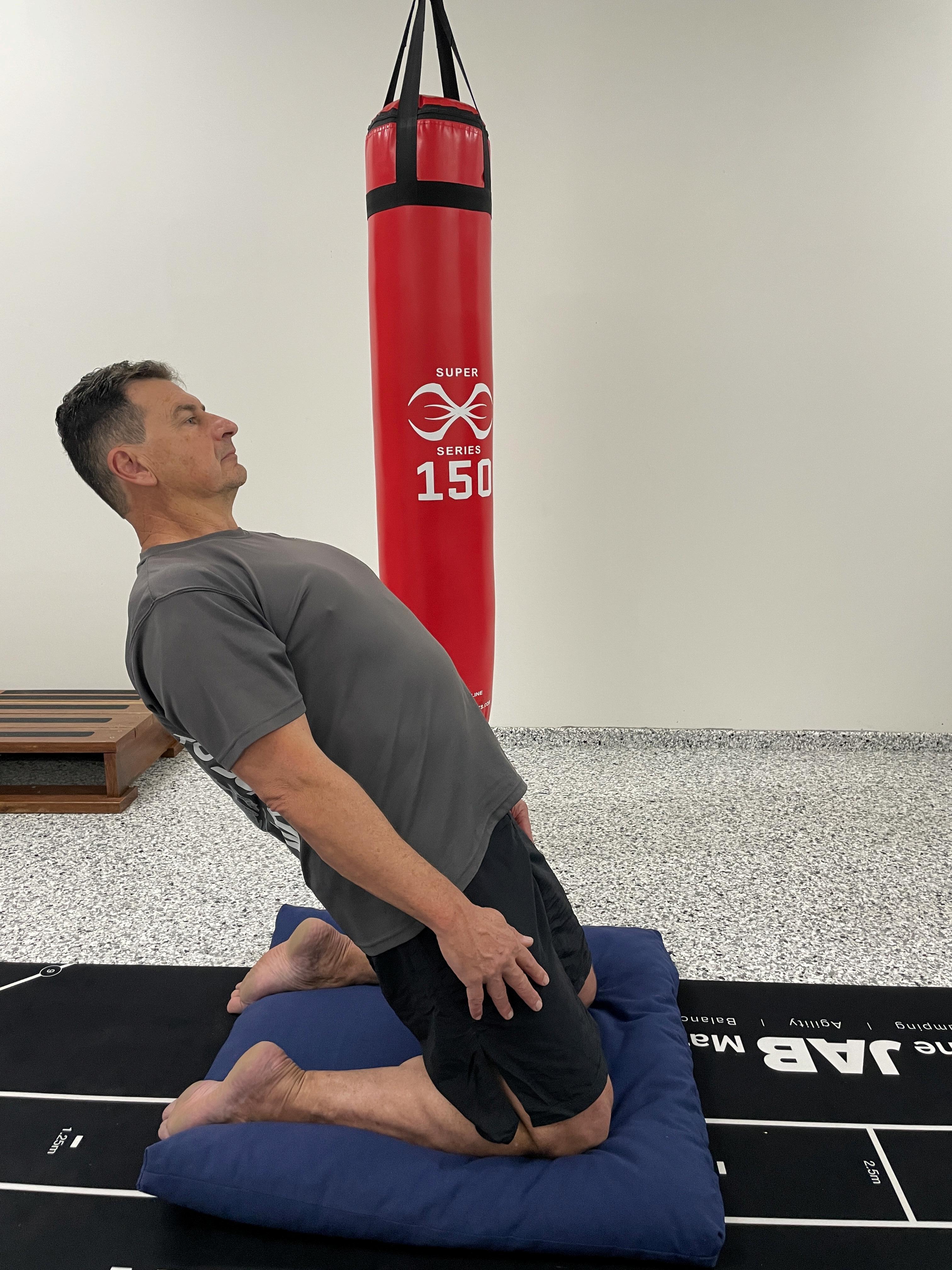
Overhead reverse lunge — this is an example of a multi-joint quadricep dominant exercise. The starting point can be with both feet on the ground or with one foot on a raised platform and your hands could be by your side or raised overhead. Stand with one foot on platform and step backward into a reverse lunge position and then explode back to start position. If you have access to slides (slide pads or slippery socks) you can slide your back foot into the lunge position and you then slide yourself back to start position.
Key points: reverse lunge will be kinder to your knee than a forward lunge especially if it is an older knee. You could alternate lunge leg and walk backwards across the room holding a stick or weighted object above your head. You could also drive your lunge leg past the start position into a high knee position as an alternative.
I have tried to give you a few examples of exercises that you can use to develop your quads and especially rectus femoris without the need for too much equipment. Have fun and play around with your own variations. Next article we will look at using the Reverse Nordic in combination with a hamstring stretch to improve your hamstring flexibility.
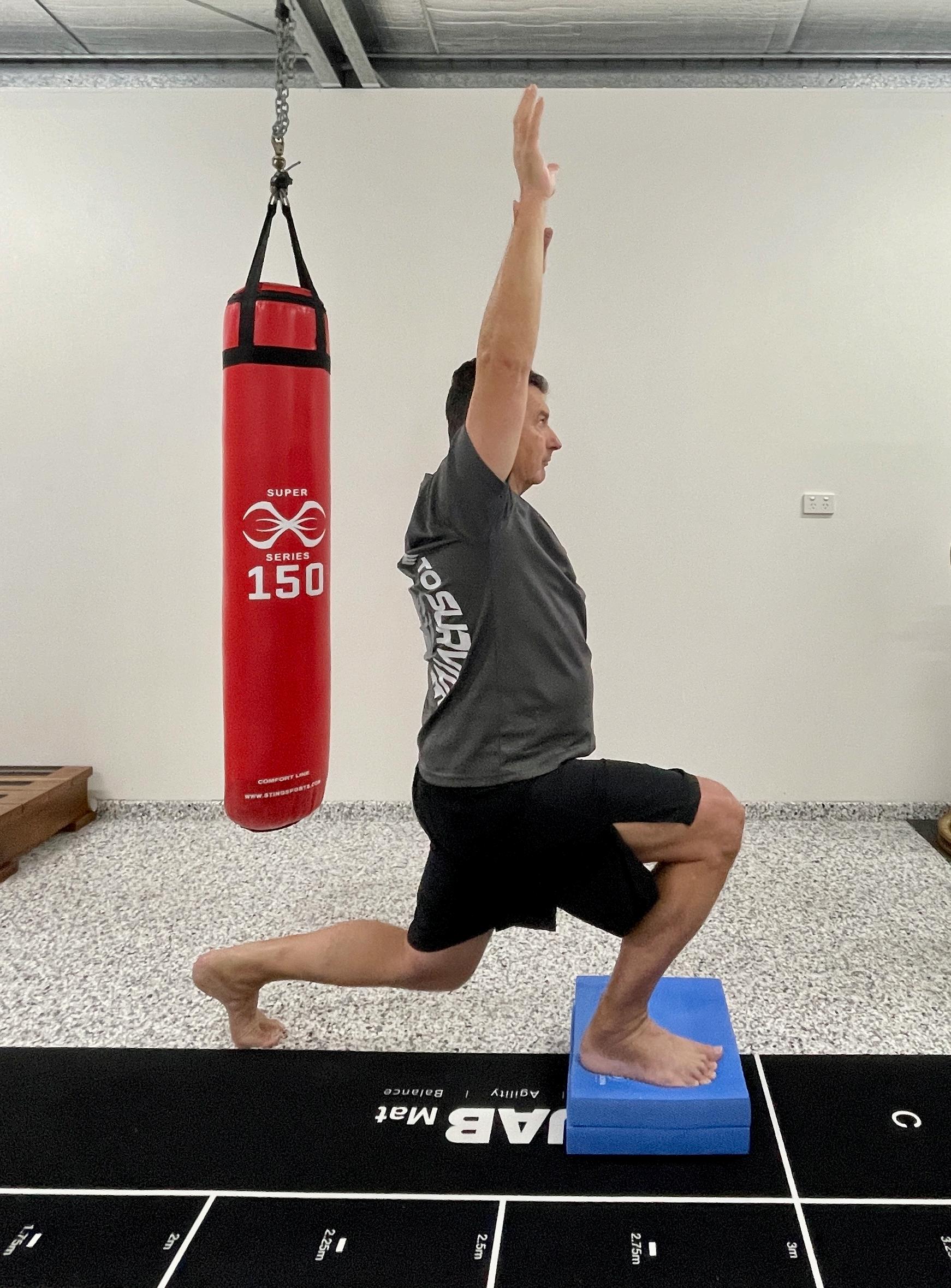

Photography Lauron Power
Title Image: Housewife Giving Kick By ArtFamily Source: Adobe Stock
Title Design Nasser Butt
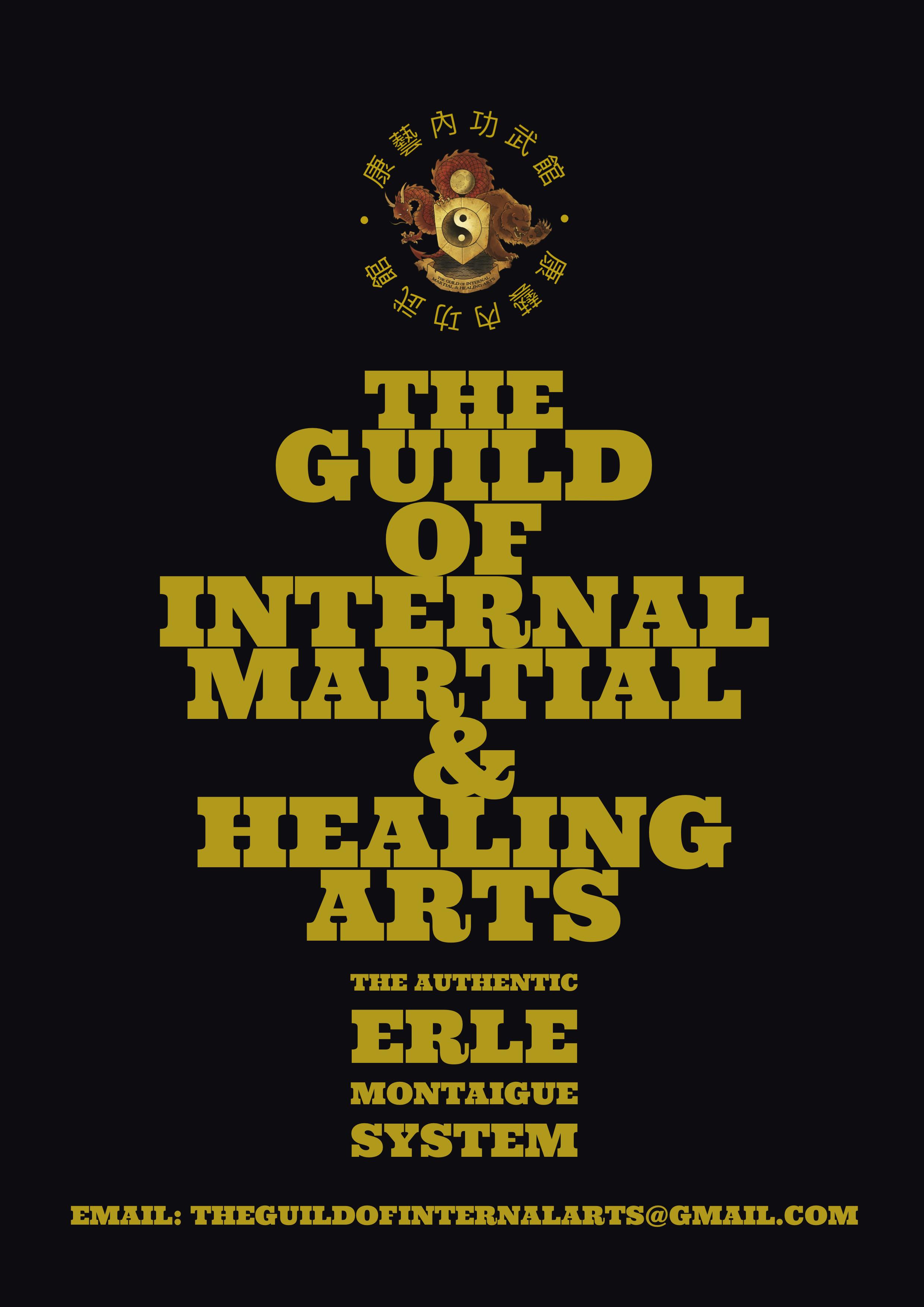


Introduction
The Fa-jing Ch’uan Dim-mak Training Methods are an integral component of The Erle Montaigue System. These training methods were designed to teach a student the foundations of fa-jing, combined with dim-mak at both a theoretical and practical level. Further, they helped develop mind-body coordination, timing, the point of coordination, as well as attacking targets at a reflexive level.
There are 10 of these training methods in total. Each method increases in complexity and skill. Usually, students were only given a single method to practice and only after successful execution and understanding was the next one given. Each method is practiced on both sides. Some of the methods are trained 4* ways, whilst others only 2.** All the methods have a solo component, followed by a two-person method.
Each method requires that the body be totally loose — this does not mean that you hold it like a limp noodle, you must have internal tension in order to hold structure.
It is, of course, impossible to show the explosive nature of these methods using still photography since they literally take a split second to do and would simply be a blur. For those who are interested in learning these methods, it is best to seek out a teacher who is well-versed with them and can execute them as they are intended.
The students should not view these as techniques! They are training methods, which when understood will lead the student on to higher things. However, it is important that students don’t kid themselves! Evaluate your progression correctly. Don’t rush through these methods, because just when you think that you have understood one, to the diligent student, it will offer more!
The purpose here is to simply introduce these methods to the beginner, as well as to provide a reference point for those students who are already training under The Guild with either myself or Peter Jones.
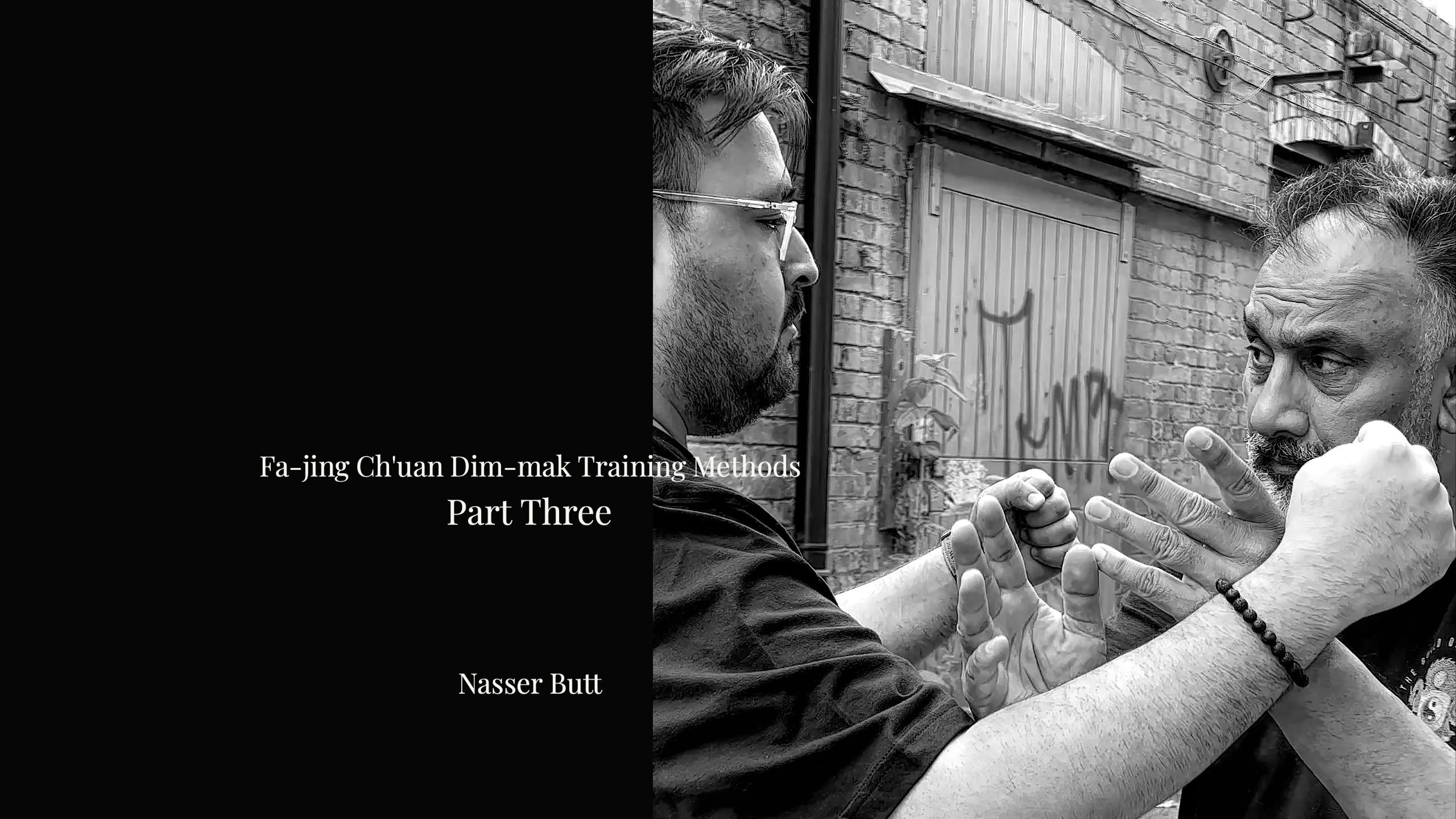
A word of warning… the areas being targeted are extremely dangerous and can be fatal or cause serious injury! At no point should any of the primary target actually be struck [especially those located on the neck, eyes, the back of the head and the face in general]. Pull your strike in training! Power can be executed in the solo drill and or upon mitts with a partner.
All the images are shown statically for illustration purposes only with movements exaggerated for visual clarity! ———————————————-
Method Seven — An open to closed side method

Solo
Starting with a reverse bow stance, simply allow your hands to hang in front of you in p’eng/hinge [Figure 1]. Your waist does a rapid fa-jing shake, turning left, right, left, right —causing the left elbow to strike twice downwards and slightly backwards [Figures 2-3]. Your body turns to the left, as your left hand hooks and your left leg steps around to the back, your waist now does a second fa-jing movement — left, right, left — causing the right palm to pump forward, followed by the left [Figures 4-6].

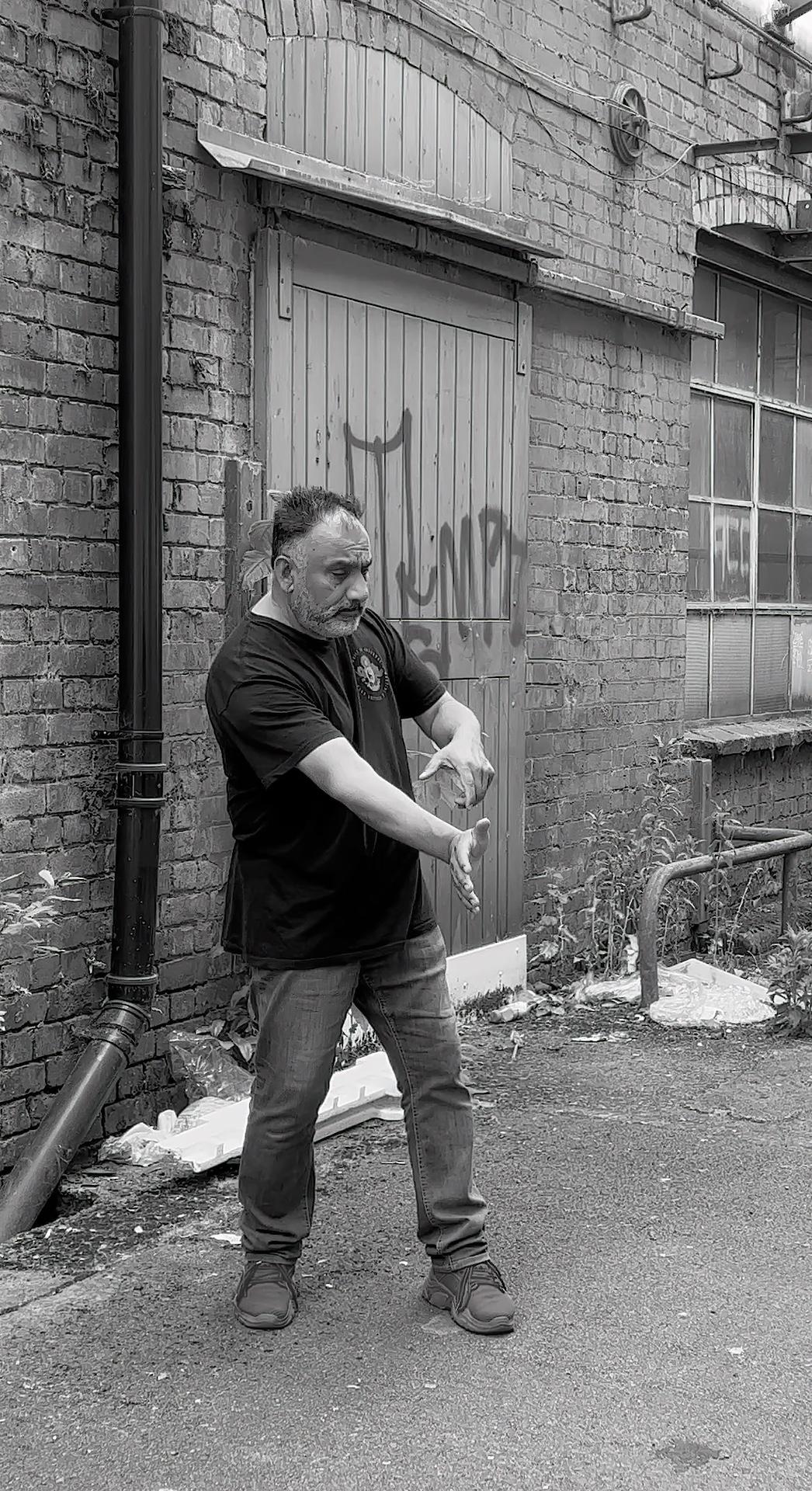
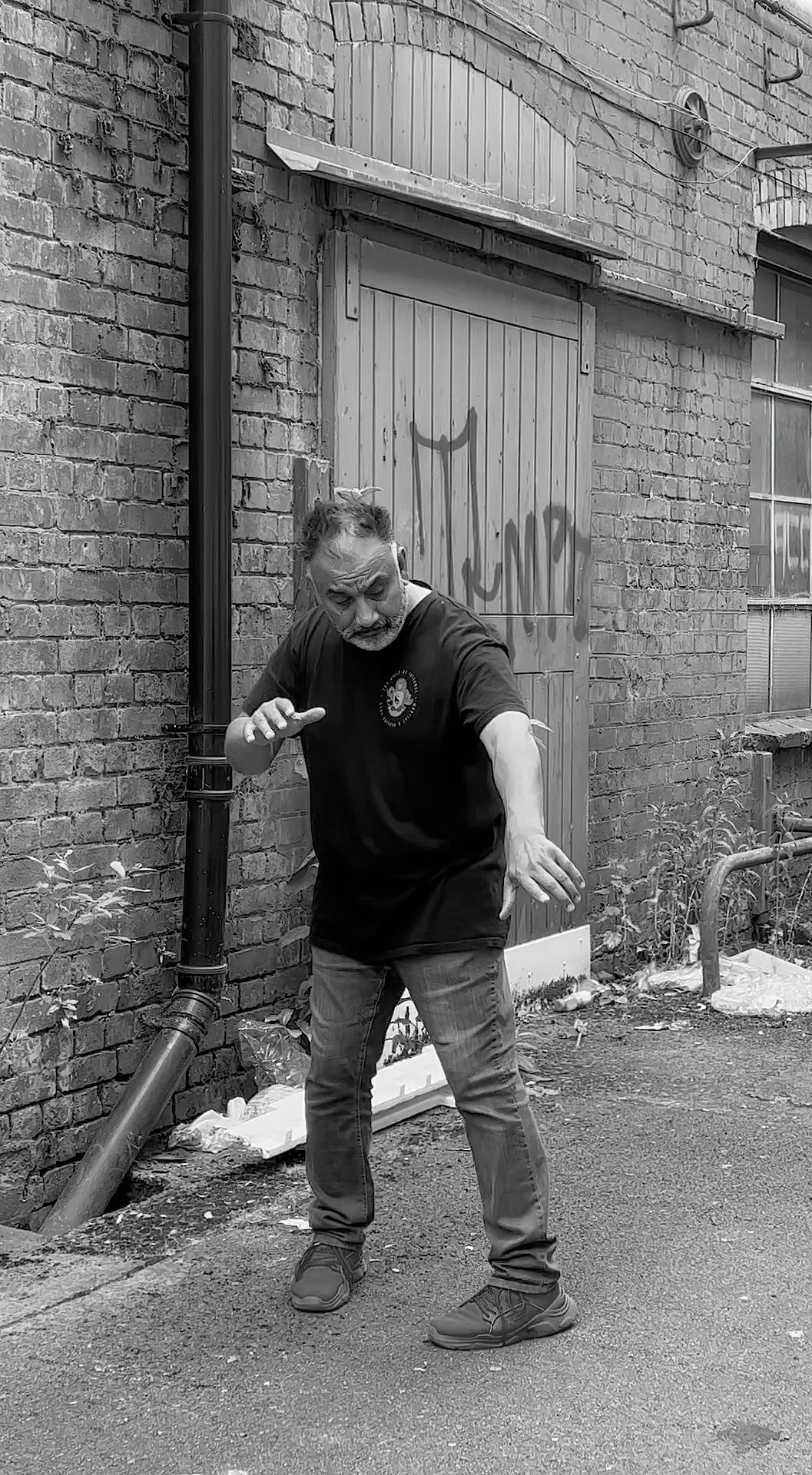
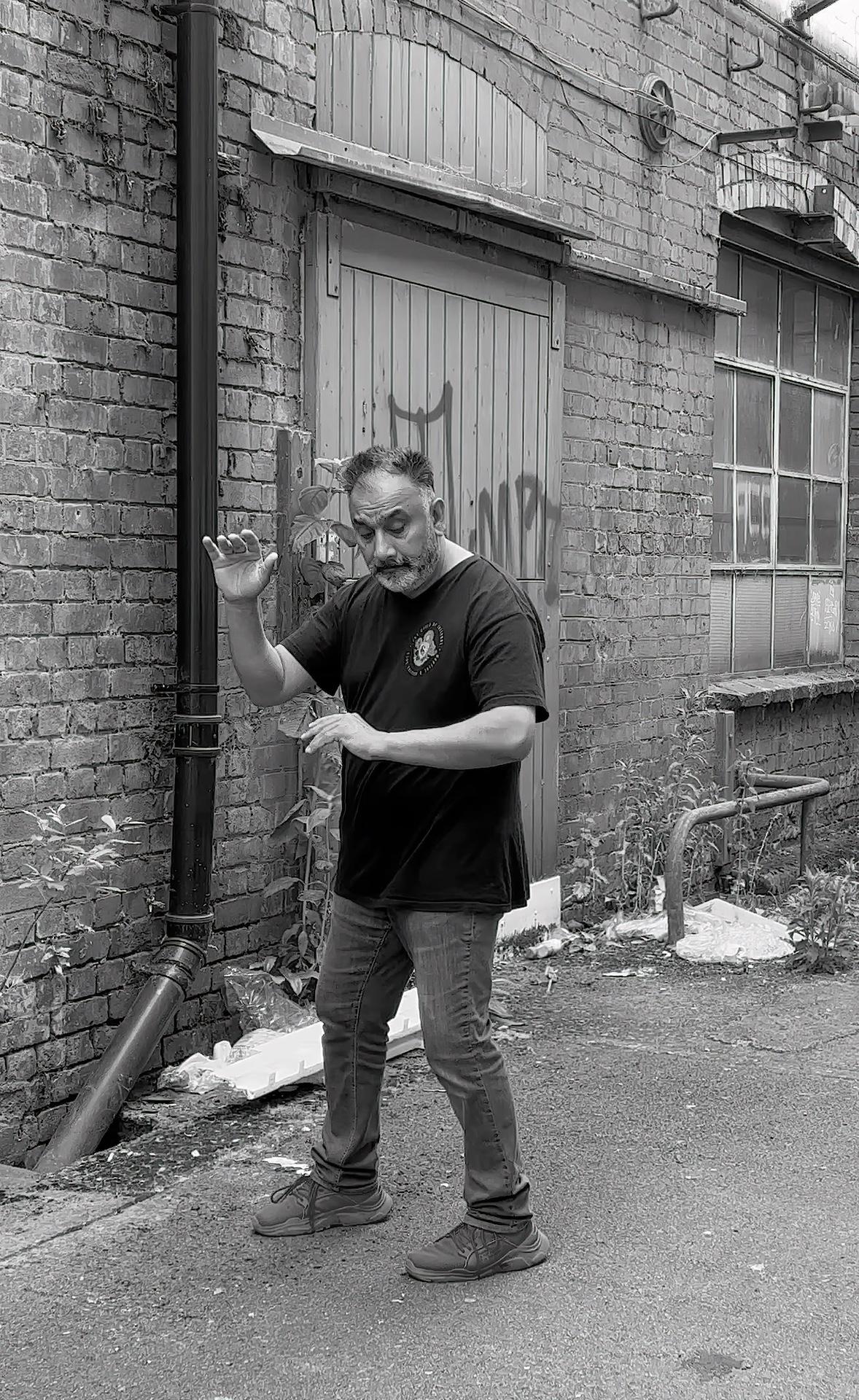

The solo drill is practiced explosively marching up and down the hall on both sides 4 ways or it can be performed in a circle.
Two-Person Method
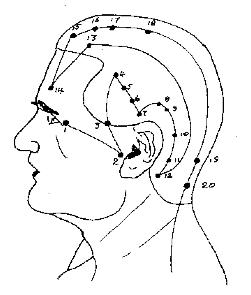
Points struck are Gallbladder 20 [GB20].
Gallbladder [GB] 20
Your partner shoots at your waist, your waist shakes violently, as the left elbow strikes GB20 twice in rapid succession [Figures 7-10]. As your left leg swings backwards, your body pivots to the left, with the fingers of your left hand hooking into the eyes*. Your waist carries out a second fa-jing shake, causing the right and left palms to strike GB20 [Figures 11-12].

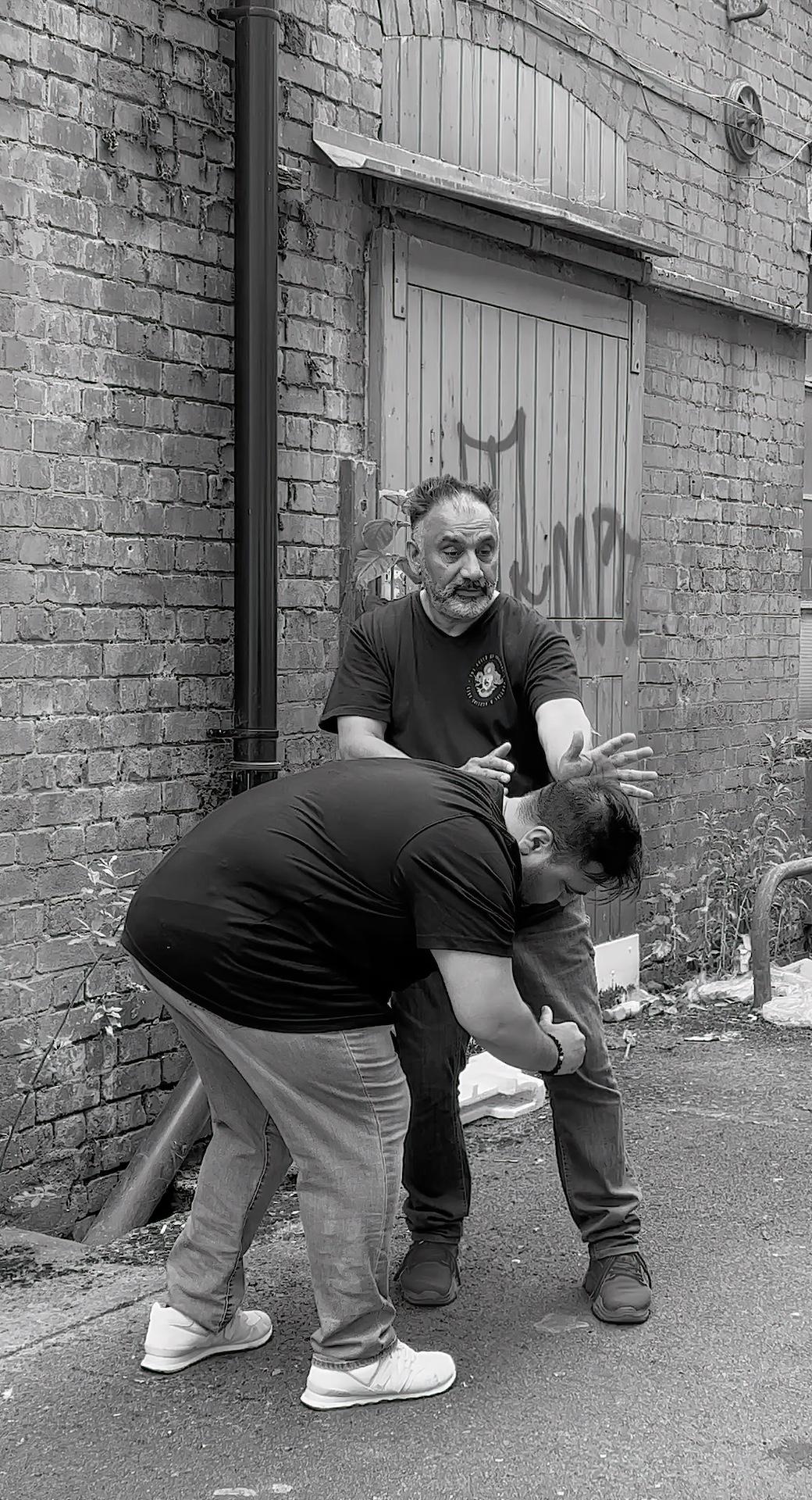
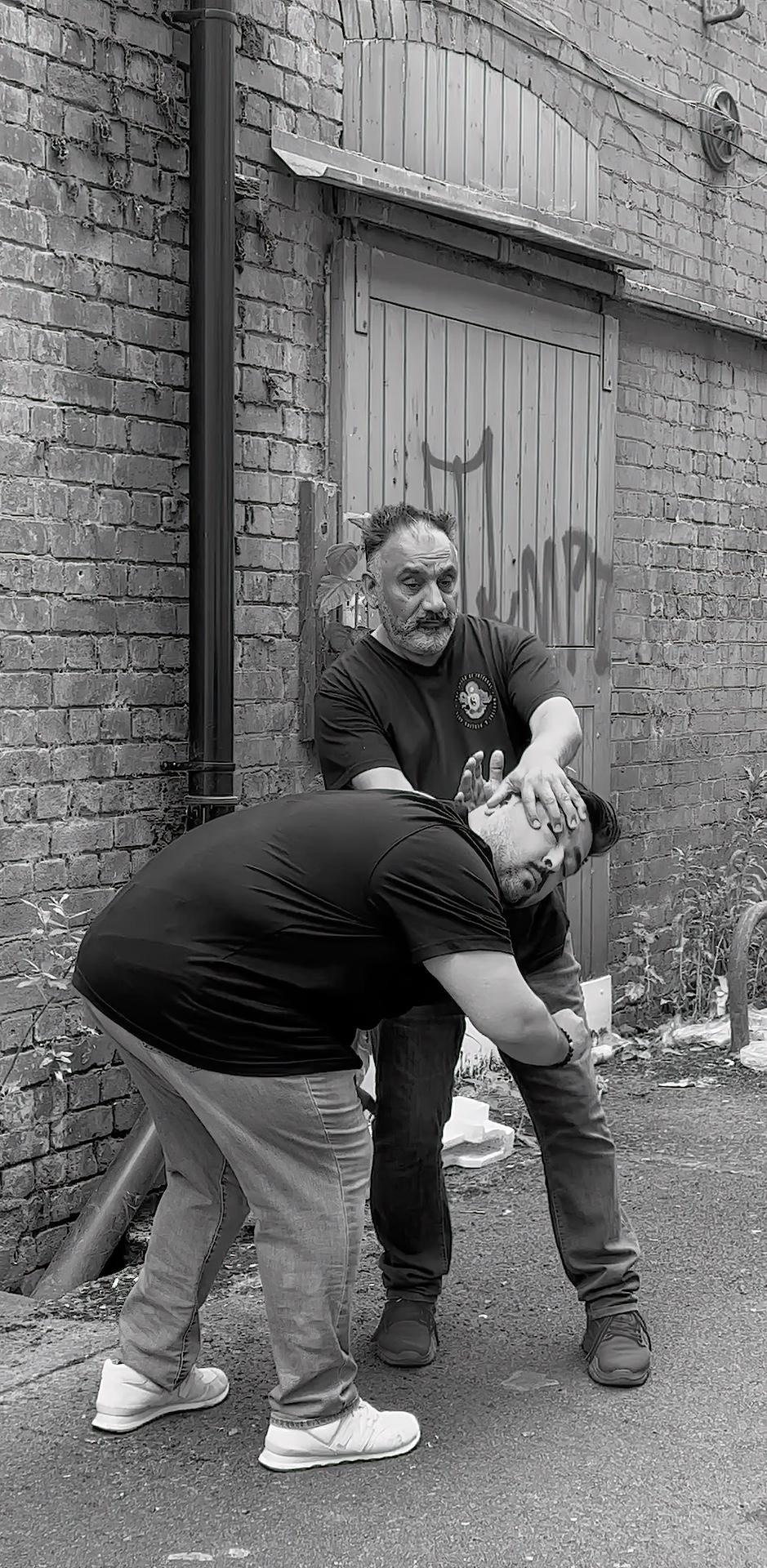
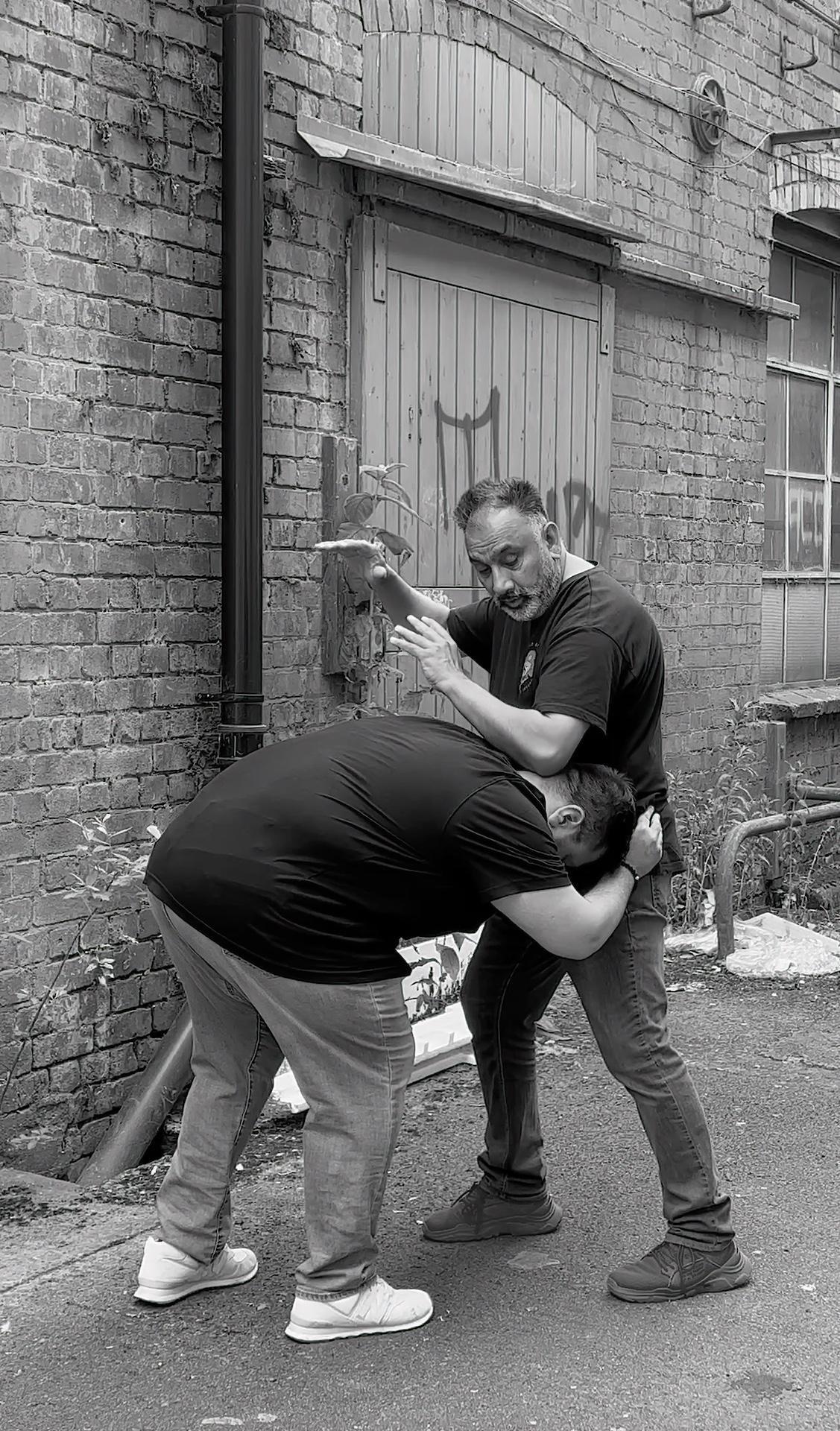

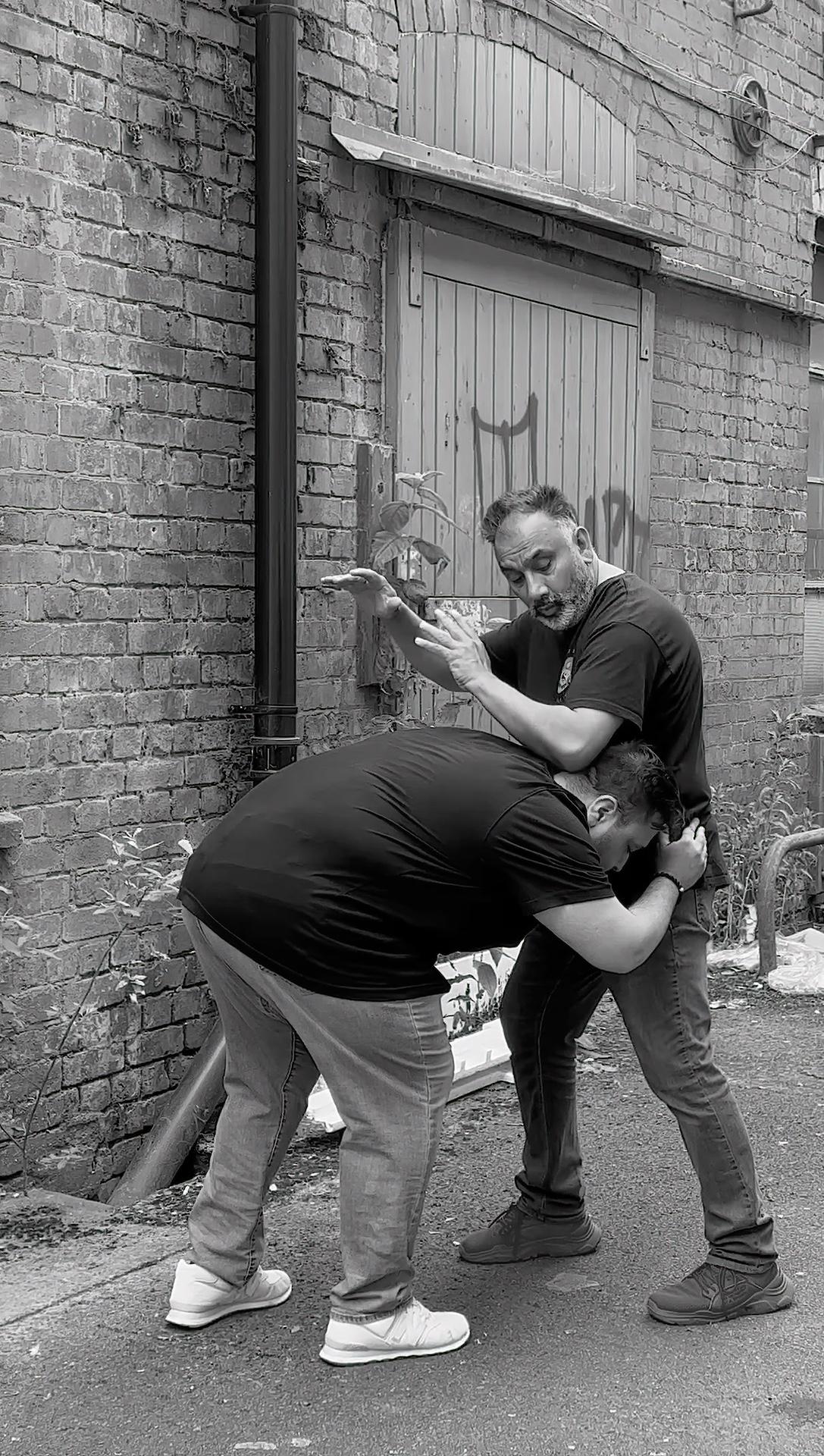
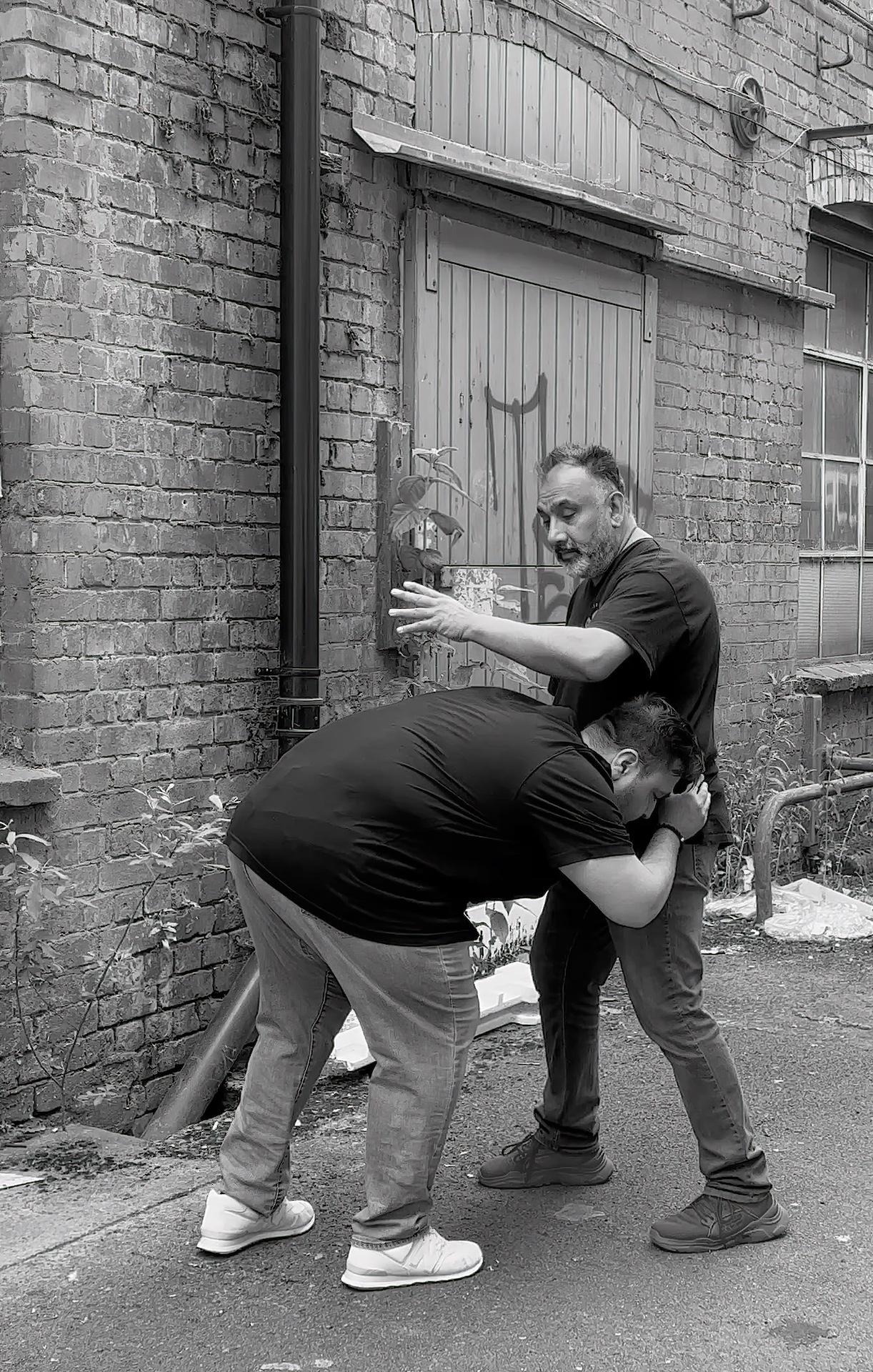
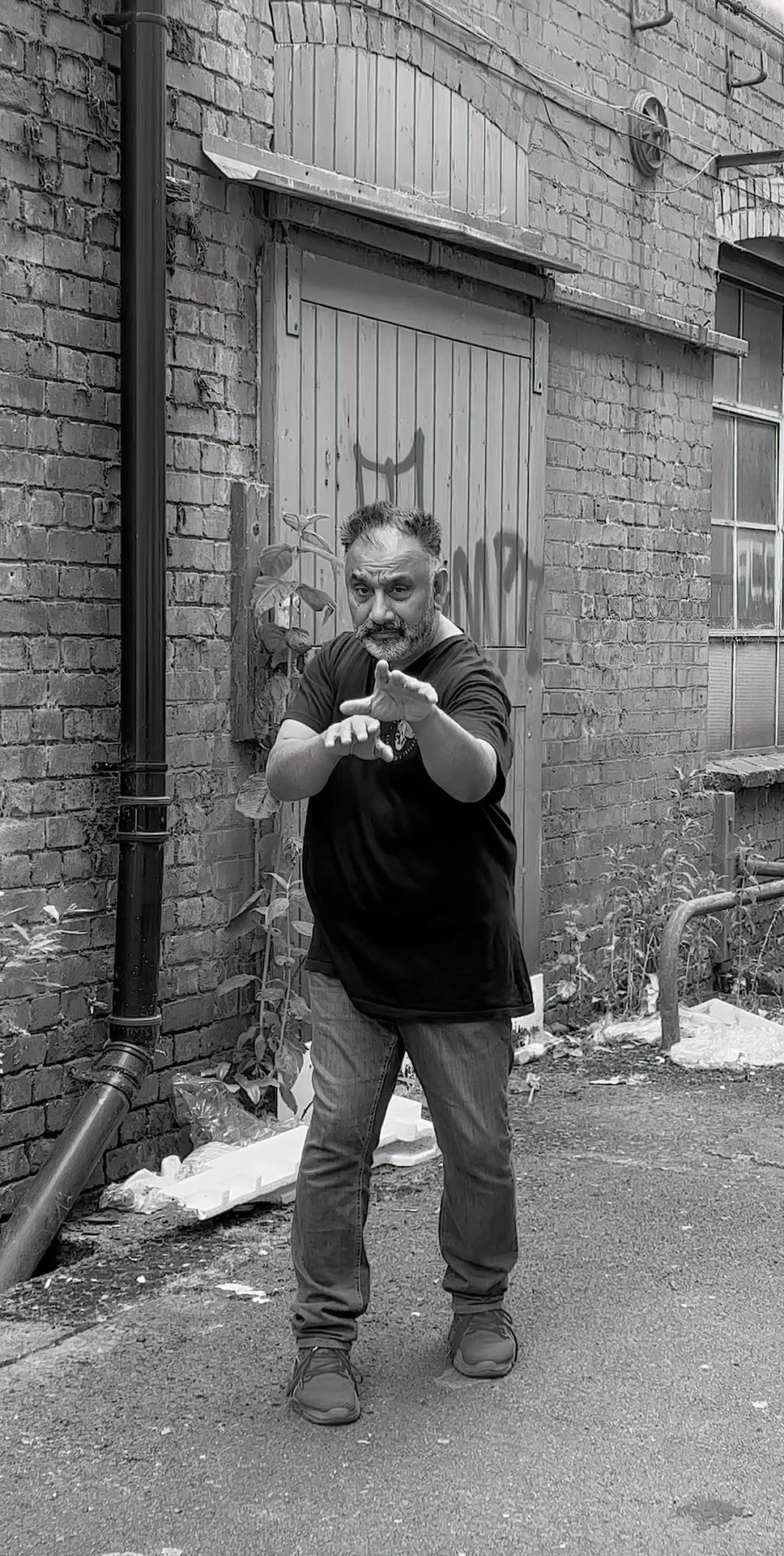
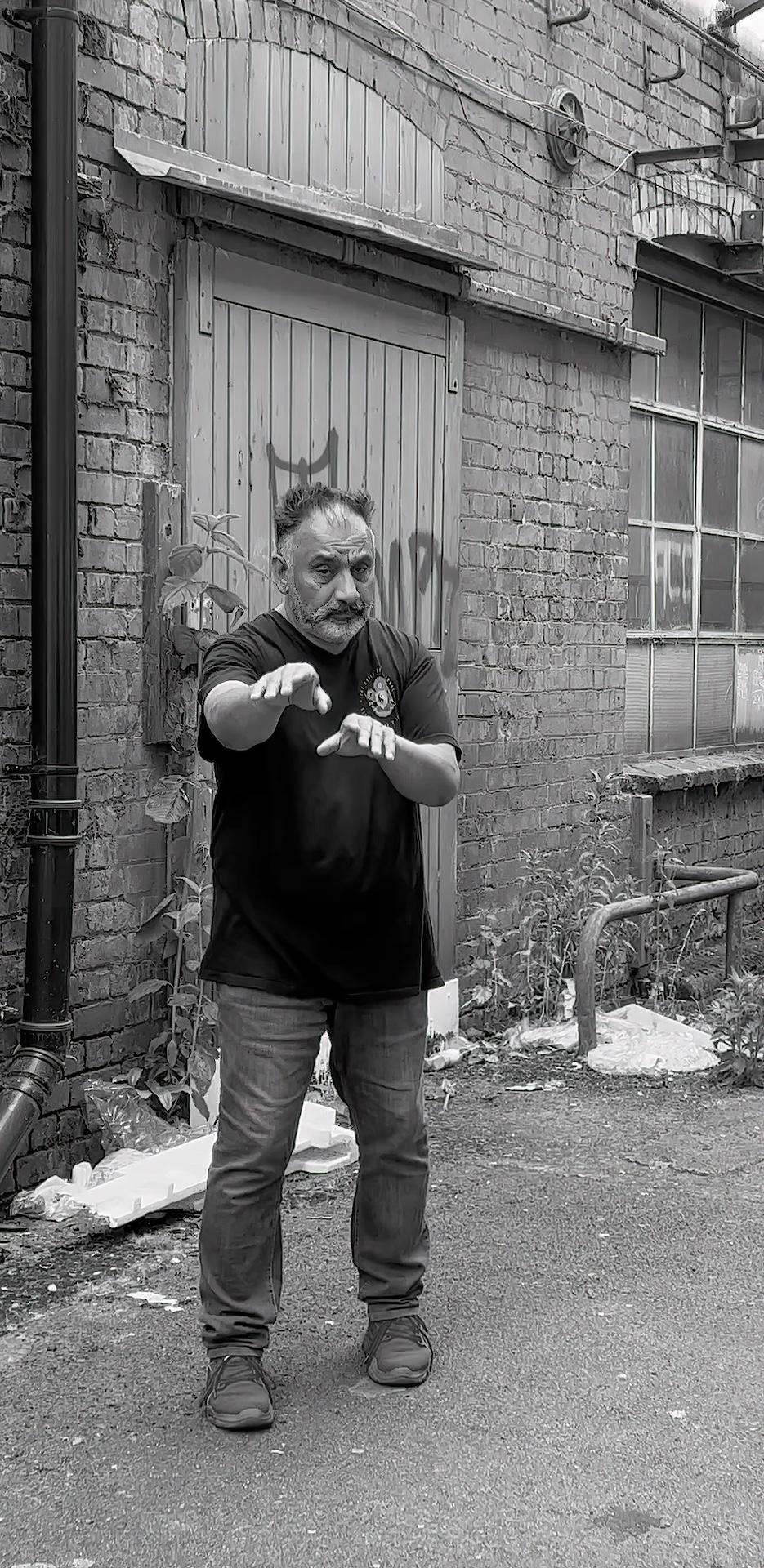
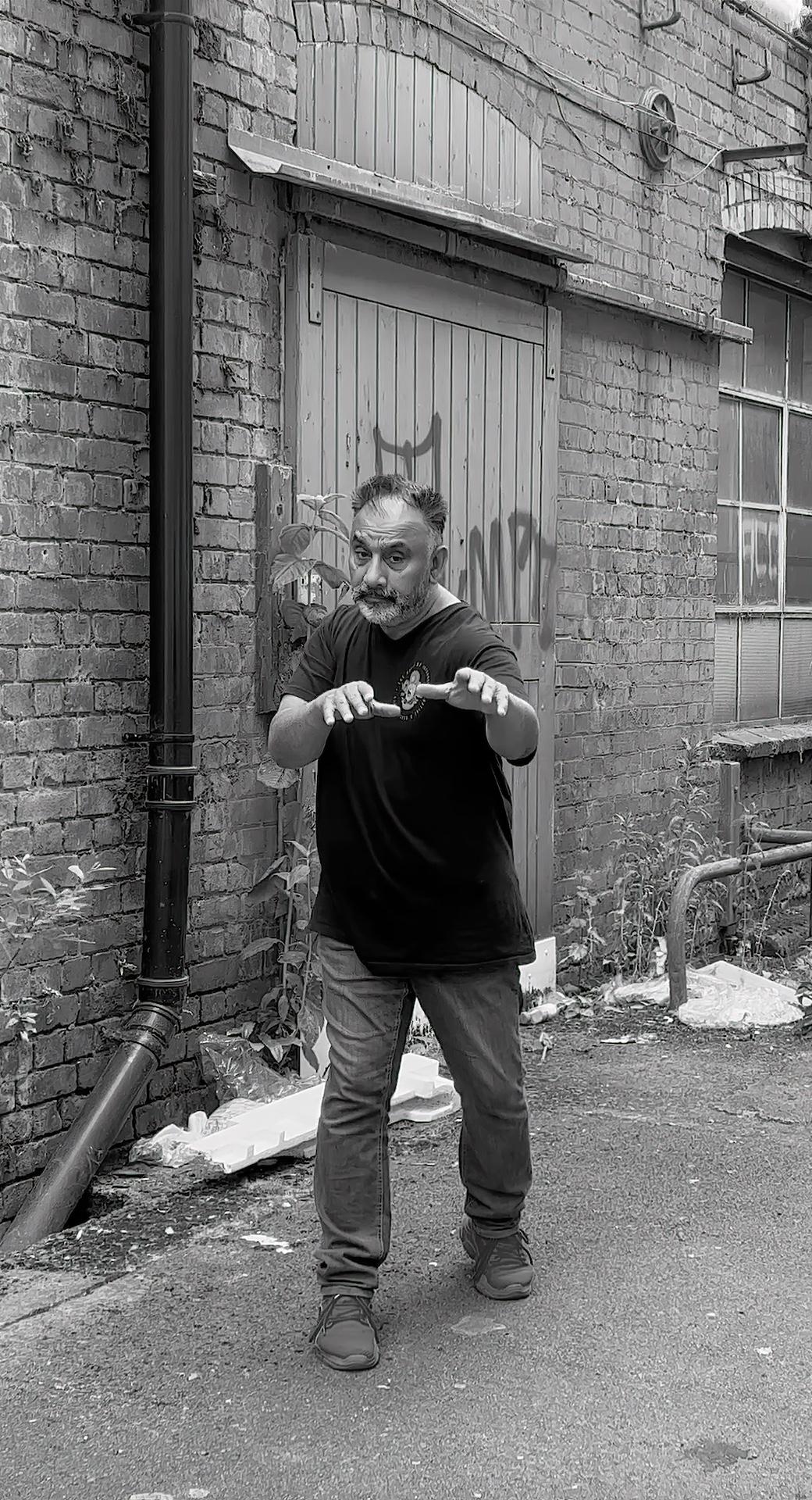
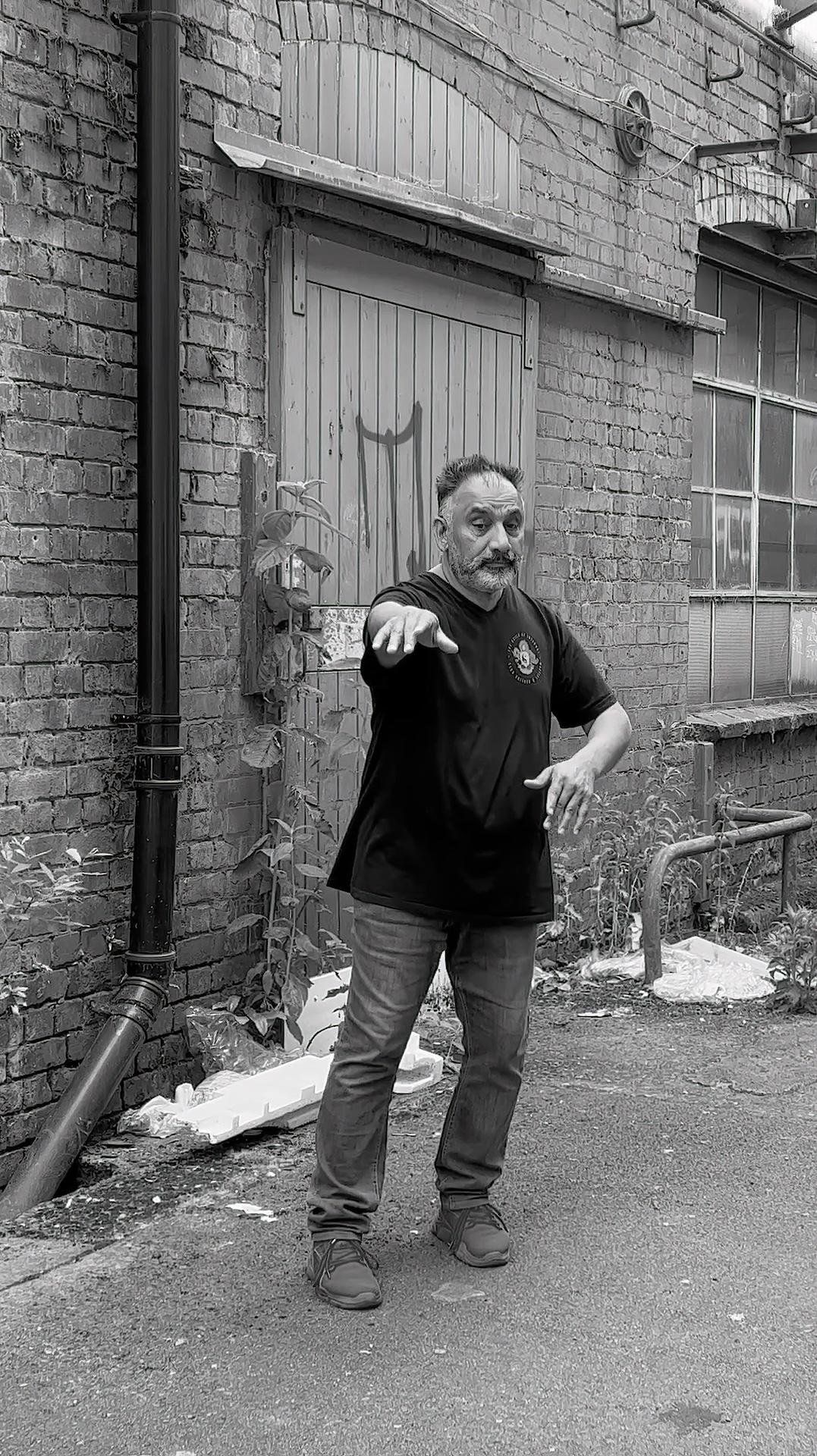
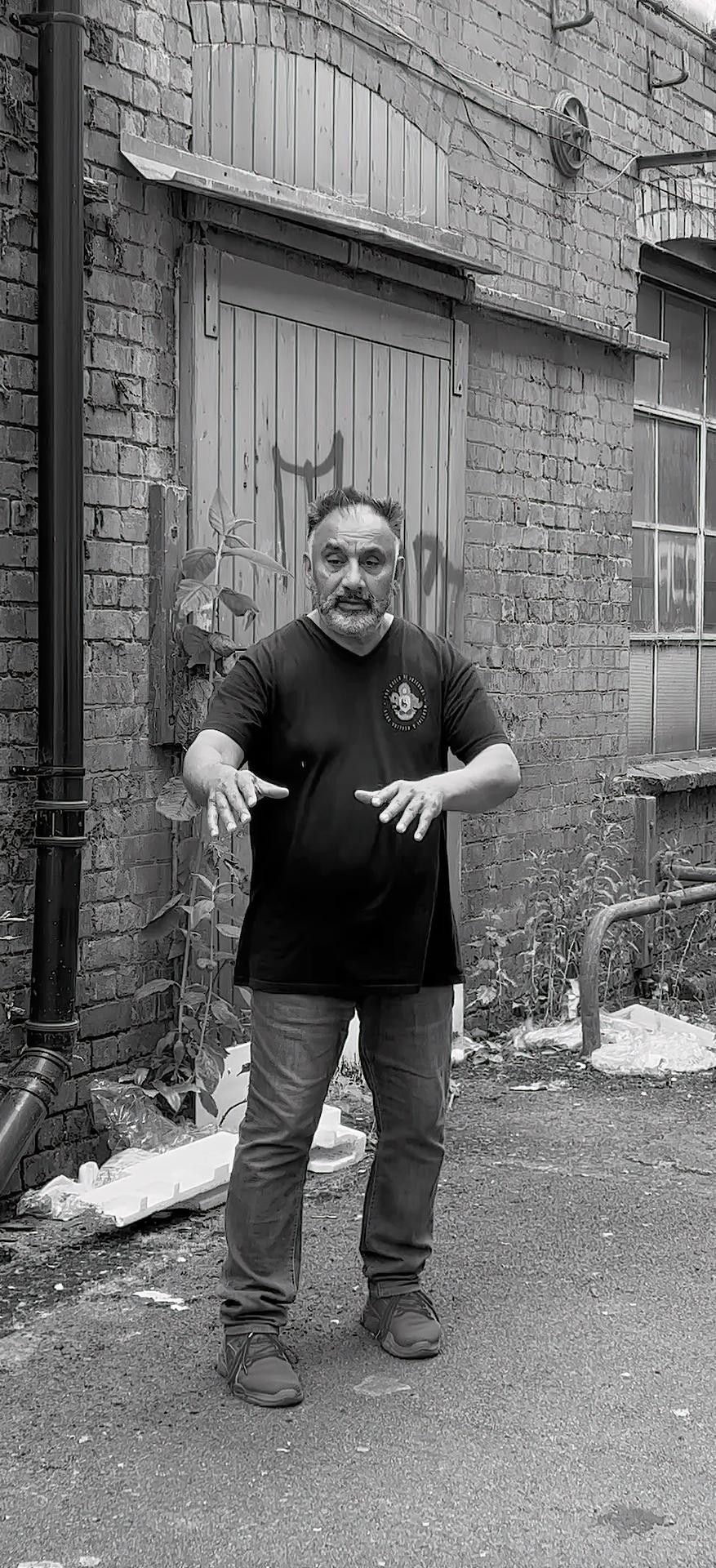
* The left hand can hook the eyes, or alternatively grab the hair or even the ear to yank the head violently.
Method Eight — An open-side method
Solo
We again start in a reverse bow stance with your arms just hanging in front of you [Figure 13]. Your waist turns left causing your right palm to circle up, followed by the waist turning to the right, causing your left palm to circle up, as your weight sits slightly backwards [Figures 14-15]. As your waist turns to left again, your right palm comes forward with your thumb loosely ‘tucked’ in [Figure 16A], and with the right turn, the fingers of the left hand shoot forward, [Figures 16-17]. All the movements are done with a violent shake on the count of one!
Two-Person Method


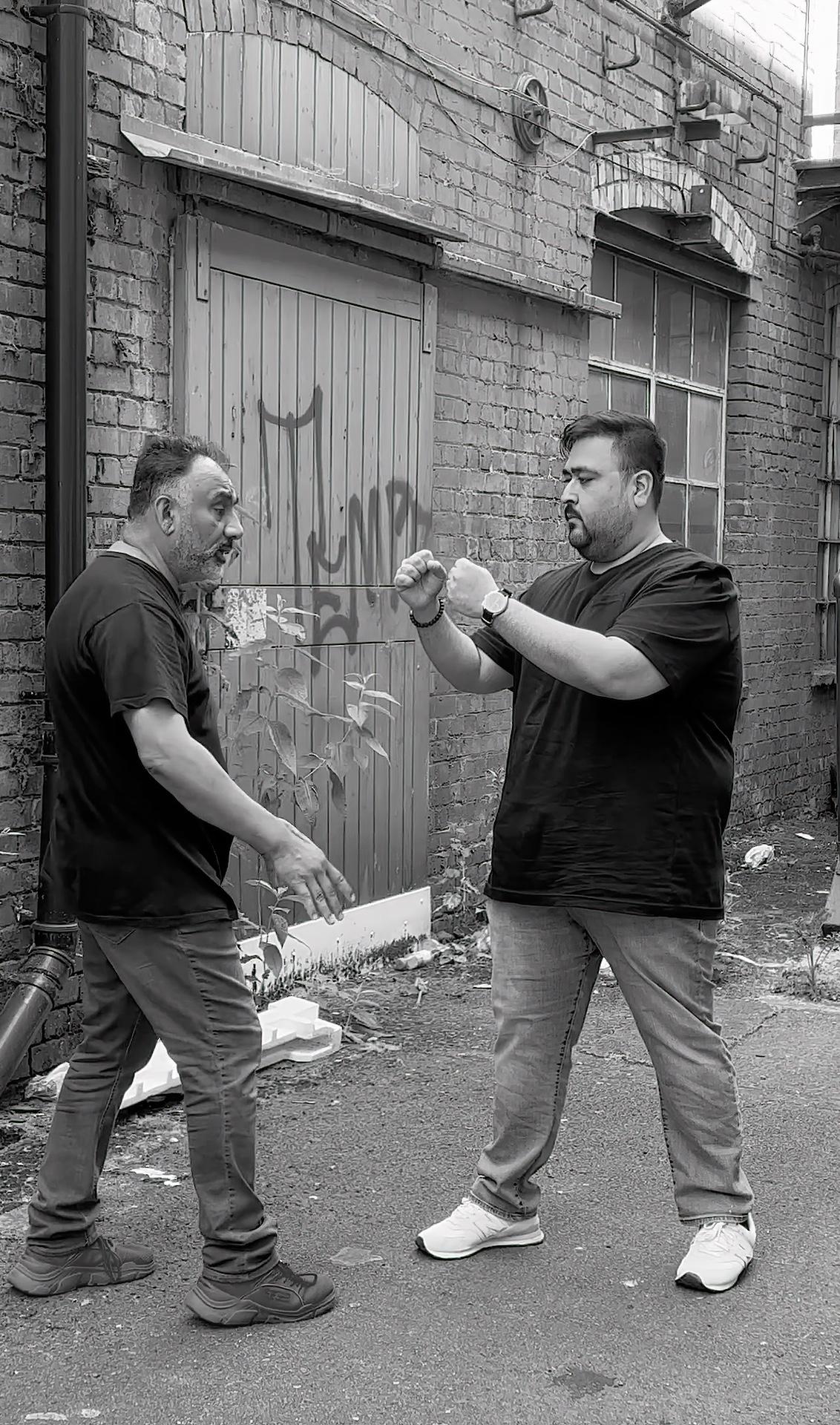
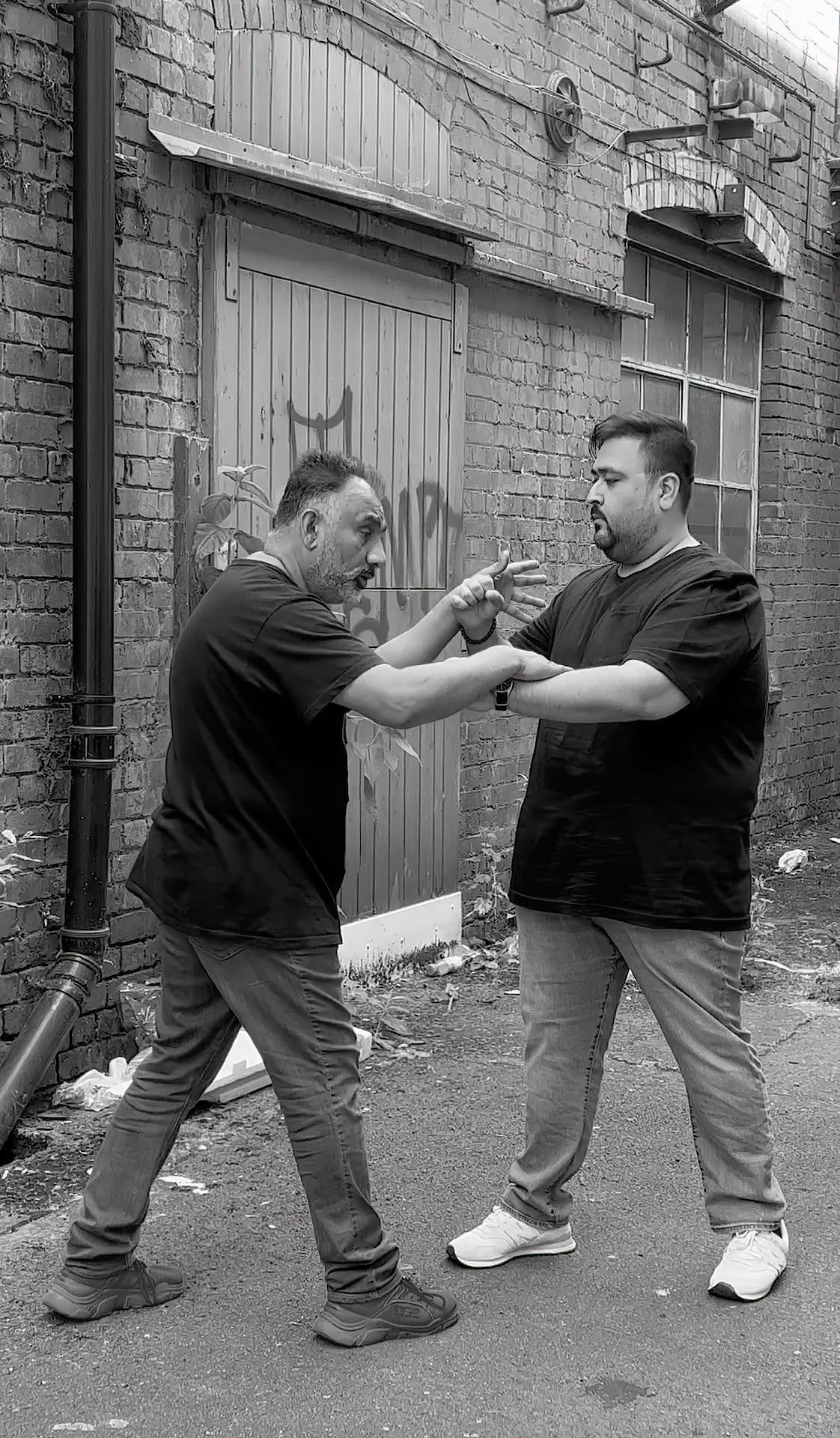
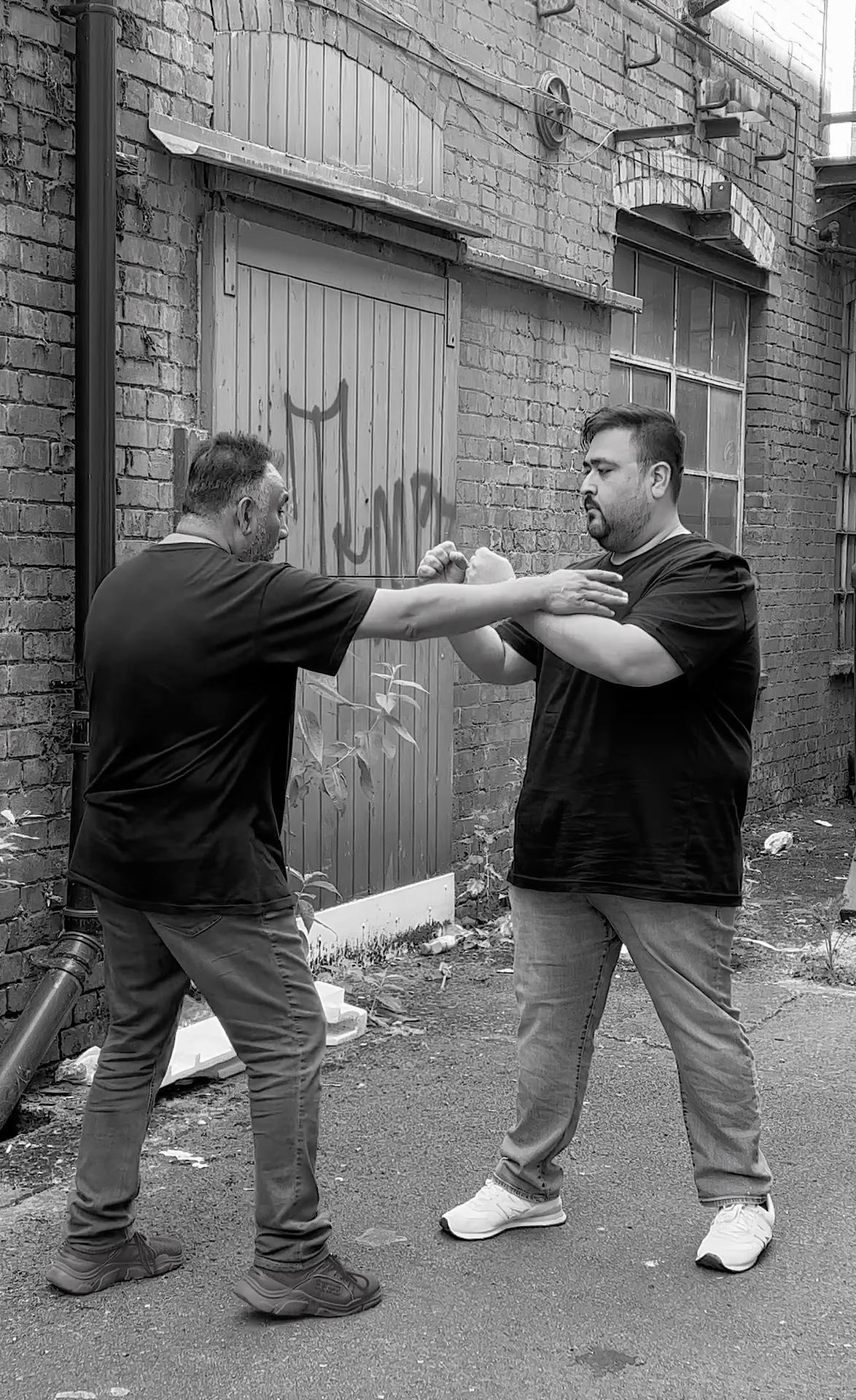
Points struck are Stomach 9 [ST9], and Conceptor Vessel 22 [CV22].
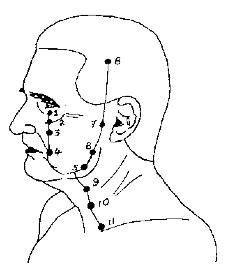
Your partner stands in front of you holding their guard [Figure 18]. Your right foot shuffles slightly forward as your waist turns left right, causing the right palm and the left palm to stroke down your partner’s left and right arms respectively [Figures 19-20]. This is the set-up for ST9 and CV22 strikes to follow. Again, the waist turns left, right as the back foot catches up, causing the thumb-side of the right palm to strike into ST9 followed by the fingers of the left palm jabbing into CV22 [Figures 21-22]. These are highly dangerous points, the striking of which can lead to death. It is vital that during the training method, the points are NEVER struck!
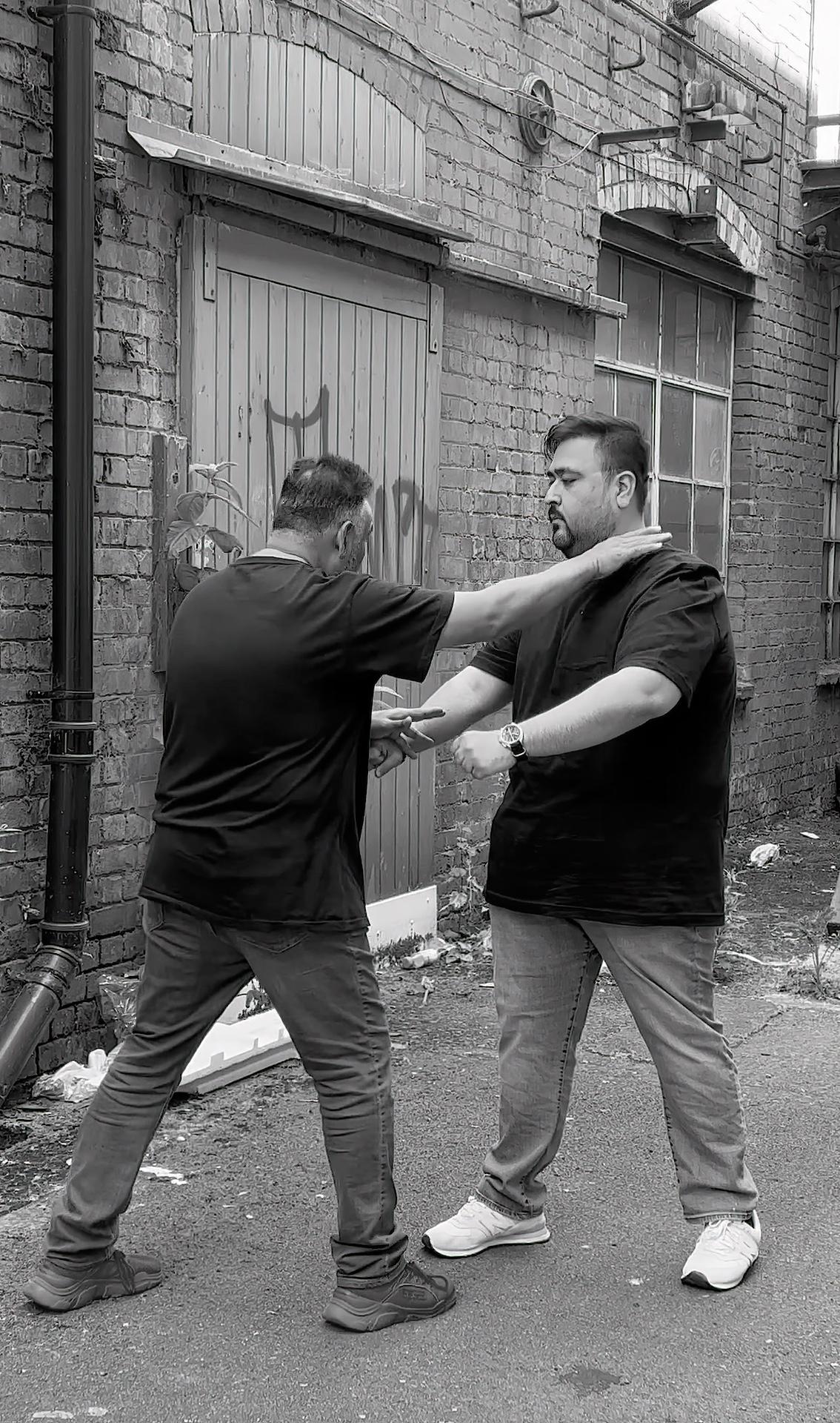
Method Nine — An open-side method
Solo
Start in a reverse bow stance with your arms held in front of you [Figure 23]. As you step forward* with your right foot, your waist turns to the left, causing both palms to change state and strike to the left — the left palm changing from yin to yang and the right palm changing from yang to yin [Figure 24]. Immediately your waist turns to the right taking the palms with it as they reverse state [Figure 25]. The waist turns back to the left with the right ‘tiger paw’ striking forward [Figure 26] as the left foot catches up. The entire sequence is done explosively on the count of one!
* The images shown are from a static position to prevent camera blur!
Two-Person Method

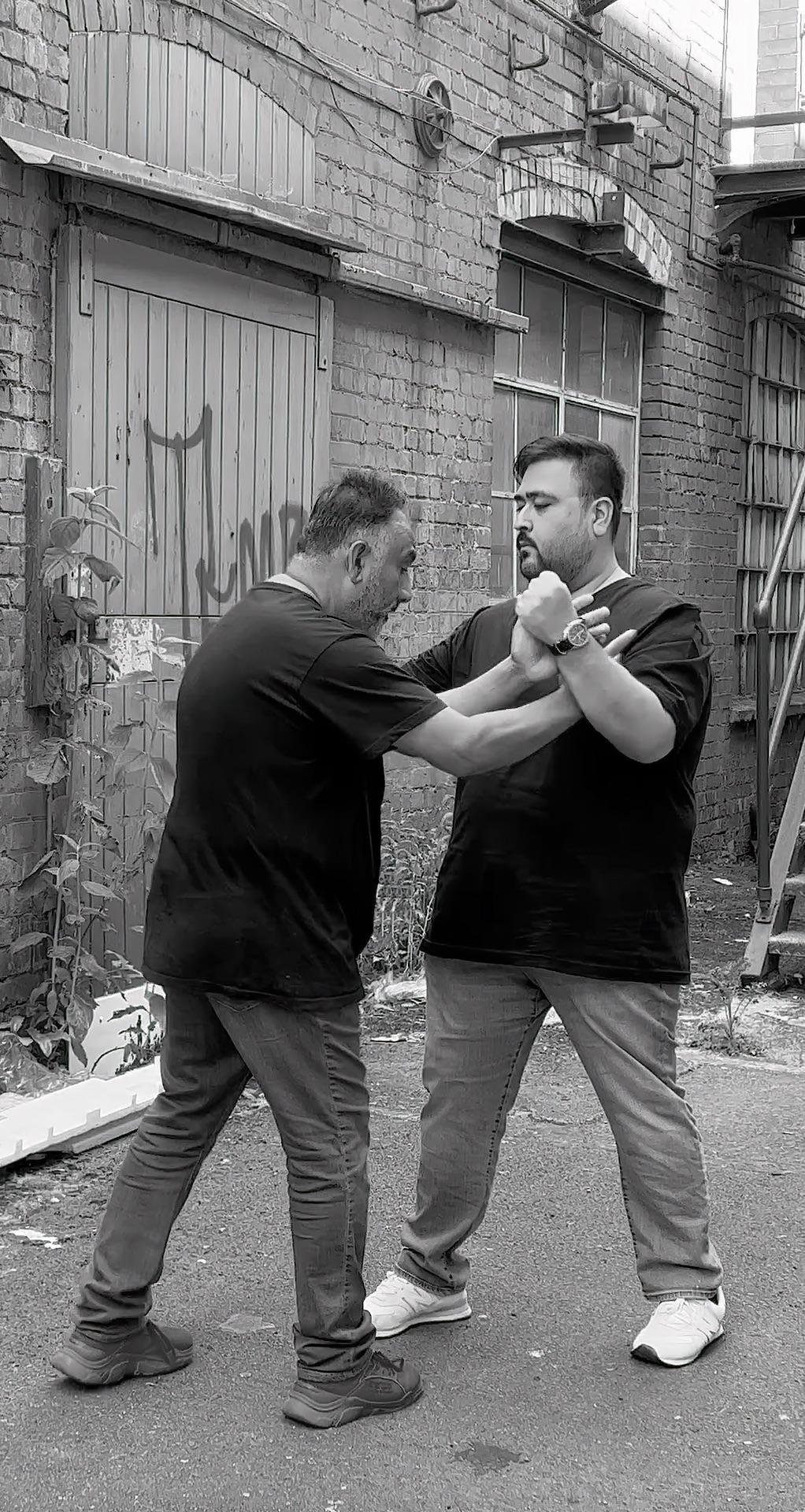
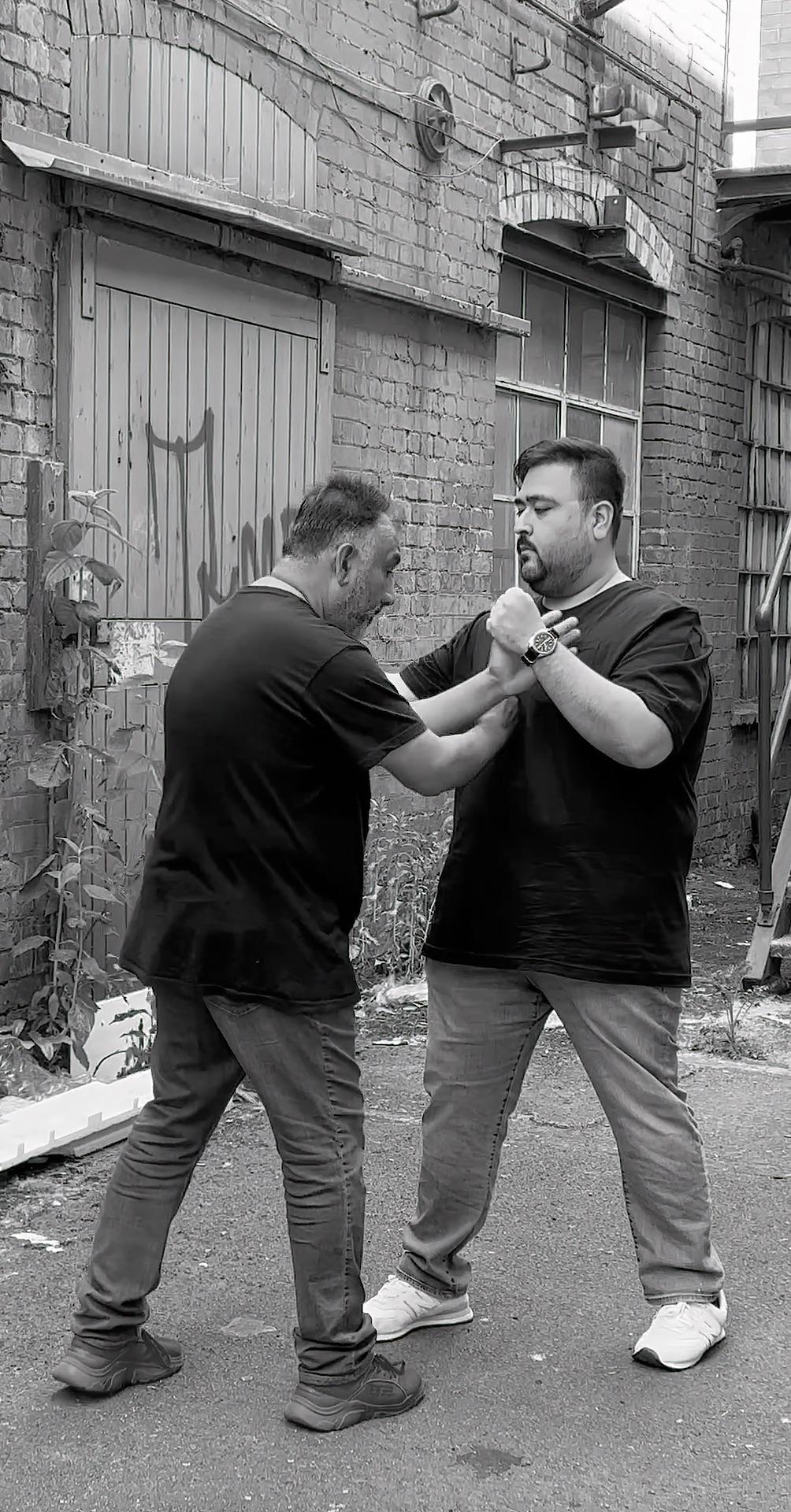
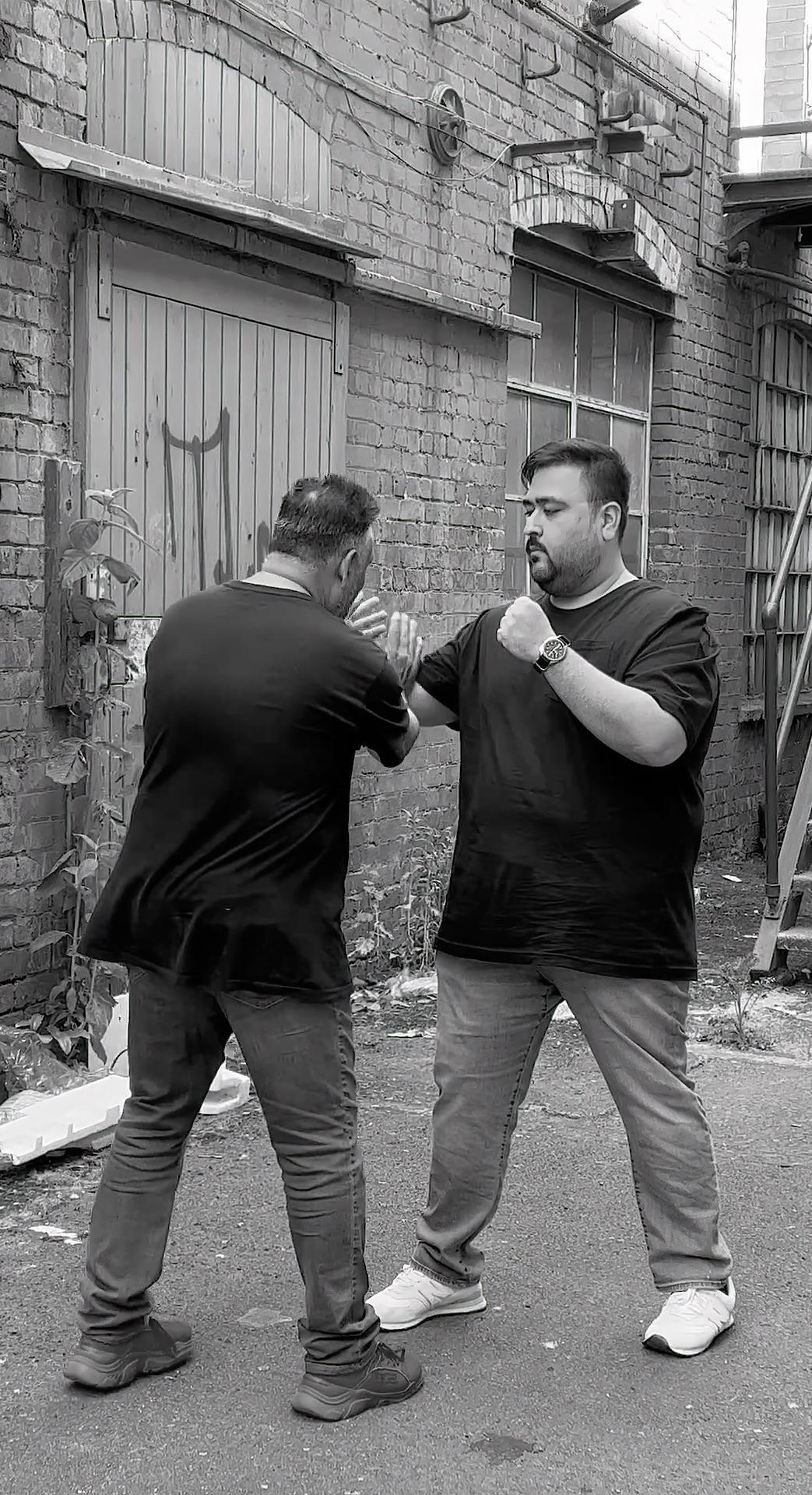
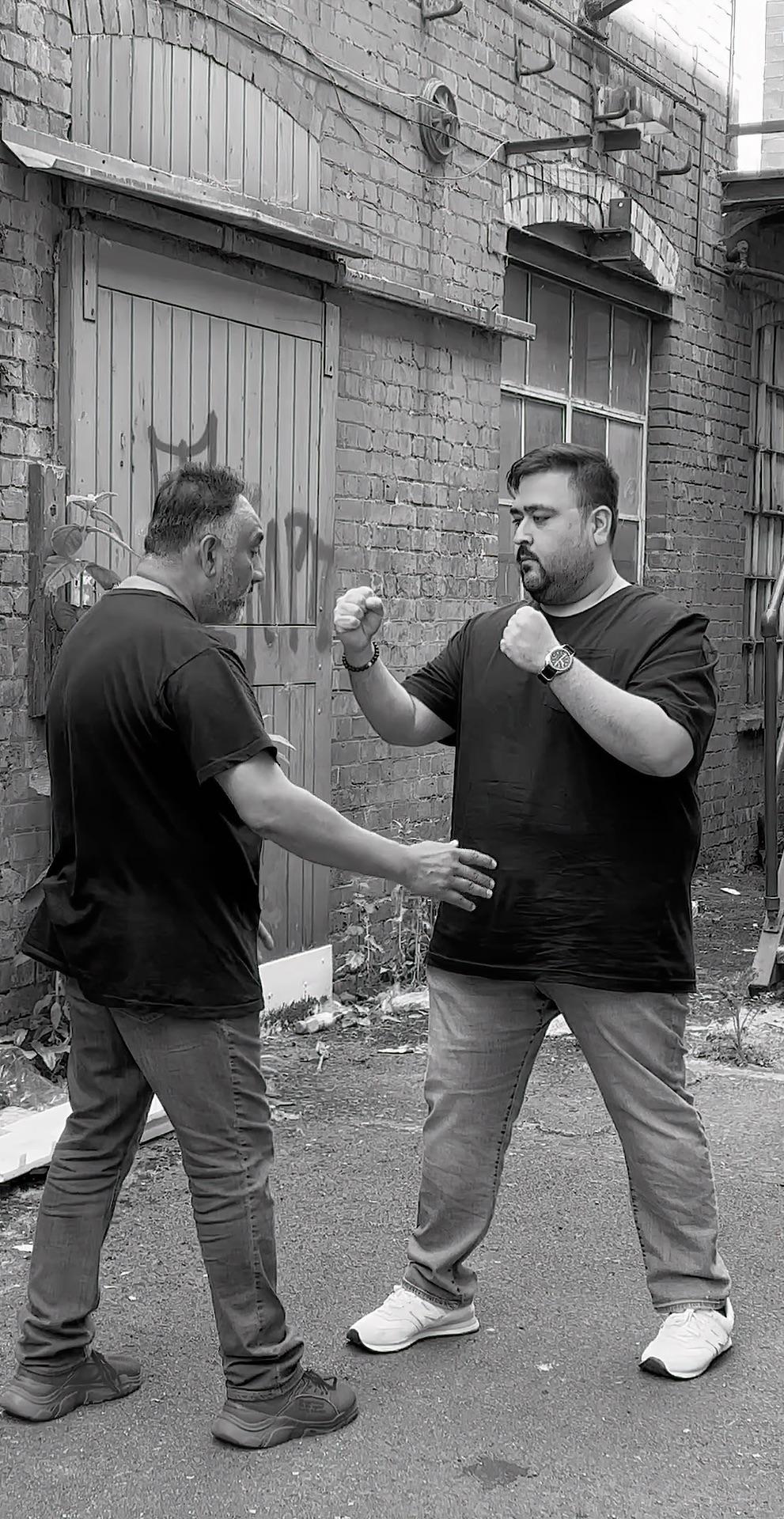
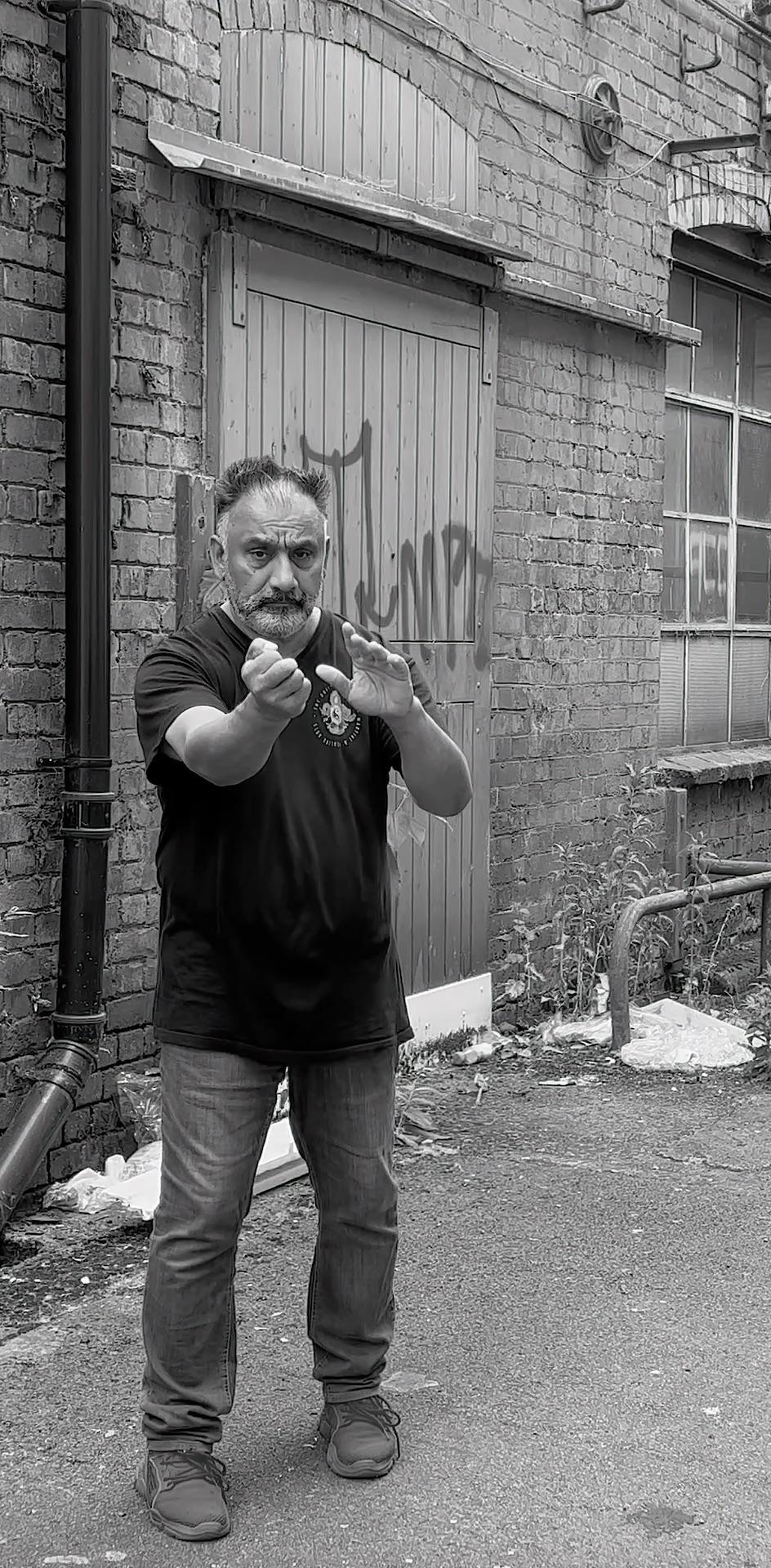
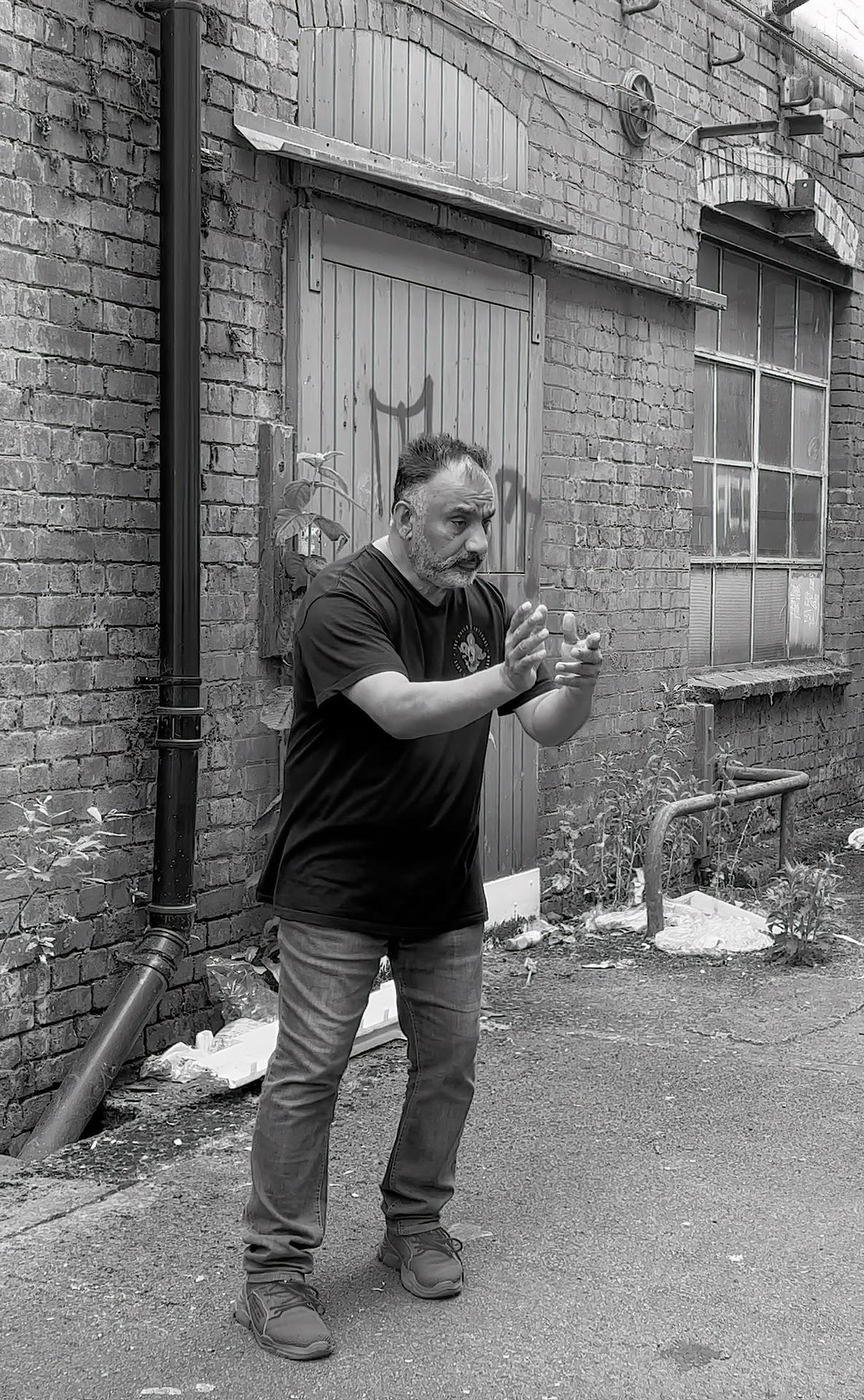
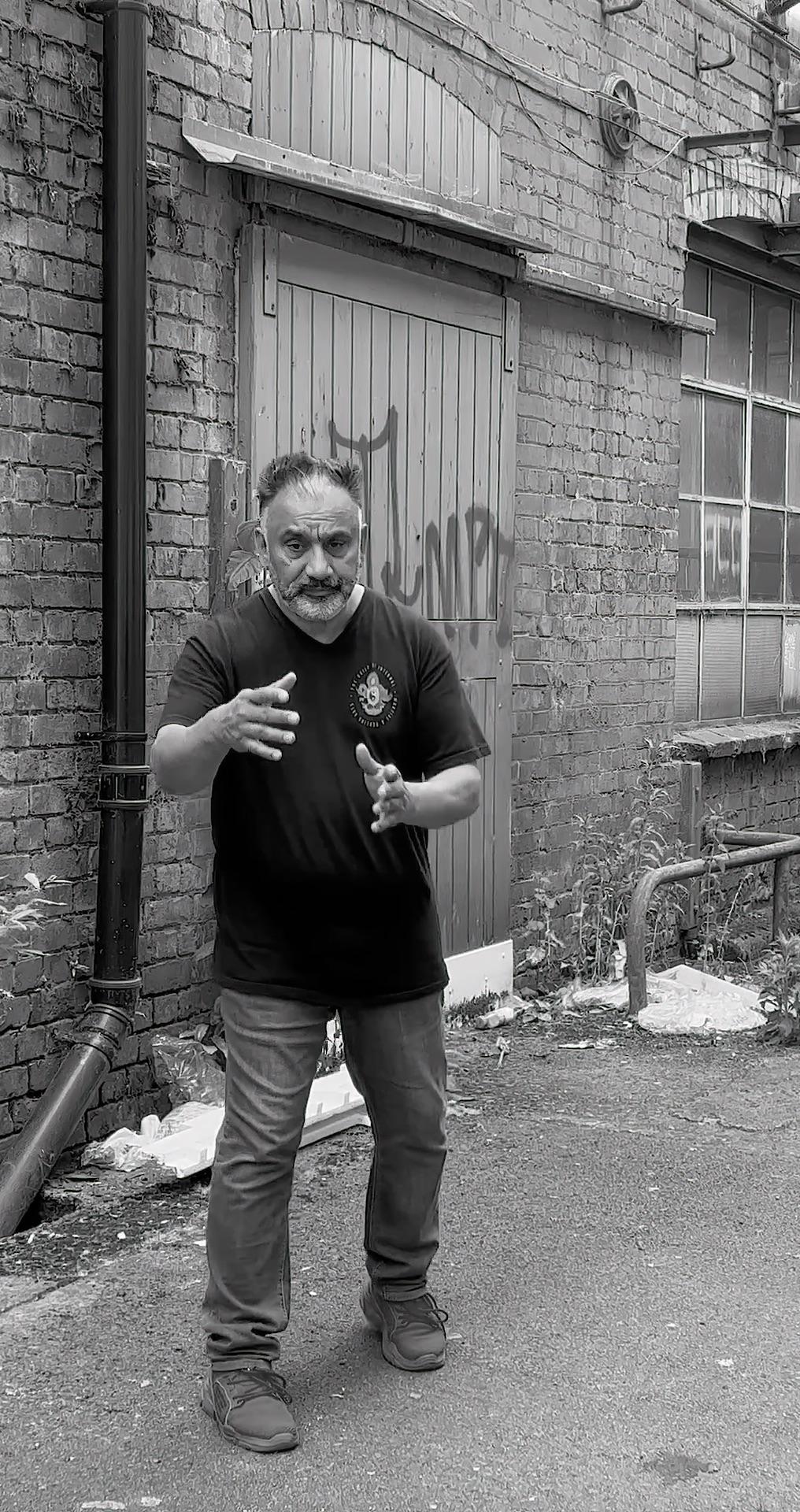
The points struck are Lung 5 [LU5] on the crease of the elbow, Pericardium 6 [PC6 and Stomach 10 [ST10]. Again care must be taken to not strike ST10 which equally as lethal as ST9 if not worse!

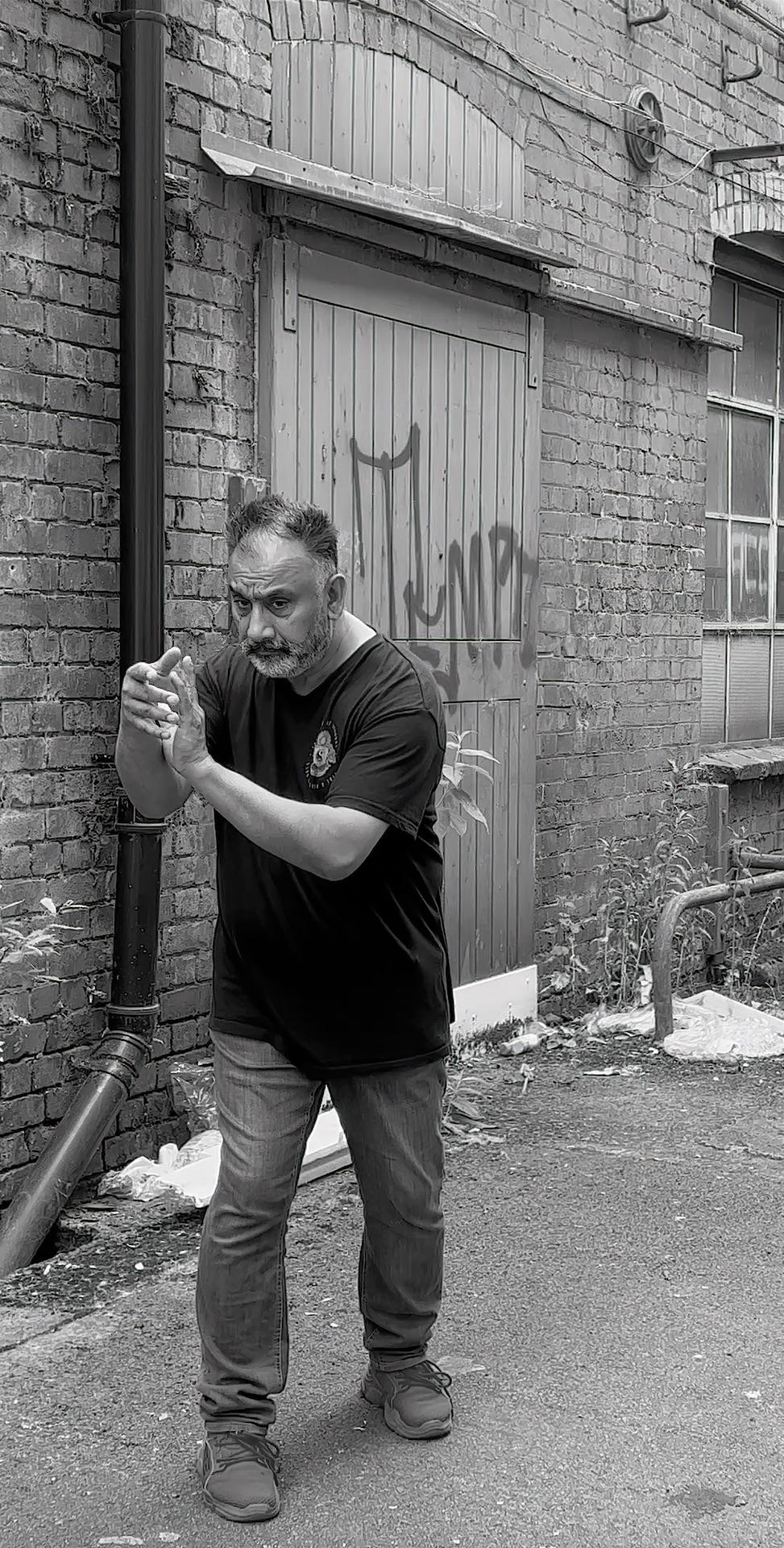
Your partner stands with his guard up. This could also be a representation of right, left or even a left, right strike [Figure 27].
As you step forward with your right foot, your waist turns to the left, as your right palm strikes the crease of the elbow [LU5] and the back of the left palm strikes the wrist at [PC6], [Figure 28]. Immediately your waste turns to the right as the hands reverse and strike the left arm at the same points, [Figure 29-30]. The waist now turns back to the left and right, as your fingers snap together into a ‘tiger paw’ fist, with the central knuckle of the middle finger striking [ST10], [Figure 31] as your back foot catches up.
Method 10 — An open-side method
Solo
This method is in essence identical to the previous method. However, in this case, the palms remain open, but the movements of the waist and the footwork are the same giving us a double fa-jing shake.
Start in a reverse bow stance with your arms held in front of you [Figure 32]. As you step forward with your right foot, your waist turns to the left, causing both palms to change state and strike to the left — the left palm changing from yin to yang and the right palm changing from yang to yin [Figure 33]. Immediately your waist turns to the right and centre taking the palms with it as they reverse state [Figure 34]. The waist turns back to the left and right repeating both the previous movements [Figures 35-36].
Two-Person Method
The points being struck here on the arms are identical to the previous method. Whilst a strike to [LU5] in the crease of the elbow can happen, it is more often considered a nerve strike causing severe damage to the elbow. The area being targeted on the face and neck is another Neurological Shutdown Method. Whilst several points are being struck on the face and neck, it is the area that the back of the palm is covering which is the key. Figure 39A below illustrates the area in question.
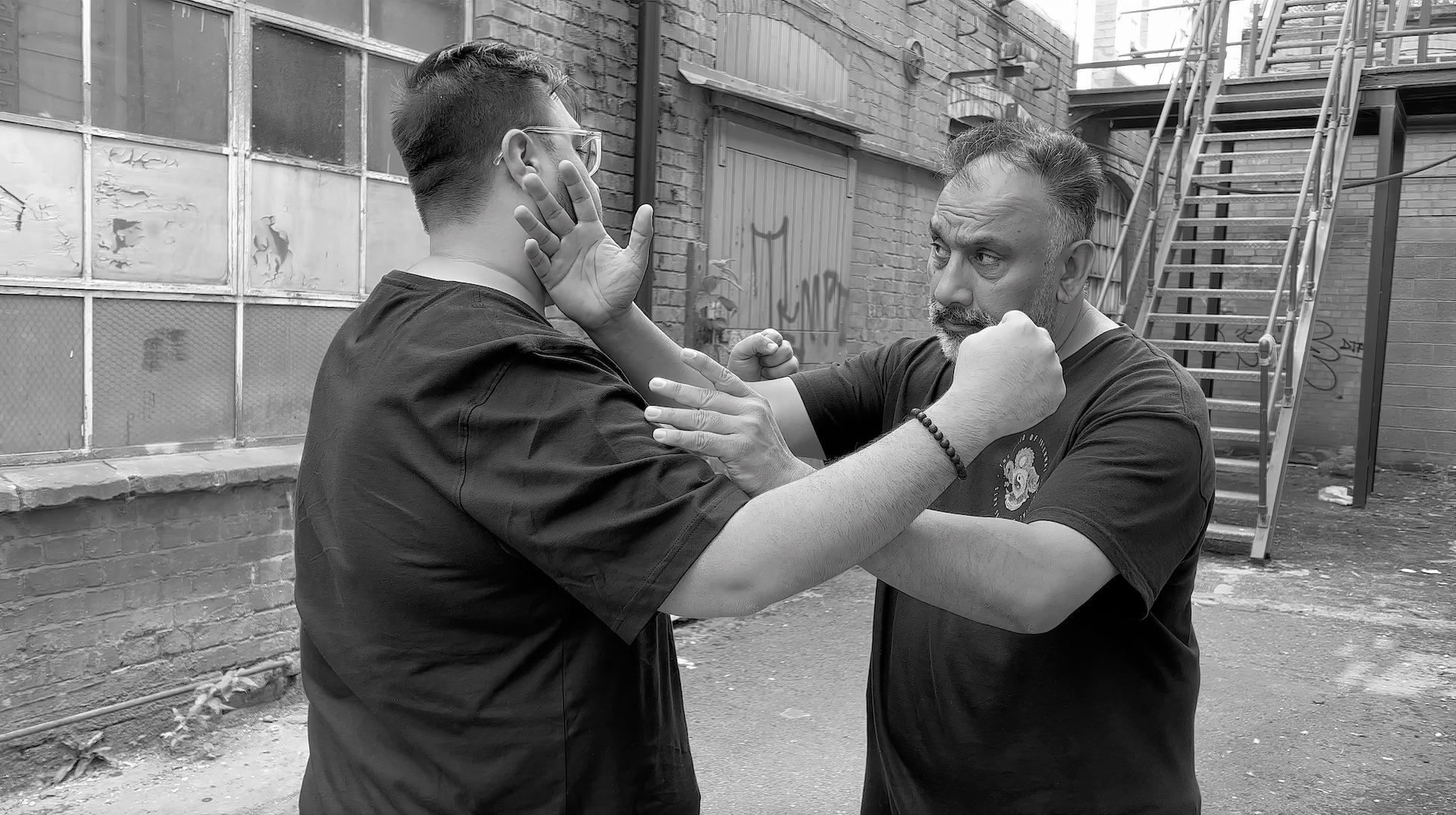
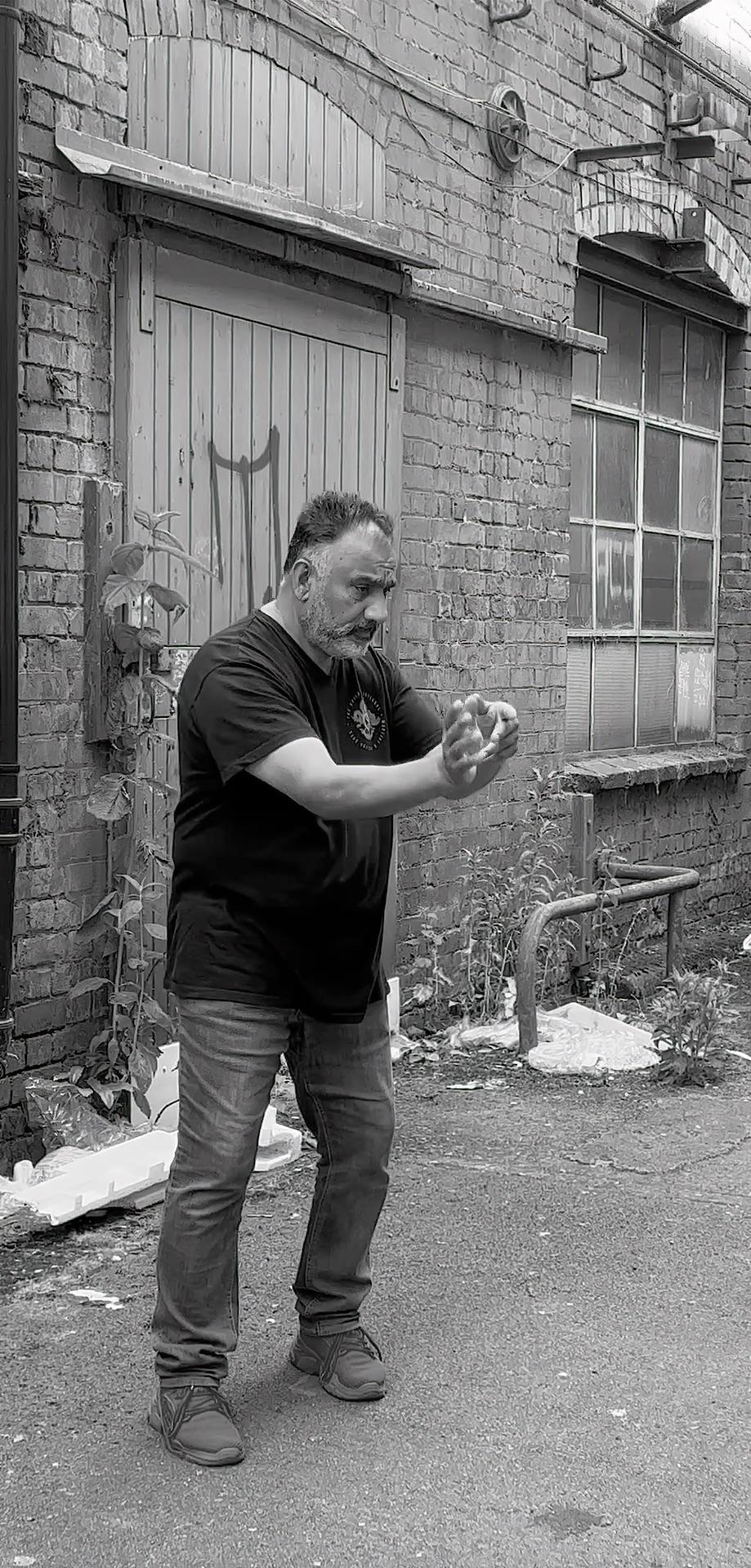
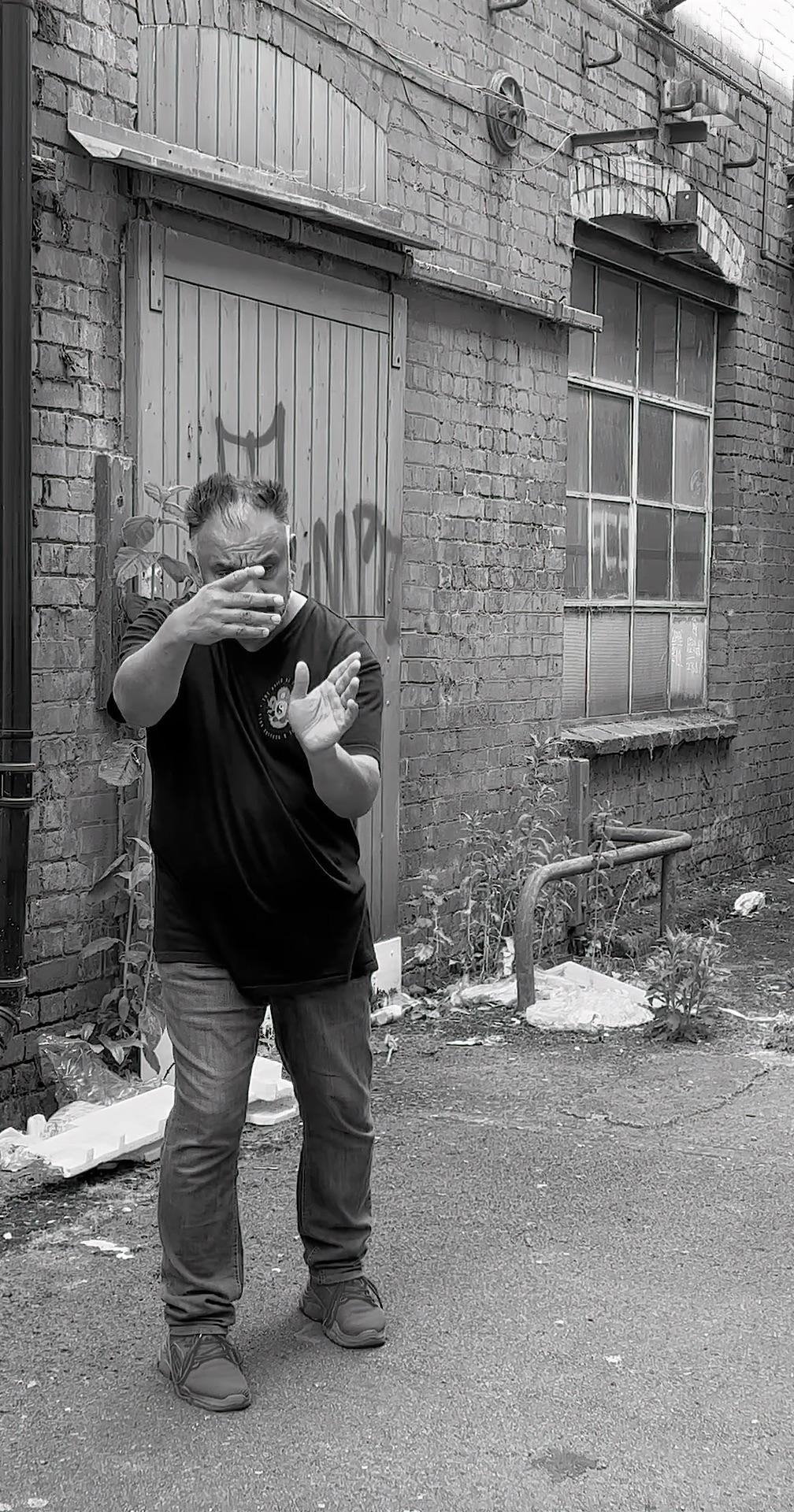

If you align your middle finger with the line of the jaw, the flat part of the lower palm covers both, the neck, the face and cheekbone. The strike is not hard! In other words you are not trying to knock the person’s head off! For the NS to occur, causing the knockout by essentially overloading the system, the strike must be a loose heavy in/out.
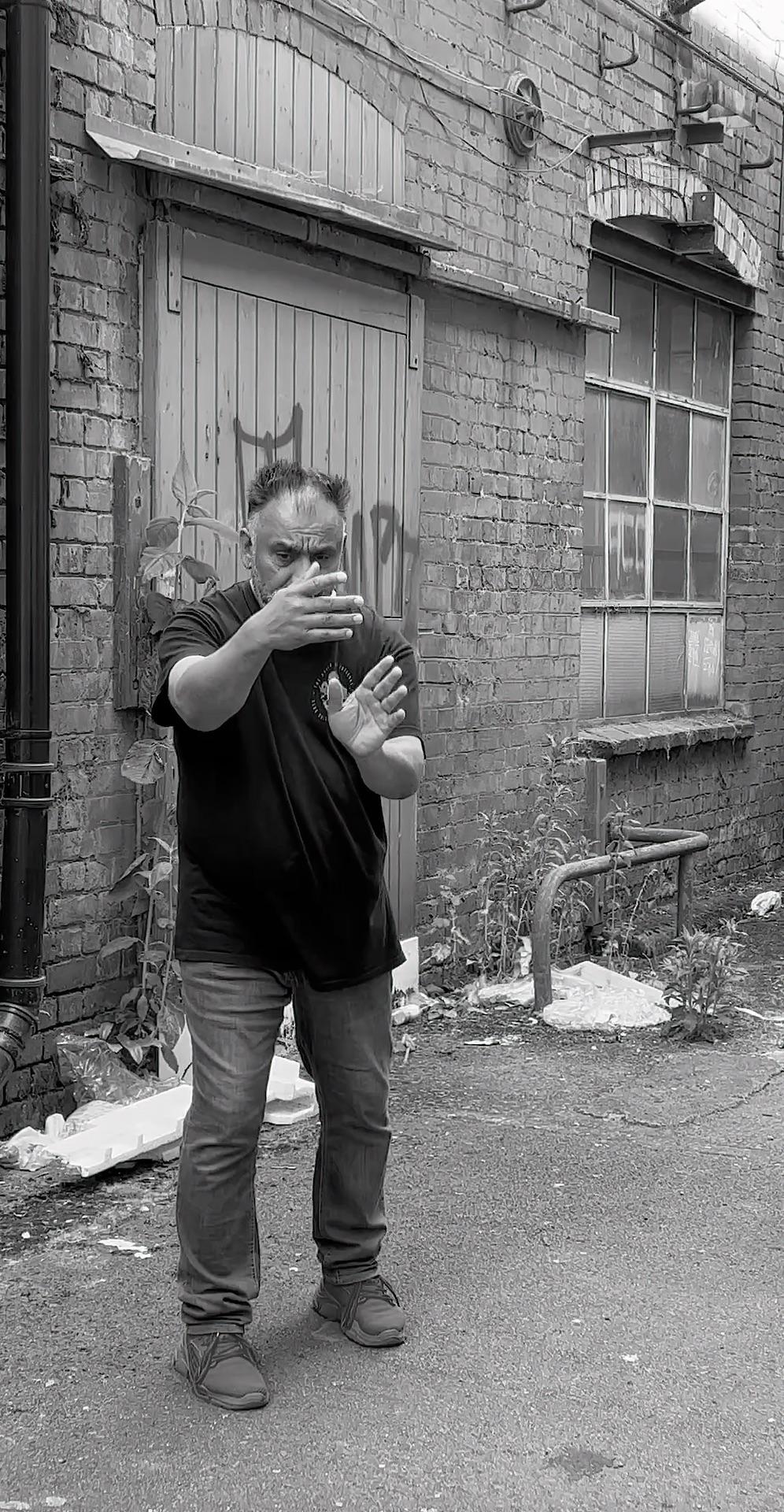
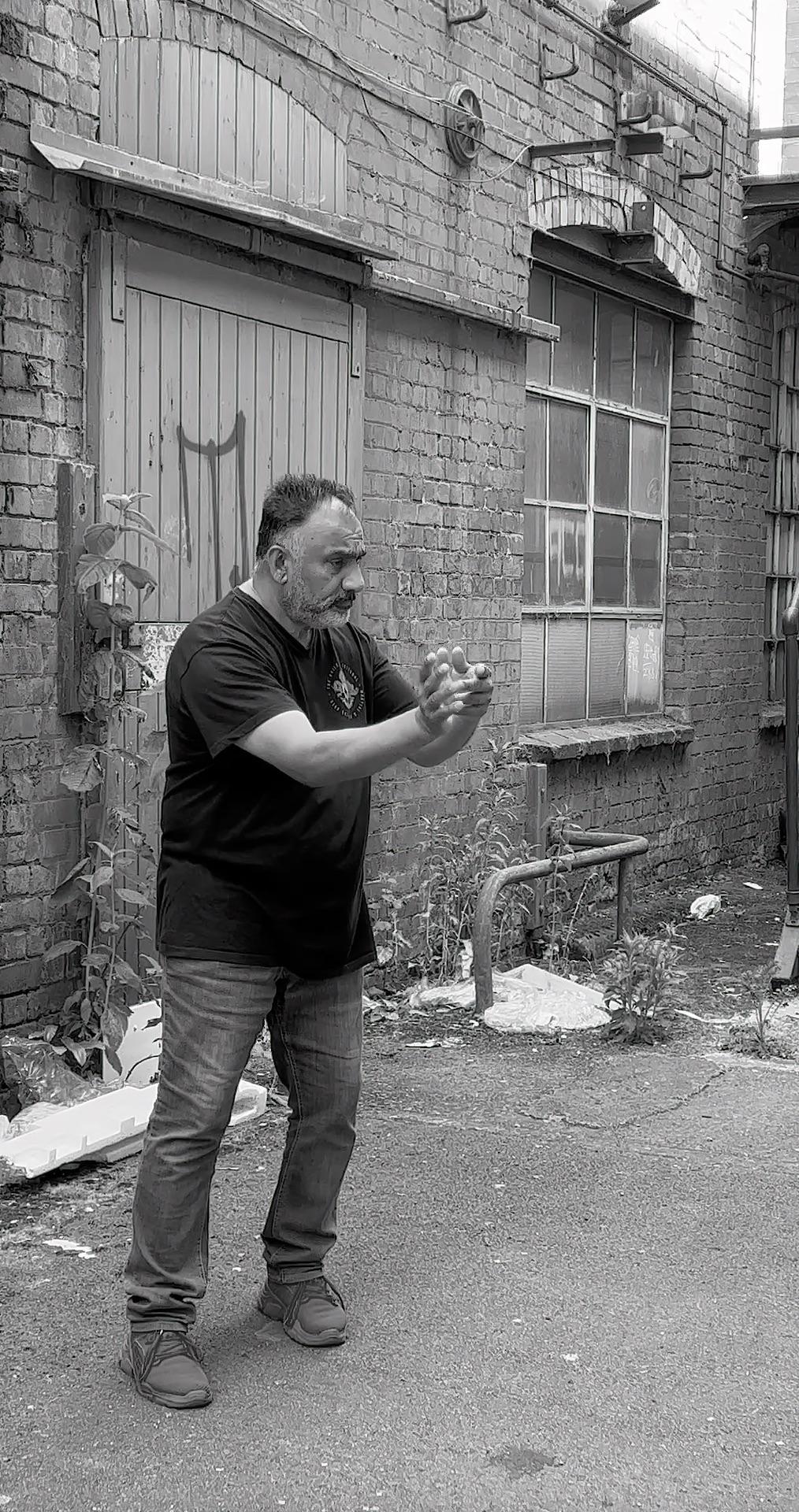
Your partner stands with his guard up. This could also be a representation of right, left or even a left, right strike [Figure 37].
As you step forward with your right foot, your waist turns to the left, as your right palm strikes the crease of the elbow [LU5] and the black of the left palm strikes the wrist at [PC6], [Figure 38]. Immediately your waste turns to the right as the back of the right palm strikes his face at the NS point [Figure 39]. The waist shakes violently again to the left and right, repeating the same strikes on both the arm and the face, [Figures 40-41].
This concludes the 10 training methods.
Conclusion
The Fa-jing Ch’uan Dim-mak training methods are considered to be the base tools which help develop combination strikes and their direction, alongside the power [fa-jing] at an innate level for the student. Whilst these methods appear simple at a cursory level, they are developing many skill-sets at a subconscious level. It is imperative that the student doesn’t take these methods lightly. Traditionally, as already stated in the introduction, the student was only a given a single method and could not move onto the next one until they had completely understood and developed the necessary skill sets. Each one of these skill-sets would then be used to develop further more intricate skill sets including ‘inch energy’.

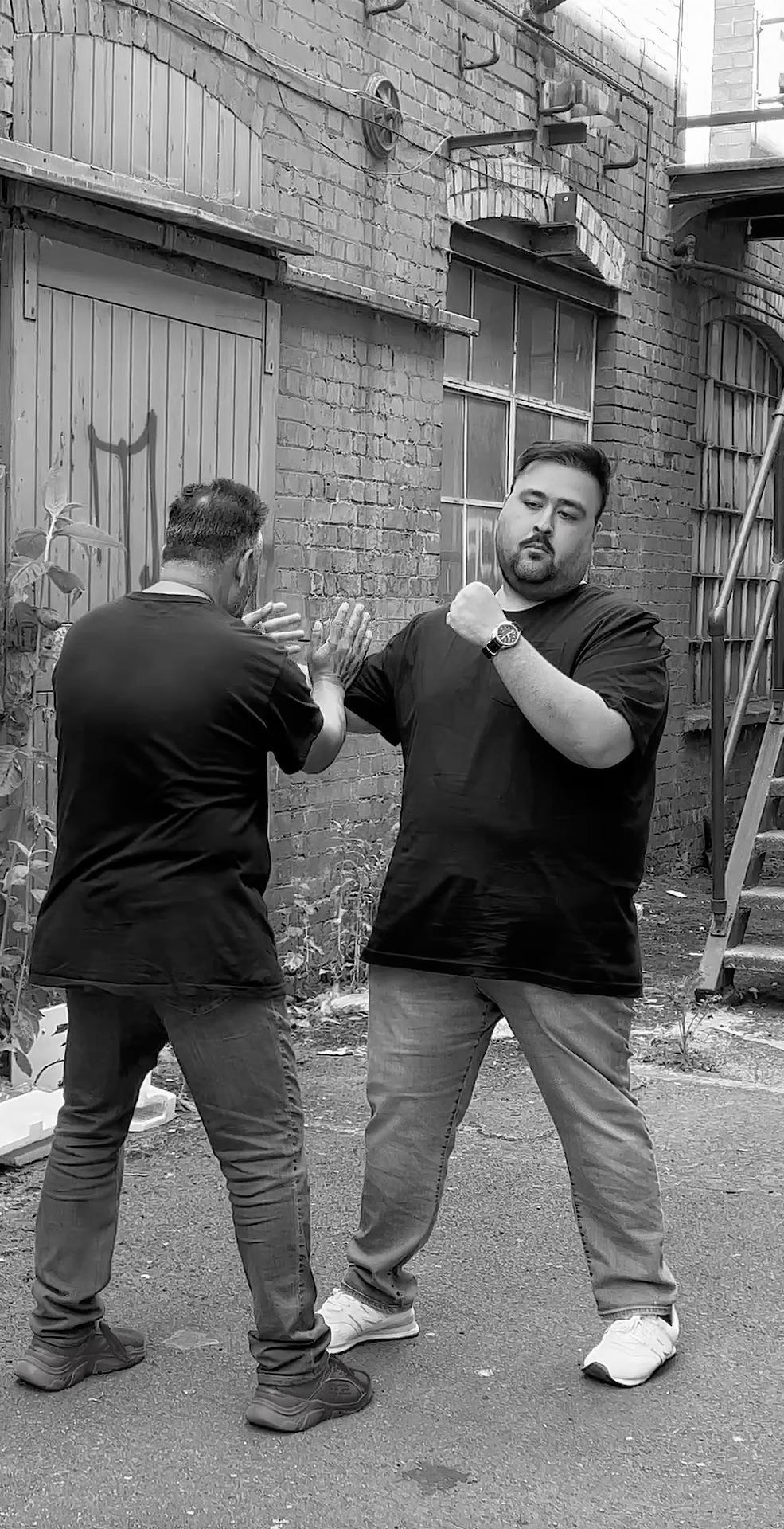
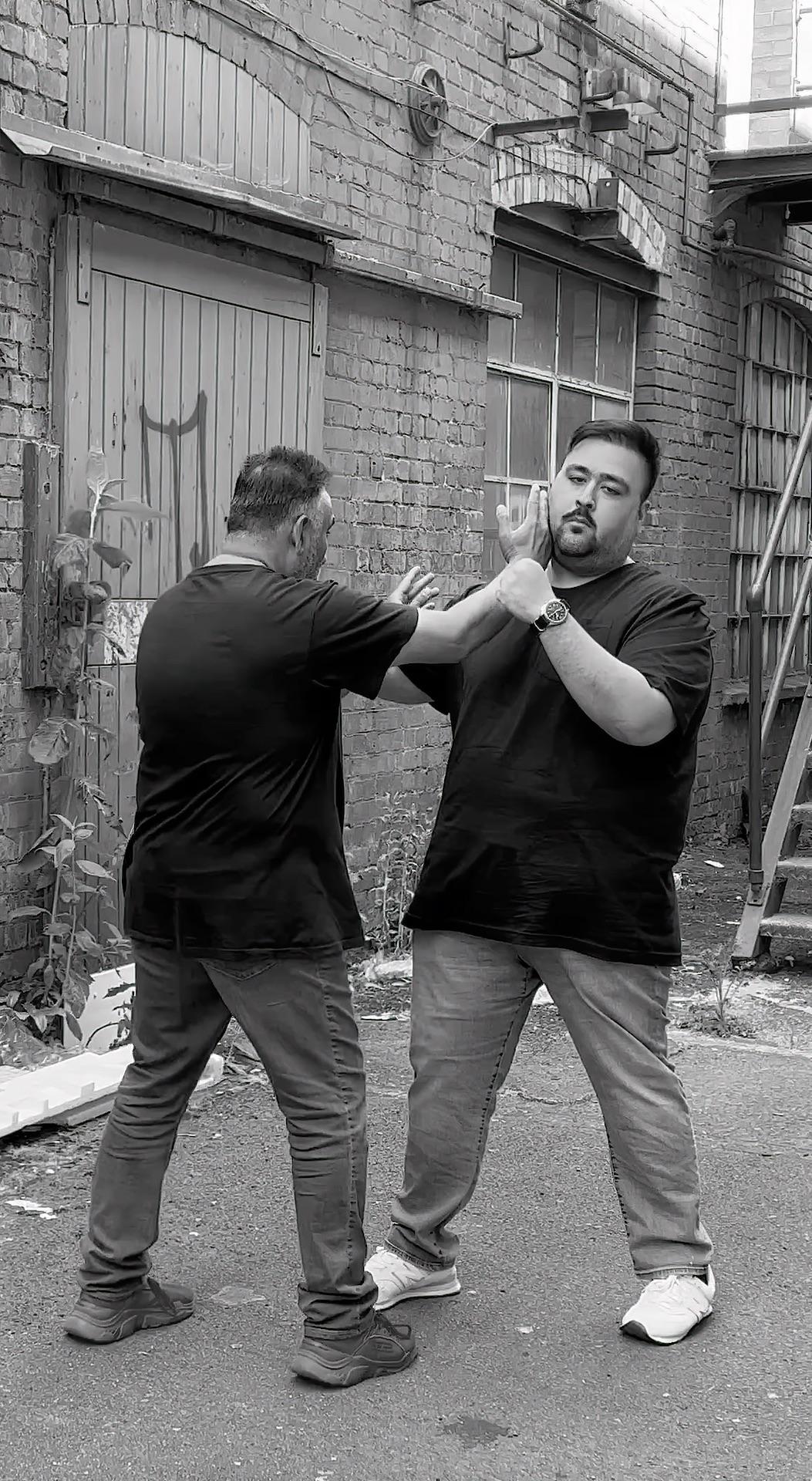
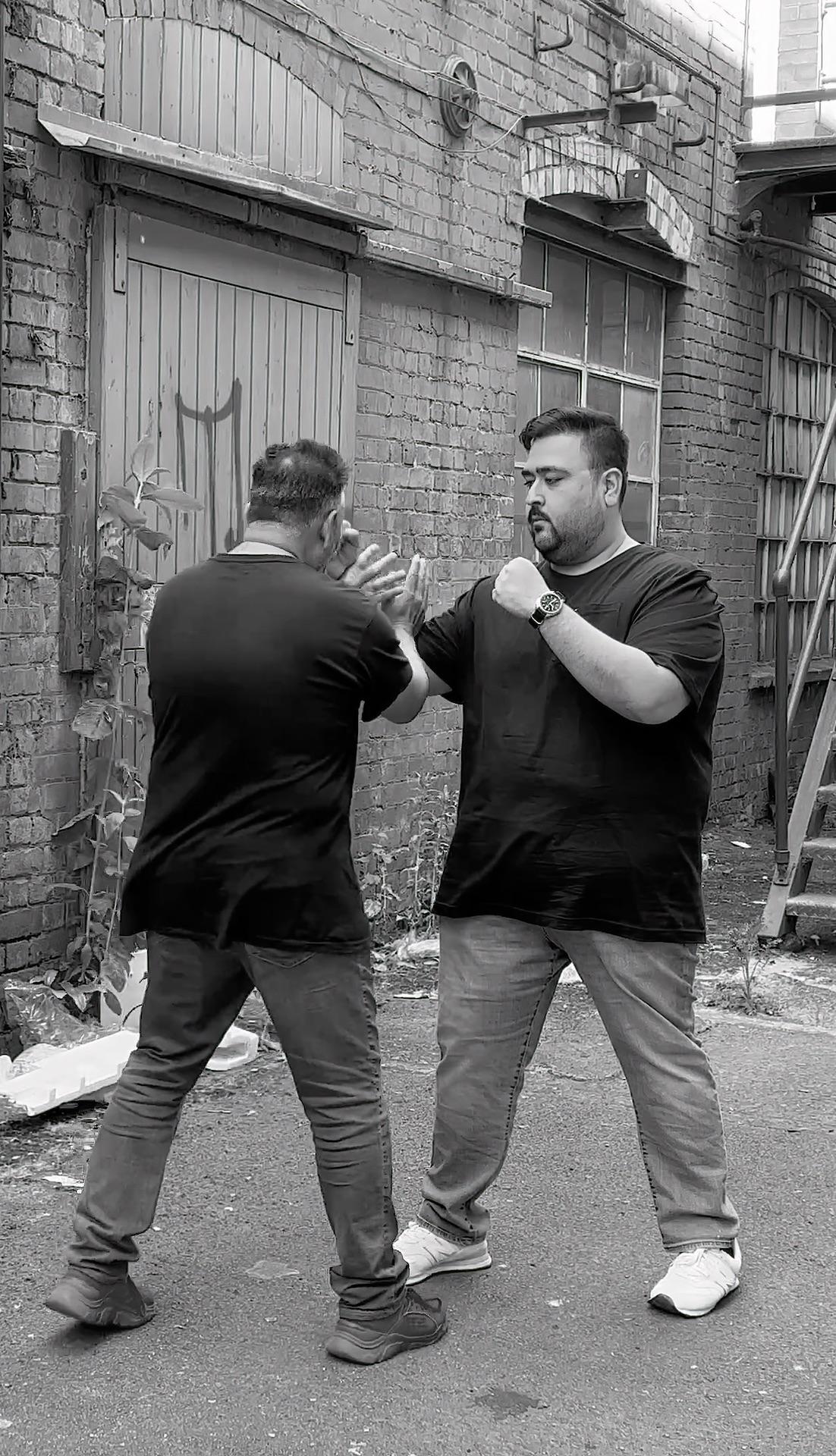

The points and combinations shown here are lethal — especially those around the neck, head and face. Once again, students are warned not to trifle with these points as serious injury or death can occur.
It is highly recommended that students find a competent teacher who has had extensive training in these methods and has the skill sets with which to execute them properly. Unfortunately, in this age of digital media, many socalled ‘masters’ learn from videos without any personal instruction or evaluation, and then go on to teach them to others recklessly!
My thanks to my nephew Adeel Butt, who was visiting me from New York City, for stepping in and being my ‘wooden man’ in the compilation of these images.
"Every sensation happens through something being moved.”
Aristotle (384 – 322 BC)
Perhaps at this moment you have a kata in mind that you have seen in your dojo, at an event or on the internet, or that you have performed yourself. You may also be imagining a picture that you have looked at or painted yourself. Do you remember the atmosphere, and the feelings they evoked in you?
Are there matching prerequisites?
The karateka follows an existing and specified step diagram, the embusen. The painter, on the other hand, creates a composition on paper himself, lays out a basic form so that he knows where his steps are to lead.
Performing a kata is not a real fight. It is an exercise form of stylised fighting. However, you must be a fighter to perform it credibly and to give it meaning. Frequent and especially regular practice and training of the various techniques through basic school (kihon) and application with a partner (bunkai) are prerequisites. The principles of power, acceleration, speed, stability should also be known and practised in order to better execute the individual movement sequences. This requires a high level of discipline.
Can a painter simply create a picture without practice? Of course, it is possible: just think of children who paint away and express their innermost feelings in an unadulterated way. You have probably also seen paintings that do not seem to require any technical skills. They are only alive through the mood and expression they create. It is usually the case that the artist wants to master his craft. This includes knowledge of the properties and handling of his tools, in this case the handling of the brush and the colours. Practice and training are done through individual studies, sketches, etc., so that the brush posture becomes more flexible, loose and relaxed. This enables the painter to move his tool better, to control it and to use it purposefully. It also makes sense to know the principles of painting, such as the effect of colours, light and shadow, perspective, composition, to be able to apply them consciously.
The connecting characteristic between the fighter and the painter is therefore, the discipline to practise, and thus, to constantly improve: An important prerequisite for targeted, consciously controlled movement sequences.
Let us first look at the start of the kata and the picture:
Every kata begins with a “yoi”, every painting with the preparation of the necessary materials and the preparation of the workplace. This is getting ready, concentrating, tuning in, and getting engaged in the coming moment. Even before the first technique, the first brushstroke, the mind is cleared of everything, including self-doubt. The French painter Paul Cezanne (1839 - 1906) expressed himself in this context with the following words: "If I think while painting, everything is lost."
“The spiral of life”
A snail with its spiral snail shell moves through the colourfulness of life. The spiral as a universal symbol represents life with its infinite movement and its change.
Watercolour painting by the author
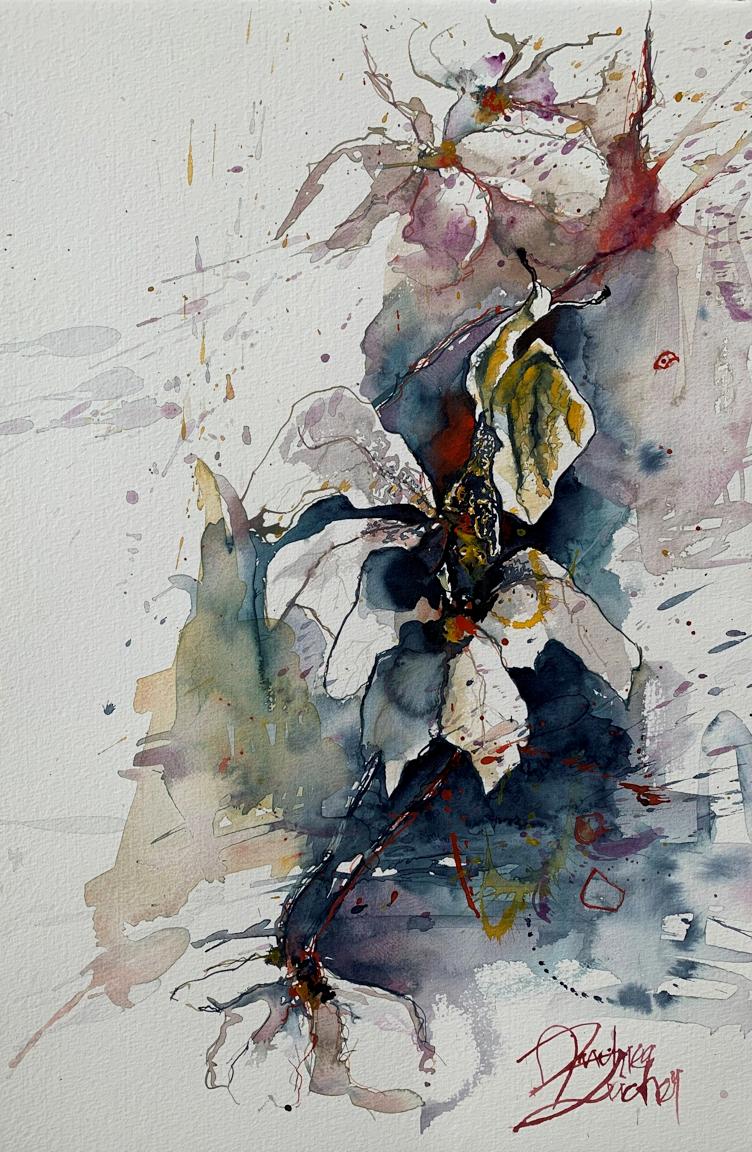
By conscious inhaling and exhaling, energy is bundled, body and mind are relaxed. What remains is confidence in one's own strengths, confidence in oneself. Perhaps you have also noticed this in everyday situations. Just before you start a task, you breathe in and out deeply and then you can begin. The same is true for the karateka and the painter. Both focus on the coming moment.
What similarities can be found during the performing?
On one hand, there is the rhythm and breathing as a unifying element. During a kata, the fighter performs techniques that are hard, soft and smooth, fast, slow, straight, round, offensive, defensive, in tension and in relaxation. With the brush as an extension of his arm, the painter rhythmises his brushstrokes and his application of paint. The rhythm is paired with the corresponding breathing. In this way, the respective movement sequences receive their meaning.
On the other hand, reduction to the essential plays a role for both the karateka and the painter. Effective fighting techniques are clear and contain no unnecessary movements. Therefore, they are powerful and to the point. In a painting, too, not everything has to be presented, every line drawn, every motif completed. The effect can be more truthful and much more powerful if the artist has the essential in mind and reduces accordingly.
Have you ever looked into the eyes of a fighter? This is the sense organ which serves first for perception and orientation. During the kata, the fighter turns to face the opponent in different directions based on the step diagram. However, the eye is primarily the gateway to the soul. Thus, the fighter fixes his opponent and communicates with his eyes. In this you can read his will, his determination and his self-confidence.
While painting, the opposite is not a person, but the surface that is being designed. Here, too, the artist's eyes are fixed on it. They perceive lines, forms, angles, perspective, colours and movements and orient themselves in the picture. The soul of the artist is reflected through the eyes. He is transparent and shows his inside which expresses himself in his painting. That is why you can read in a painting who the artist is, or which characteristics and emotions were predominant at the moment of painting.
Therefore, the eyes are of great importance both during kata and when creating a picture because they have a decisive influence on the effect in each case.
Another common feature is that both, the painter and the karateka, are allowed to be original in their performing. With the artist, this aspect seems immediately obvious. He imagines something, a motif, a mood, or a message and through this creative power he creates something completely new. But how can a karateka express his creativity regarding the kata, which has been handed down and must not be changed? If we are aware that a kata is an exercise form of stylised fighting, it can certainly be used as a training tool. To be creative in this case means to create original variations in terms of speed, explosiveness, tension, relaxation, with weights, eyes closed, and under extreme situations.
A karateka performing a kata and an artist creating a painting: Both follow in the footsteps of their masters. These have left an important legacy through their deep ancestral knowledge. In terms of kata, we use the same step diagram and techniques as the masters of the time. The great painters also used the same tools such as brushes and paints. When the fighter and the painter are aware of this, a connection of today and yesterday is created. In this way, the precious heritage is honoured and kept alive.
Why does each kata have a different effect on us? Why does each image trigger a different vibration in us?
The answer to these questions is also a central commonality between the fighter and the painter: They are human beings.
Equipped with his abilities coupled with the imagination that there is a fight to be fought at that moment, the personality of the karateka is expressed in his movements. The fighter acts holistically at this moment: With his body (age, mobility and perception), with his soul (experiences, and situation in life) and with his spirit (knowledge, attitude, and his will). He makes visible who he is. He breathes a soul into the kata and makes his performance felt by the universe.
The painter also combines what he has practised with his imagination. He likewise uses his body, visible through the brush movements, his spirit and his soul. This self-expression creates an image that triggers a feeling, an atmosphere and touches the viewer.
Thus, it is obvious why pictures or katas can affect us so differently: Sometimes a raging storm with unbridled power, sometimes light-footed and soft like a breeze, sometimes brief and intense like a blazing fire, often some nuance in between.
"The task of the artist is to represent what is between the object and the artist, namely the beauty of the atmosphere." If we believe the French painter Claude Monet (1840 - 1926) with his statement, then not only the painter but also the karateka is an artist. The proof of this is provided by the word "martial art" a technique to defeat enemies and to protect from hostile attacks. The fighter and the painter thus have another connection to each other: They practise art. The German artist and professor Joseph Heinrich Beuys (1921-1986) reinforces this statement by writing: "Every human being is an artist.”
The end of the kata and the picture: The circle closes
The kata is finished now and the "battles" are won. A painting has been created. The karateka takes up the yoi position and the painter puts down his brush, arranges and cleans his workspace and himself. In this way, the two artists complete their work. They have mastered their task and express this through conscious inhalation and exhalation. The energy that has been set free is bundled so that body and mind come to rest and the focus can be placed on reflection.
Do they see their strengths? Do they see their weaknesses?
Both, the karateka and the painter, do their best during their performance. It is the only moment they have that counts. It is precious, unique and a testimony of the moment. Their self-expression makes visible who the fighter and the painter are now. By reflecting this actual state, the two artists hold up a mirror to recognise themselves. In a process of development, the greatest task of human beings is to recognise and change themselves. If the fighter and the painter can do this, they will be able to improve their strengths, work on their weaknesses and thus develop themselves further by doing regularly. The German philologist and philosopher Friedrich Wilhelm Nietzsche (1844-1900) already wrote: "The snake that cannot shed its skin perishes." It is therefore a matter of being on the path or of setting out on the path again and again.
Funakoshi Gichin (1868 - 1957), the master and founder of the Shotokan Ryu style of karate-do, set out 20 rules of conduct designed to perfect the character. One of them is: "Training in karate encompasses your whole life." Or, to put it in the words of the German painter and graphic artist Paul Klee (1879 - 1940): "Movement underlies all becoming."
Conclusion
In summary, it can be said that the performing of a kata and the painting of a picture are movements that have discipline as their basis. Common features are focus, rhythm with corresponding breathing, reduction to the essential, importance of the eyes, creativity, historical heritage, imagination, expression of one's own personality and the consequent different affect. Both actors are artists. At the end of their work is reflection.
"What is artistic requires diligence, effort and work until it is grasped and learned," remarks the German painter and graphic artist Albrecht Dürer (1471 - 1528), making it clear that through discipline, the will to be on the path, more paintings or katas will be created and follow. The Chinese - American martial artist Bruce Lee (1940 - 1973) encourages: "Be yourself, express yourself, have faith in yourself." The fighter and the painter thus continue their action because they feel what Aristotle already formulated:
Andrea Bucher Goju Ryu Inzersdorf ob der Traisen, Austria
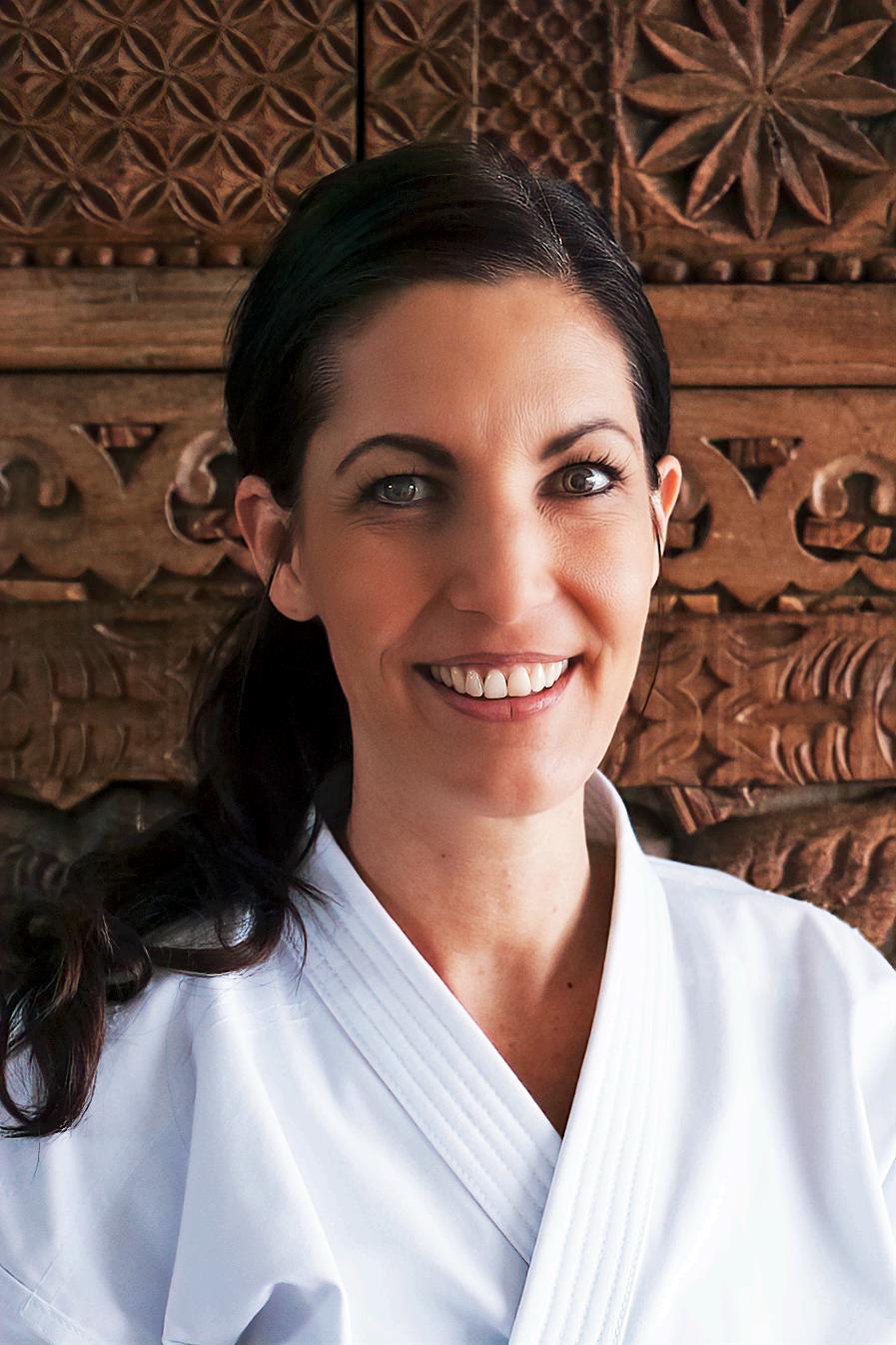
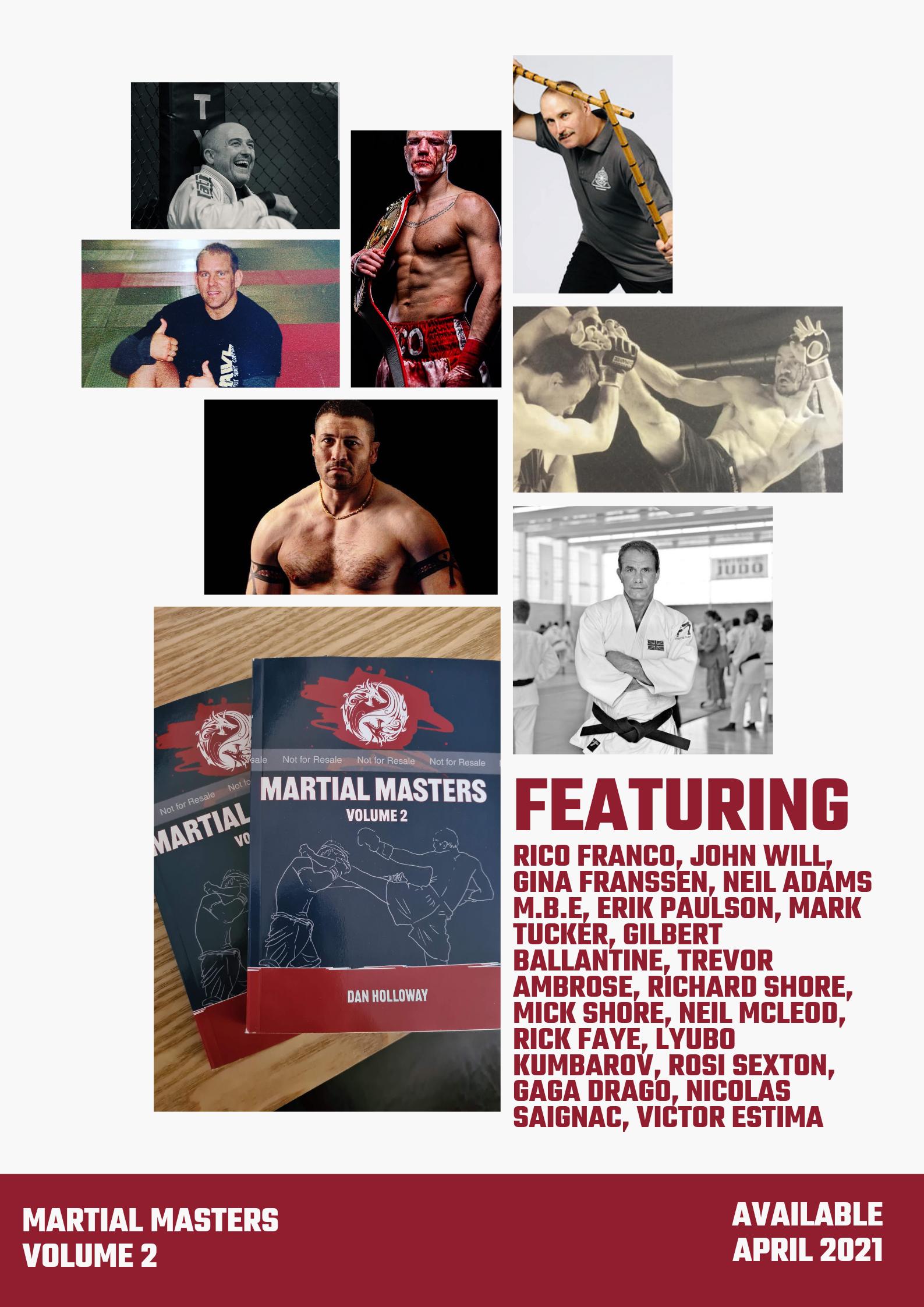

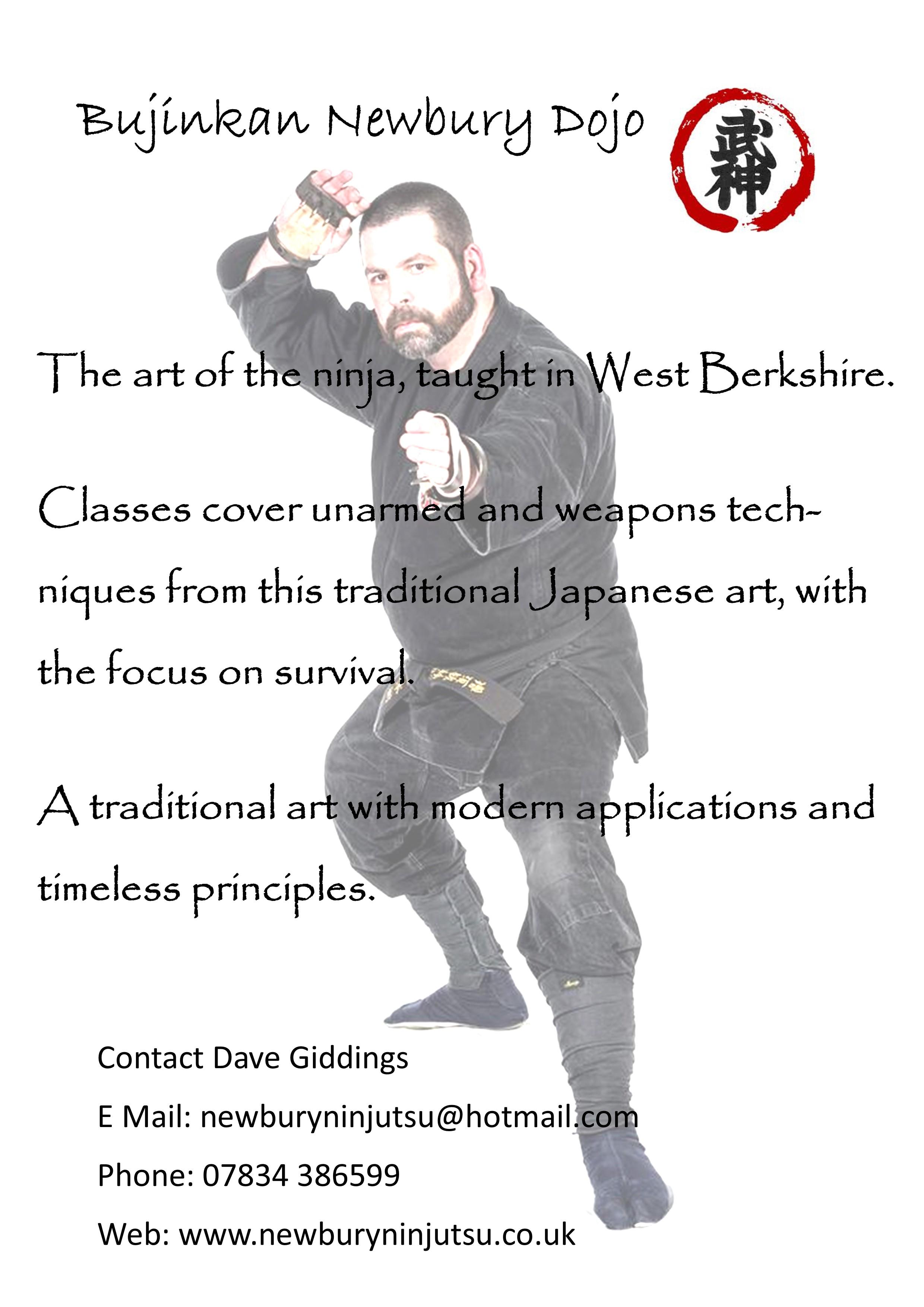
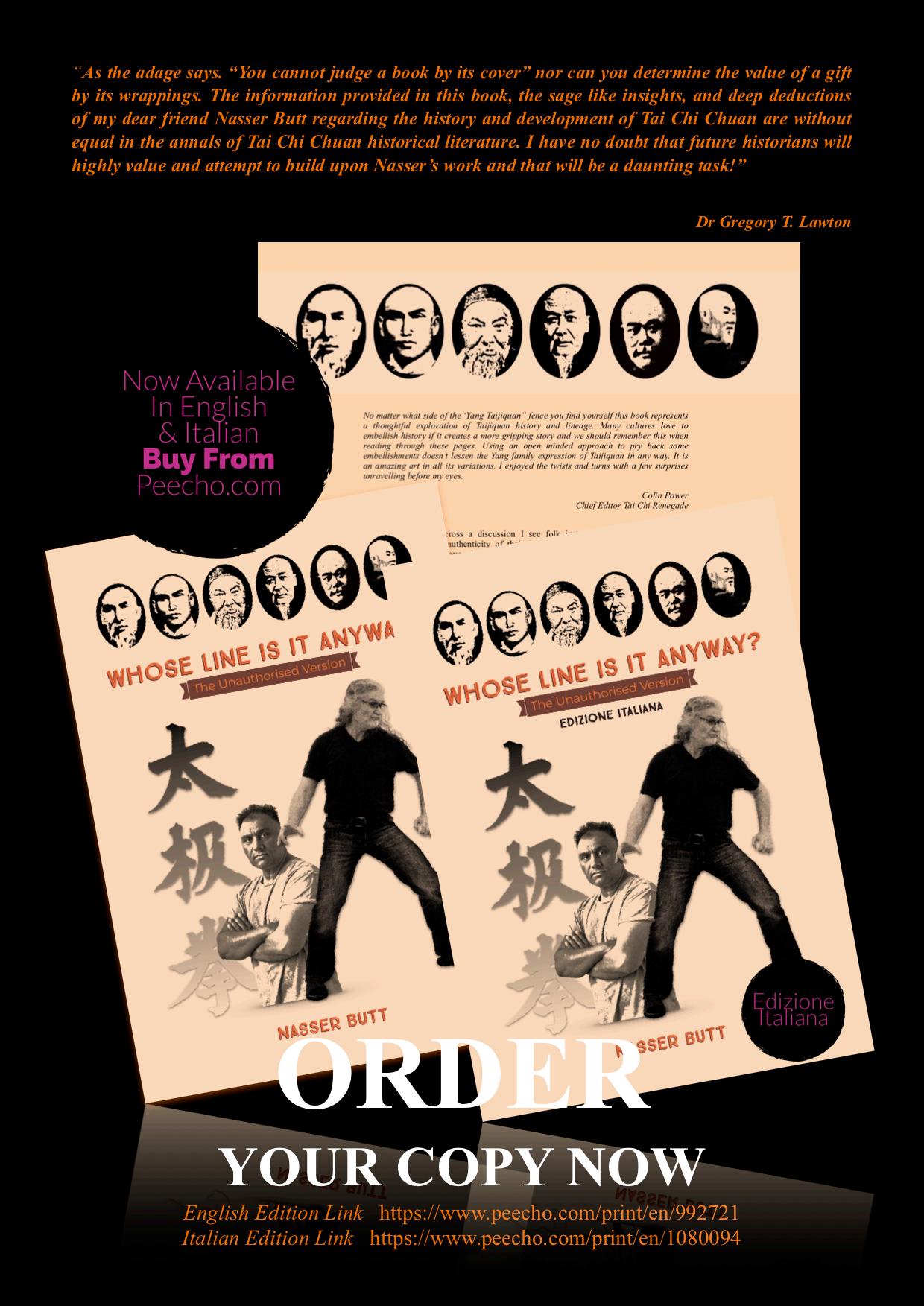
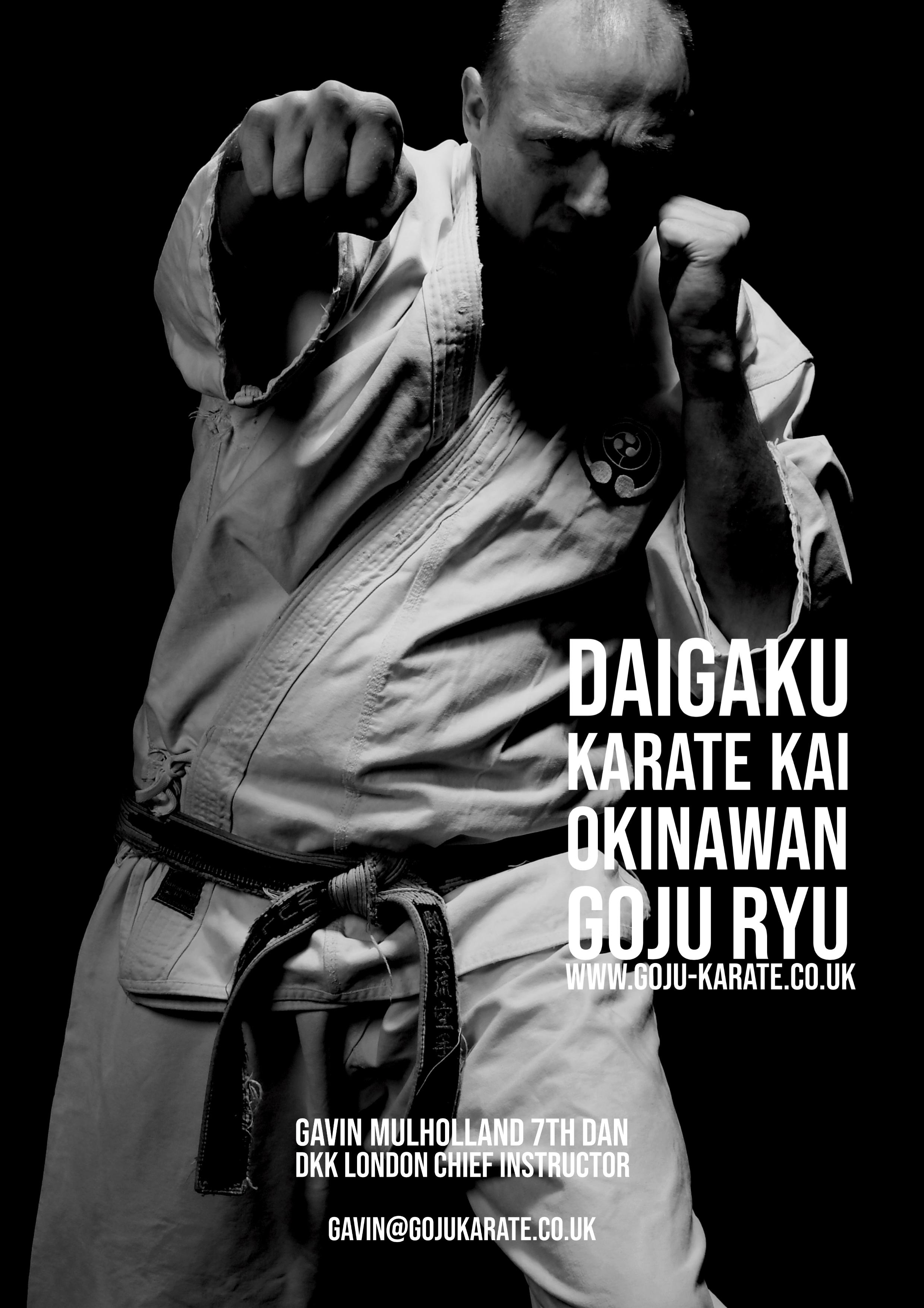

Yasser is not only a top notch practitioner of martial arts — he also happens to be a brilliant artist and a wonderful human being too!
We became friends many years ago on FaceBook, through the work of my teacher Erle Montaigue, and although we have never physically met [hopefully, we will rectify this soon], it feels like I have known him a lifetime. We communicate regularly and exchange ideas on both training and life, and share some mutual interests.
I have been wanting to do this interview for some time now and recently got the chance, so I grabbed the opportunity with both hands!
So, let’s dive straight into the interview. Once again, it is in two parts. Part One covers general questions followed by Part Two — the traditional 20 Questions.
Part One
LH: Welcome to Lift Hands Magazine Yasser Sahib! It really is an honour to have you here and share your valuable time with our readership… I know you are very busy setting up your new business venture, so I really appreciate you taking time out to talk to us.
Please give us a brief introduction about yourself and your background.
YB: Thank you for presenting me with this opportunity! I am originally from Hyderabad, India, but have spent most of my life in the United Arab Emirates as my family moved here in 1980.I have a background in the financial services industry and currently own an Islamic Fintech. I am an artist (I paint and sculpt) and got into the corporate world as a means of earning a steady income as art can prove to be a fickle mistress in terms of generating a suitable income needed for the sustenance of my at times hedonistic lifestyle.
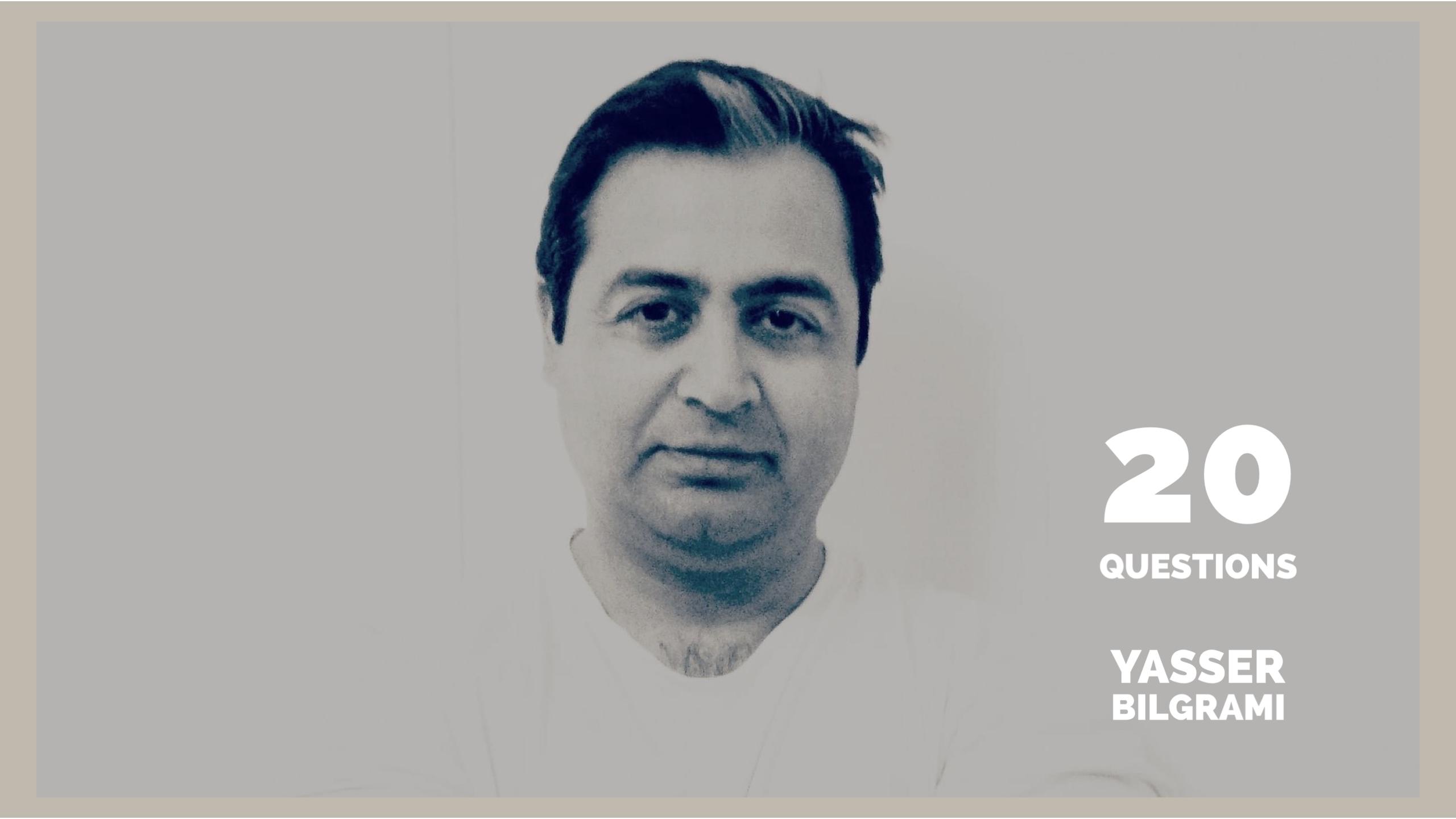
I started my Martial Arts journey 42 years ago at the age of ten in Tae Kwon Do.
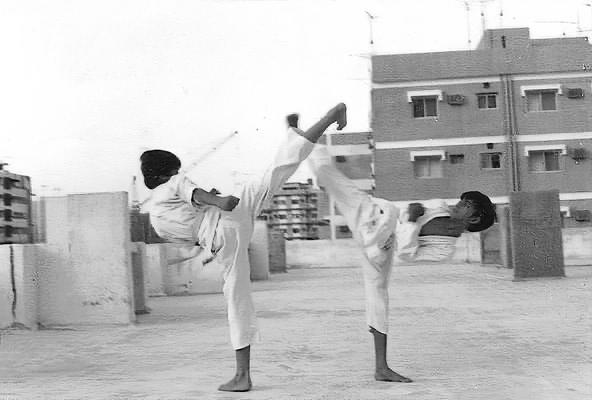
LH: What made you start training in the martial arts?
YB: Thankfully it was not due to any pressures related to incidents like bullying, etc., but due to inspiration derived from a steady diet of dubbed ‘Chop Suey’ Kung Fu movies straight out of Hong Kong.
The choice of available systems to learn at the time in Sharjah (1981) were just down to Shotokan Karate and Judo and I gave these a miss due to my burgeoning love of Chinese Kung Fu. A Tae Kwon Do team was visiting the local schools and gave us a demo which had me hooked and I was one of the first to sign up as this was the closest system I could find that was like the material out of the Hong Kong Movies.
In my pre-teens I would actually kick the stuffing out of the physically much bigger senior boys so my friends and I were always given a wide berth. In hindsight I think the seniors were just generally kind as no long-term grudges/revenge beatings/ambushes were ever administered and we all became and remain great friends to this day.
LH: You have trained in multiple arts — which of these has influenced you the most and why?
I have actually done a deep dive each time and spent years in each of the systems I have trained in, and sometimes learnt two simultaneously (example Wing Chun and Hakko Ryu Jujitsu). In hindsight I can see a clear progression of skill sets that gave me a foundation to augment and perhaps fill some gaps in my later chosen Internal systems and in Hakka Kuen.
“You don’t find Southern Mantis, it chooses you” is an old Hakka saying. My Hakka Southern Praying Mantis Pai has influenced me the most as I have had experiences that most would consider mystical. I read about the Southern Mantis system in 1994 in a magazine that my Tae Kwon Do (and first Tai Chi) master owned. The system mystified me and at the time I was living in Delhi and I would have this instinct to travel to the city of Calcutta as “I would find it there”. I found this notion to be an impossibility as Southern Mantis was extremely rare even within the Chinese community and these were also the pre internet days and as a student with meagre means such an attempt would have been economically unviable anyway, thus, I promptly ignored my instincts.
In May 2009 again based on an instinct I randomly Googled: “Southern Mantis, India” and much to my astonishment I was led to a forum where a young man was defending his Masters teachings to the usual band of internet trolls. I reached out to this young man (now my kung fu brother) who introduced me to his teacher who was one of three gatekeepers of a very old and well-preserved temple origin Southern Praying Mantis Pai that was brought to India at the start of the 20th century and was taught secretly within the Hakka community of Calcutta’s Chinatown (Tangra) for more than 80 plus years. There have also been a few other associated mystically oriented incidents which I feel are too personal to share.
I was made one of the inheritors of this system by my late Sifu with part custodianship of its artifacts that are to be held for the next generation.
Incidentally the system/lineage that was presented in the aforementioned Southern Mantis article (that I still possess as a copy) was shared with me by a good friend who was a direct inheritor of the master that was featured in the article, such is the circle of life!
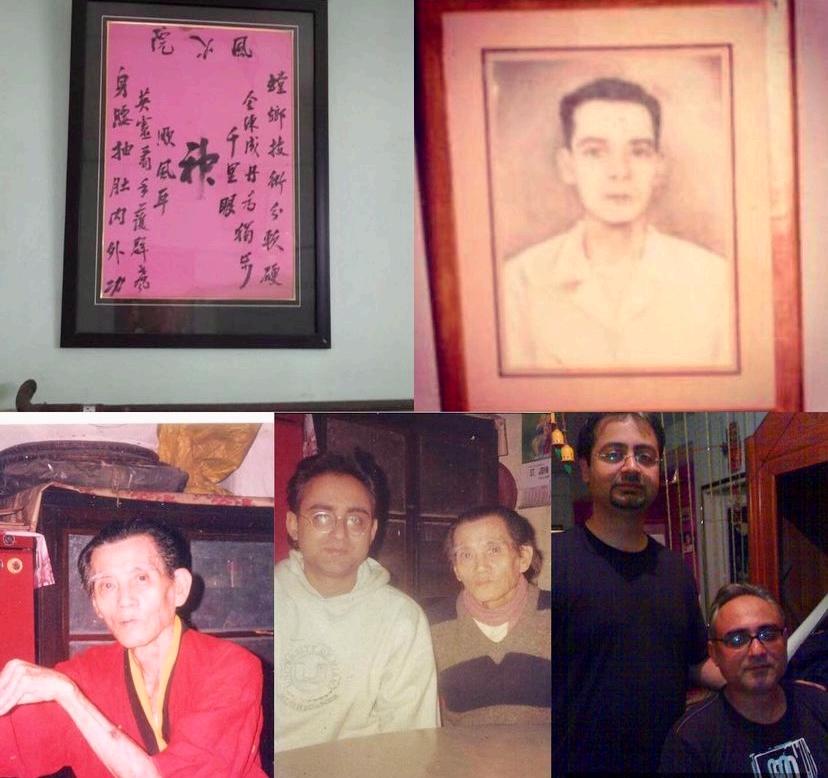
LH: What made you want to train in Taijiquan?
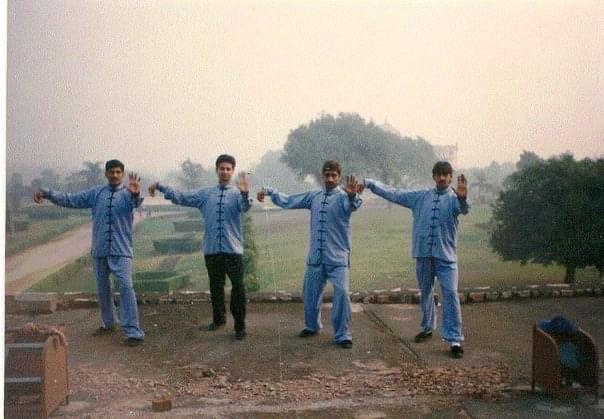
YB: This is another very interesting story and goes back to the year 1979.I was a very naughty child and once tried to uproot a modestly sized tree in my grandmother’s garden in Hyderabad. As an eight-year-old it was physically impossible and I remember the frustration I felt, then all of a sudden it was as if a switch was turned on and I felt this immense surge of power inside me which ended up by having me completely uproot this tree. I promptly ran away and was in secret awe of the resultant speculation between my grandmother and the gardener as they couldn’t get their heads around on how something like this was even possible. Fast forward to the year 1982 and I was reading an article in one of the women’s magazines that my mother owned about a Master in Taiwan (Hung I Hsiang) who performed feats like the one I had personally experienced at will and these were possible through a practice called “Tai Chi”. I knew then that this was what I wanted to pursue as a life-long goal. I have to date not managed to ever re-create that immense surge of power, but hope springs eternal.
It was in the year 1994 that I unwittingly landed up at the house of a Tai Chi master. This was my uncle, Sensei Rashid Ansari, under whom I was restarting my studies in Tae Kwon Do. He taught me the Chen Man Ching version and is one of the few people who can fight very well using what he knows of this system. His energy was and is also off the charts!
In 1997 I reached out to the late Erle Montaigue Sifu and have been an adherent to his teachings exclusively to this day. I am currently now under the able guidance of Nasser Butt Sifu who has corrected my Old Yang form and is teaching me the Small San Sao and the vista I can see is one of infinite further learning under his able mentorship.
LH: Thank you very much for your kind words, I am enjoying our sessions together very much too. I see it as an exchange of knowledge, experience and ideas between us.
Which of the arts have you found the more difficult to cultivate — the external or the internal, or neither?
YB: One must seek the universal underlying natural combat principles within different systems and each system would then further validate itself through these lens and yardstick.
The first real struggle is more about unlearning bad body mechanics embedded through a lifetime of unnatural living and movement (of lack thereof) prior to learning any new methods. This journey is the most important key for all practitioners as once the body gets rid of these impediments then it is free to express itself naturally then the ‘internal’ or ‘external’ are only dependent on what system you are pursuing. The best tools for this unlearning aspect are either one of the three internal systems of China, XingYi, Bagua and Taiji.
In my personal experience I have found Bagua to be the most potent system for not only unlearning bad body habits but to also develop the body’s hidden powers in a span ranging from between 6 to 9 months of consistent training. Here I speak directly of my own experience with my students over the decades and only of the two Cheng lineages (one from Beijing and the other from Taiwan) that I have been studying since 1996 and therefore cannot comment on other curriculums. The development of such powers is also a guarantee that I give a prospective student provided that they put in the required work.
I would however advise a new prospective student to ignore Taiji as a first choice as 80% of what is out there currently is beyond appalling. A competent Xing Yi master or a teacher teaching a non-extended form heavy version of Bagua would be an ideal candidate for a beginning journey. The Xing Yi ‘5 Element’ fists, the circle walk with the ‘Mother Palms’ along with the classic Single and Double palm changes of Bagua are a very potent method for imparting a solid skill set across all levels.
In the end it is all about the intellectual/physical/common sense energy that you put into your training under the tutelage of a competent teacher that determines how challenging the onward journey will be.
LH: How do you see the future of your art in particular based on the present, compared to the past?
YB: I think that the ‘Shelf life’ of TCMA is fast approaching extinction as most young people now gravitate towards MMA/BJJ etc, if something radical is not done soon. The once potent traditional systems and methods are bogged down with intense dogma and the majority of adherents are busier with posturing about who is correct and who learnt the real deal, etc. Many do not realize that as China was a huge country, the kung fu guys of the day’s past were fighting other kung fu guys who although seemingly visually and technically diverse had also drawn their material from the same base sources, therefore, how can one still continue training in methods that address these limited scenarios? One needs to see what is out there martially in the current environment and adapt the time-tested principles of Chinese Kung fu to address this. It would require the dissolution of a lot of added on obsolete junk and a rebooting of the core basics.
As for my chosen system Southern Mantis, a strong training in the foundation, the core power form and the rest of the forms broken down into San Sao (small combinations) and these trained with a partner, initially compliant then fully non-compliant as the particular lesson is expanded upon is the way forward for me personally and I suspect that this is how it may have been in the past as well.
LH: What do you say to those keyboard warriors who spend more time critiquing endlessly in forums instead of spending that time training and bettering themselves?
YB: I think the forums reached their zenith sometime in the mid 2000s and then died a natural death as everything except for real information is found in them nowadays. The internet and the anonymity and geographical safety it provides users has given an advent to a vast army of ‘hard as nails’ tough characters who are ‘high level’ after a few classes! Most of the commentators in forums are mostly beginners or someone in the shadow of a “known” teacher and therefore peddling his brand of goods. The ‘known’ teachers are almost usually someone who has published books/DVD Courses/magazine articles etc, and therefore consider themselves to be an authority. I stay away from such forums and couldn’t care less what anyone states, but unfortunately it is usually these half-trained guys who get a beating from MMA/BJJ/Boxing beginners and give the rest of us a bad name.
LH: Any favorite memories or anecdotes you’d like to share?
YB: I was once participating in one of the regular classes of my late Southern Mantis teacher and was wearing a T shirt with Bruce Lee’s likeness on it, my late Sifu walks by, a cigarette dangling from his lips, looks at my T shirt and states: “I don’t want to see this guy’s face in my class again!” and walks away.
The old Guard just did not like Bruce Lee, I guess.

The second memory is from more than two decades ago. I had started learning Xing Yi for some time and had learnt the five element fists. To digress a bit, I was usually made to stand at the beginning of a straight road and tasked with performing one of the fists with the correct associated body mechanics framework along its length and subsequently due to this method I can still to this day perform them with a lot of power.
To get back to the story, I was watching as a part of an audience the antics of a famous system from way east on stage. The practitioners were breaking Ice, bricks, boards and other sundry items for the audience’s approval. At the conclusion of these theatrics the main master stood bare chested and invited members of the audience to punch him in his stomach. I volunteered and to my luck was chosen along with three others. I was second in line and watched as the punch of the first volunteer was absorbed easily by the master with a certain relish coupled with a pinch of sneering disdain. When my turn came, I used the Tsuan Quan or Drilling Fist the impact of which made the master only flinch a little (much to my initial chagrin) then his face turned green and he threw up copiously all over the stage. I made my exit sharpish as dealing with irate students and outraged promoters was not within my mental or physical band width. Once I recounted this incident to my Sifu he stated that the corkscrew inherent in the punch would have penetrated straight to the small intestine of this man and hence he vomited and I was also suitably admonished, though secretly we were both pleased as punch.
LH: How do you spend your time when you are not training?
YB: I spend most of my time in isolation where I make artwork, study a given subject, prayers and silent contemplation, enjoy a coffee while the world passes by, catalogue my vintage Palitoy Action Man Collection, etc. I make the most of my time with my family and enjoy and cherish these moments. As a rule, I don’t watch TV or even most mainstream movies.
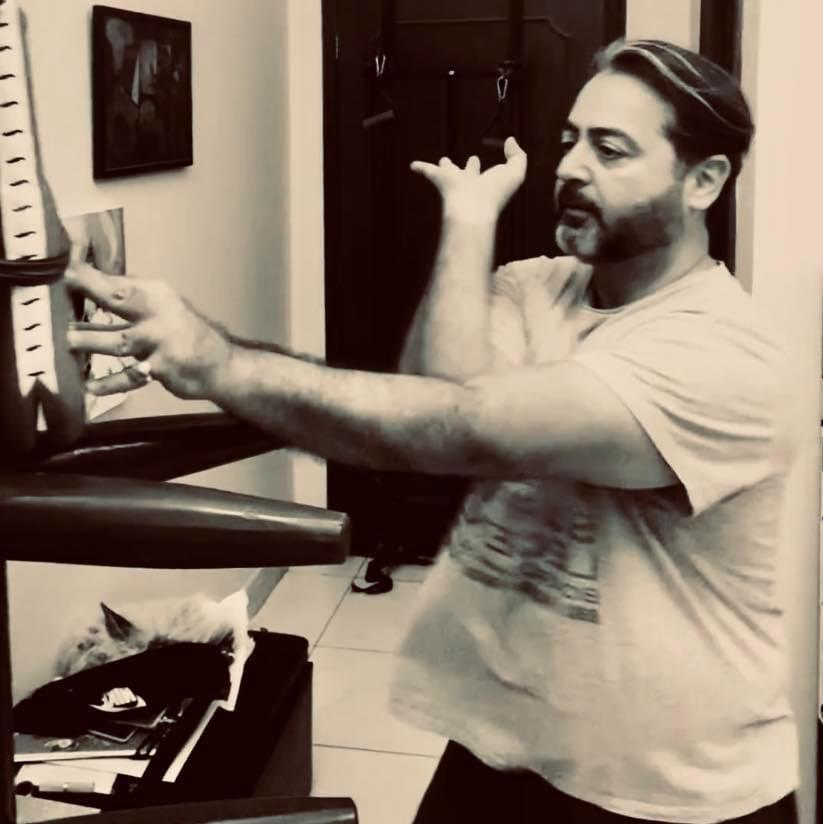
LH: If you could go back in time and do it all over again — would you change anything?
YB: I would only wish that I had learnt Wing Chun as a first system as that foundation and confidence would have been the correct tools for me to navigate the world when I was on my own, otherwise, I would not change a thing.
LH: Any person who you would have liked to have trained with and why?
YB: I would have liked to train with my late Southern Mantis Sigung Khian Seung Hsiung or the late Juk Lum Southern Mantis GM, Henry Poo Yee as these two individuals were the epitome of hidden power. It would be interesting to also have trained with Yang Shao Hou as the Taiji ‘hand’ would have had a certain refinement to it once it would have reached him.
LH: Any tips or advice for our readers around the world who are at the beginning of their journey in the martial and healing arts?
YB: Focus on the basics and foundation training as these are what would constitute the so-called later secret or high-level methods of your chosen system, this is always the case and the most difficult aspect for a beginner to grasp. The internet and YouTube are very good channels for study provided that there is prudence exercised and that these are used as secondary methods of information. In the end it is only the training of the core basics that embed and hardwire your chosen system into your psyche. The holy grail of training is to ‘put the Kung Fu’ into the body through basic boring repetitive training otherwise the endeavor would not be very fruitful. Once a certain proficiency is attained then one must ‘exchange hands’ ie, test out the material against an uncooperative opponent, whether in a friendly manner or otherwise.
Part Two
LH: Thank you so much for your answers Yasser Sahib. In this second part, we ask some fun questions to find out a bit more about the person. You can be as detailed as you like or not. There are no right or wrong answers… just your thoughts.
If you could have personally witnessed anything, what would you want to have seen?
YB: I would have wanted to witness the Antidiluvian world and its destruction through Noah’s flood. I may sound like a fruitcake for stating this but there is enough evidence to suggest that such an event had occurred. As a Muslim it is also a part of my belief system anyway.
LH: What would you do if you were invisible for a day?
YB: I would be pranking people at the local shopping mall plain and simple. The idea of robbing a Bank has taken a back seat as most financial institutions are now digitized and automated and thus ready cash is mostly unavailable.
LH: As a child, what did you wish to become when you grew up?
YB: I had always wanted to join the Special Forces of the army as a goal from the age of eight but I was dissuaded from doing so. I then made the firm decision of joining the French Foreign Legion at the age of 17 but unfortunately that also did not transpire as I needed a visa for France and it was not an easy one to procure. I am a very good marksman with a rifle, fairly competent with a knife and have a good idea of hand-to-hand combat so I can only imagine how my life may have been.
In hindsight though and with age and maturity I can assess that most ‘Special Forces’ are government sanctioned ‘enforcers’ that mostly engage in clandestine mischief in places where they have no business in being in so I am glad that I did not follow this route.
LH: What animal best represents you and why?
YB: I would guess a Ginger Tabby house cat. A cat is its own master and has a very high and understated physical skill set and a sense of general disdain for people that is legendary.
LH: What is your greatest strength or weakness?
YB: I have an almost photographic memory and the eye to analytically discern underlying movement principles which greatly helped me in my martial art career and I cultivate a beginner’s mindset always, this can be a double-edged sword as I have a constant struggle with laziness as things come easy and also some people mistake my candor for weakness and therefore choose paths which lead to mutual regret. Life is a constant struggle of improving upon oneself and I hope to present the best version of myself as is possible when it is time for me to move on from this plane.
LH: What is your favourite memory of any one of your grandparents?
YB: My late maternal Grandfather was a practicing Sufi and had seniority in two Tariqas (lineages). All my waking memories are of him praying throughout the day.
My most favorite memory of him was when he was visiting us once, I was 16 then and had grown to my current height of 6 Feet and at the time I weighed around 80 Kgs (the context will be understood as you read on).He was sitting at the dining table and praying, I started walking past him and intermittently annoying him by grabbing and shaking his forearm, this went on for a while and upon my sixth forearm grab attempt, I felt a jolt like a mixture of air and electricity lift me up physically and send me flying across the room to land unhurt on a sofa. During the same visit my younger brother who is the same size as me was annoying our grandfather as well and my grandpa held one of his forearms and the side of the neck which made my brother slump slowly to the ground and he later stated that all he could move were his eyes. When we pestered him to tell us how he did this he flatly stated that these are just some abilities that are developed randomly through the meditative and prayer practices and not something that is sought as an end result. The opinions and the belief of the readership are highly irrelevant here.
LH: How do you want to be remembered?
YB: I would like to leave a body of artwork and writings on martial arts behind regardless of whether these are acknowledged by the public at large or not.
LH: What have you always wanted and did you ever get it?
YB: I want a Bugatti Atlantic Type 57 but the price tag of US$ 56 Million is dissuading me somewhat.
LH: Do you know your heritage?
YB: I have a rich heritage from both my parents. My paternal side were royalty with their own fiefdom once and it was/is called ‘Bilgram’ and my maternal side were intellectuals and generational Sufis.
LH: Are you still learning who you are?
YB: I am very much doing so but I also kind of had an idea as to who I was at a very early age and have spent the subsequent decades in building around this basic core. Life is a work or art and the canvas is always being repainted anew.
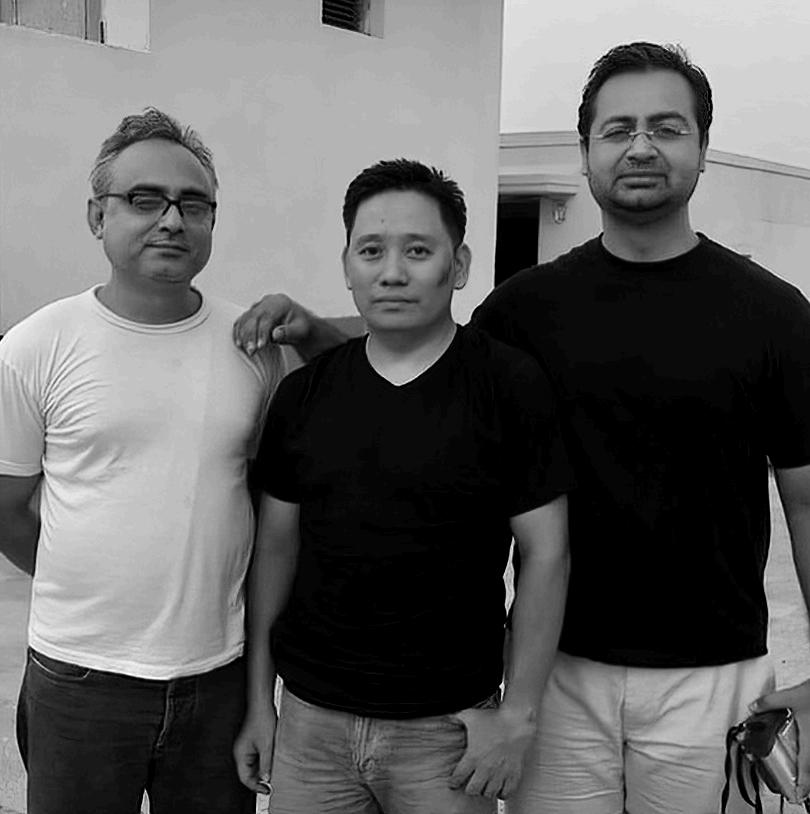
LH: What, if anything, are you afraid of and why?
YB: I value my freedom and therefore incarceration in a prison would be something that I would not be able to countenance at least initially.
LH: What is the most memorable class you have ever taken?
YB: I once was play sparring and had a monkey kung fu boxer climb all over me like a rash in his front yard and subsequently a few years down the line a student of mine who had learnt BJJ did the same to me in a park. The two occurrences were memorable as I realized the havoc such a skill set would play on me had this been a no holds barred affair.
LH: What book has influenced you the most?
YB: I look for all my answers in life from our Holy Quran and otherwise I am a voracious reader and there have been many books that influenced me at certain points in life but Jonathan Livingstone Seagull by Richard Bach stands out.
LH: What ridiculous thing has someone tricked you into doing or believing?
YB: Both my parents were experts at spinning elaborate yarns and my Mum had us believe that Michael Jackson was her classmate at school. It was expertly done and left my siblings and I in wondrous awe for a long time.
LH: Who or what has been the greatest influence in your life?
YB: This would be my parents, my maternal grandparents and my main teacher Sensei Rashid Ansari.
LH: What is the craziest thing one of your teachers has done or made you do?
YB: When I was first learning Bagua there is an exercise called ‘serving teacups’ and the very first time I was shown it, I was given a bowl of very hot tea and asked to not spill a drop while performing this method. I would have seriously scalded myself had there been any errors in my movement.

LH: When did you screw everything up, but no one ever found out it was you?
YB: At school I would concoct elaborate schemes for large scale mischief, spend days in the planning and sit and watch the show while it was being executed. I was never found out as I never gave myself away with such things as boastfully claiming credit, etc.
LH: If someone made a movie of your life would it be a drama, a comedy, a romantic-comedy, action film or science fiction?
YB: I think it would be a Romantic Comedy with gratuitous violence thrown in as entertainment.
LH: If you could select one person from history and ask them one question — who would you select and what would the question be?
YB: I would select the Muslim General Khaled Bin Waleed and would not really ask him anything but would just sit quietly and listen to all whatever he would want to say.
LH: How would you describe your art in ten words or less?
YB: Crippling nastiness on steroids, fearless and stoic as a Mantis!
LH: Thank you so much for your generosity of time and detailed answers to the questions Yasser Sahib. I have enjoyed each and every one of them. We have much in common about many things, which I’m sure we will discuss in our own time. It’s been a pleasure having you here and I hope that we will hear from you in future issues of Lift Hands too.
YB: Thank you!
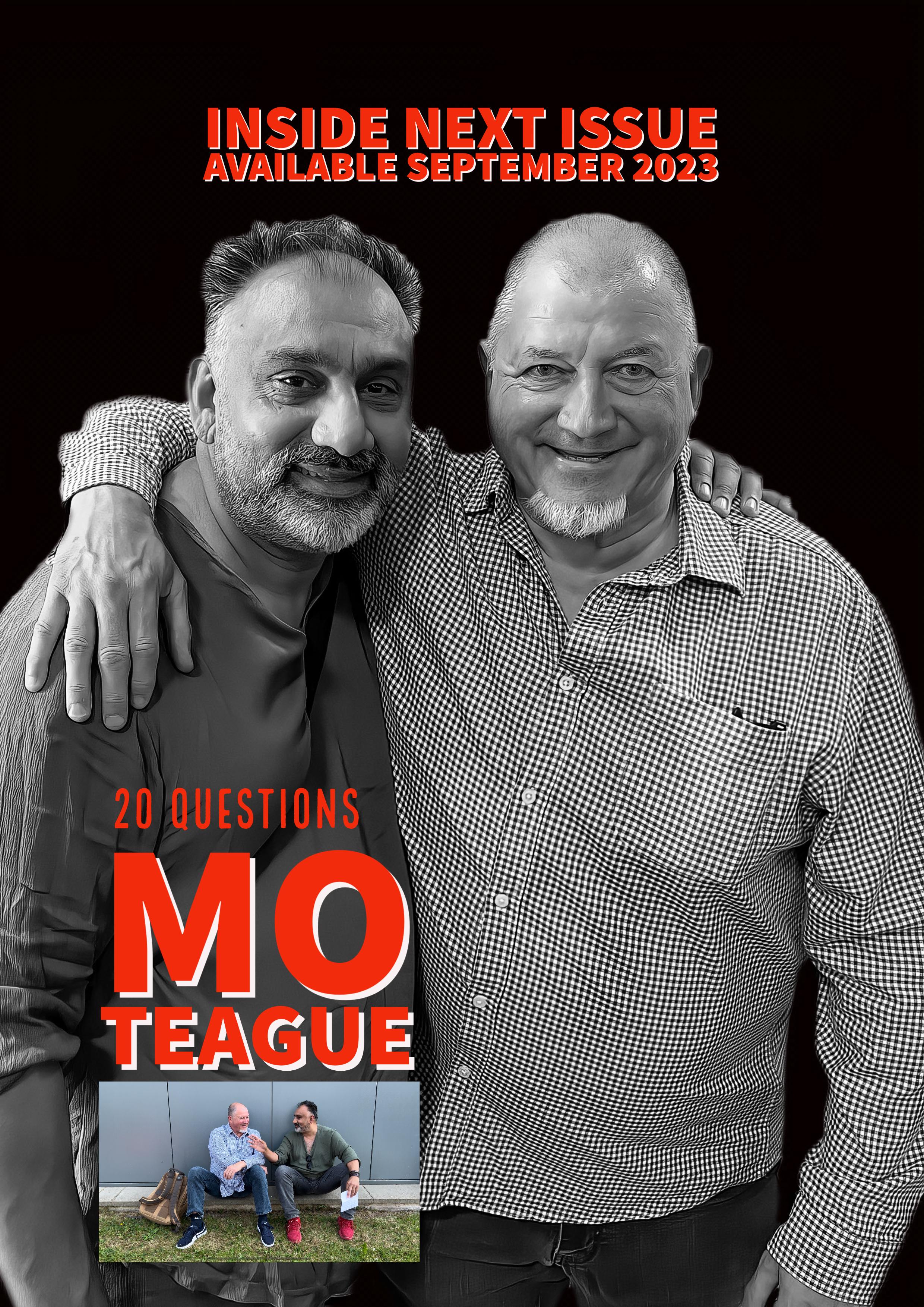
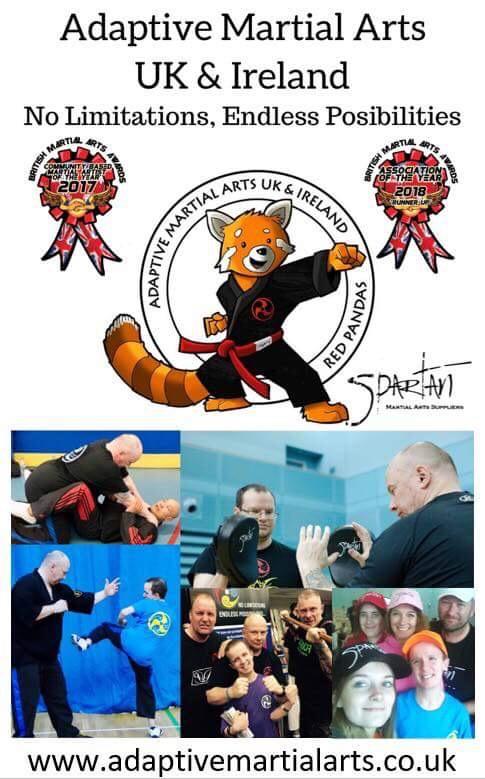

In the international, multicultural community of Martial arts it is not unusual that teachers and students don't share the same language. Is that a problem?
Psychology research proved the role of spoken language in our communication to be quite inferior. Most experts agree that about 90% of all communication is nonverbal. Less than 10% of the meaning of any face-toface conversation is communicated through spoken words.
Learning without words
How do children learn?
They imitate a lot of things, that they are shown by their parents, grandparents and other people. This happens already at the age of about five months. We can easily see that watching and imitating is a natural method of learning. If they pay attention and use their eyes and ears, they will learn the basics by observing.
The same is true for other arts, like photography. Basic elements are taught by showing. If a photo is well done, there is no need for words, because the picture reflects what the photographer has perceived.
In traditional Japanese Dojos feeling and body language were valued higher than spoken language. Many students make progress when they do not understand a word of what the teacher is saying — by concentrating intensely on observation while not being distracted by words.
Teachers have to make the effort to communicate in unorthodox and creative ways. If they act as performers and ensure students to have fun, as well as understand, they will have better results than those who dryly explain. Through the expression of our bodies and our movements, we are able to say so much more than words can tell. As Charlie Chaplin stated: "Actions are generally better understood than words. The twitch of an eyebrow, how ever inconspicuous, can express more than a hundred words!”
Communication by body language is for example facial expressions and gesture, such as a stern look, a friendly smile, applause, thumbs up, thumbs down, quality of the voice, movement, and spacial relationship. All these are important means of non-verbal communication. It was the oldest form of interpersonal communication.
Learning with language
By the time students have mastered the basic techniques, they also have built enough language skills to understand more complicated concepts. For example, when teachers give corrections regarding students arms, legs, heads, hips, verbal feedback will be helpful.
From my point of view as a Karate and Kobudo Instructor, language is helpful in learning an art, but not necessary. Demonstrating a technique or sequences of techniques can be done just as well without verbal communication.
This is created by inner attitude, body language and the individual relationship between teacher and student.
Conclusion
So, the good news for Martial Arts students, especially for beginners is: Language is just a tool. There is no need to worry if you do not know the language of your teacher. If you watch carefully you will learn all that you need. Martial art is not for the perfect person. It is for those who want to get stronger, who want to develop and who want to improve.


